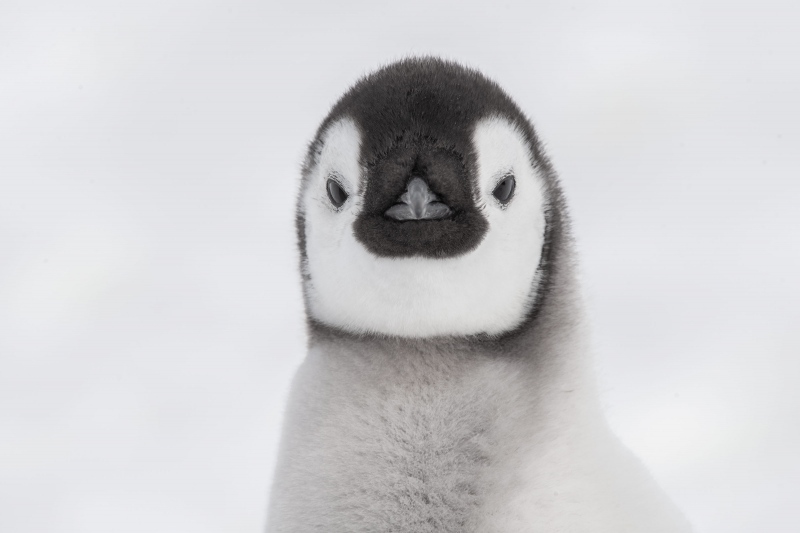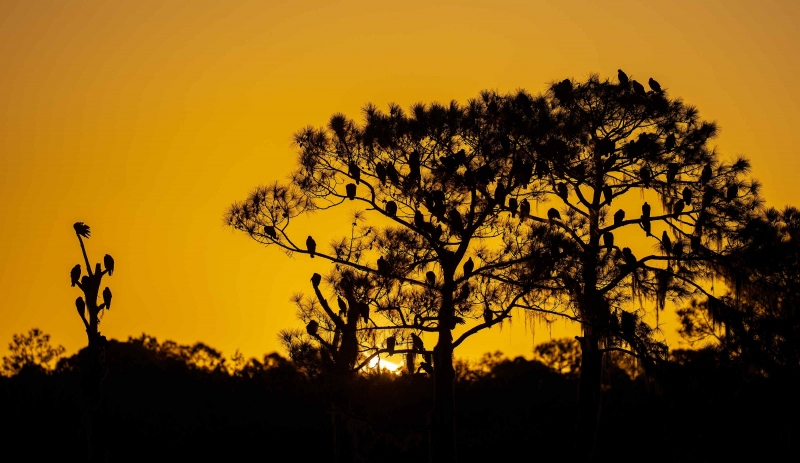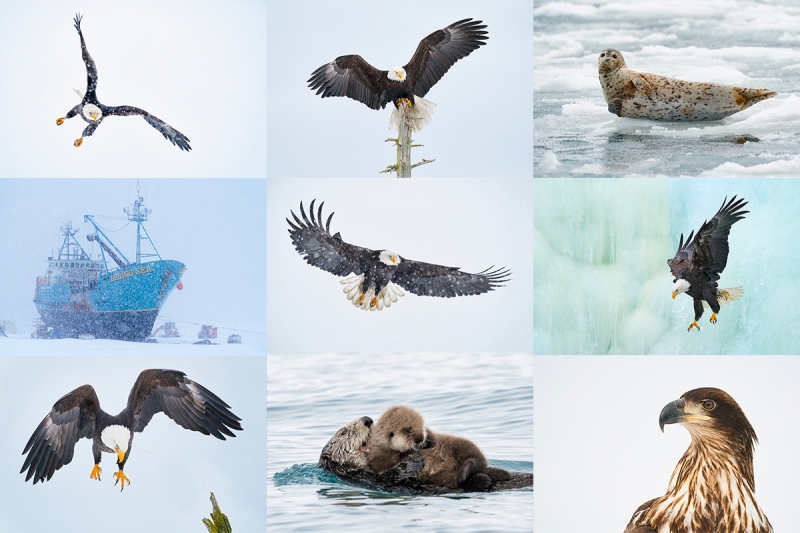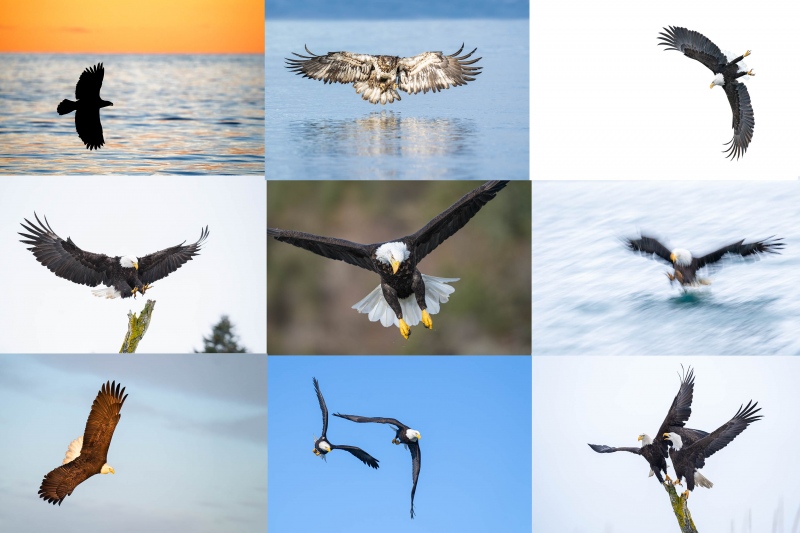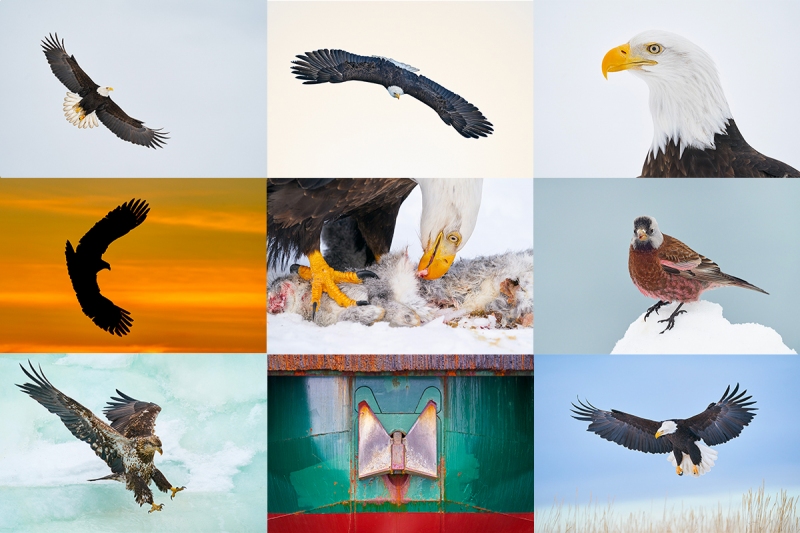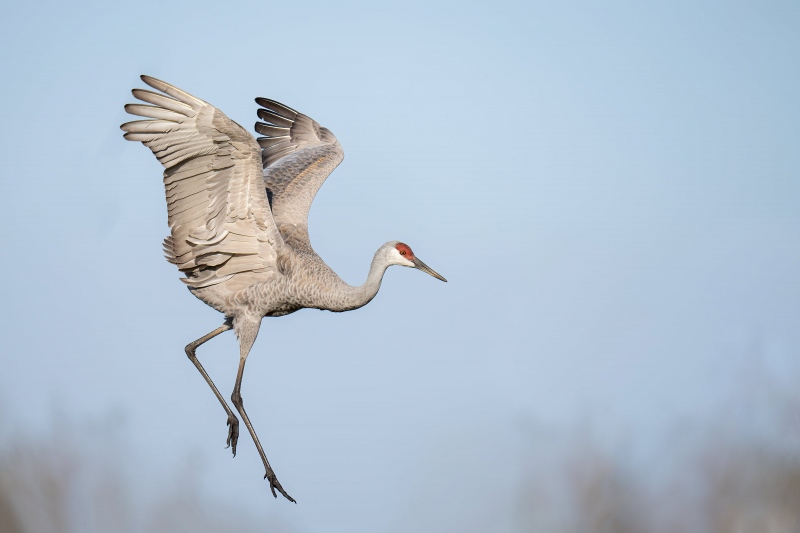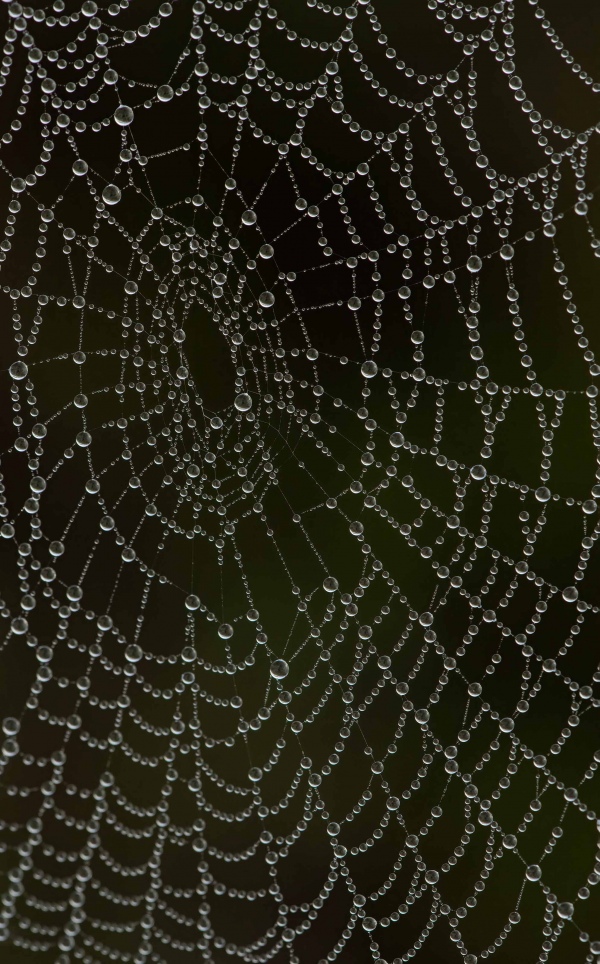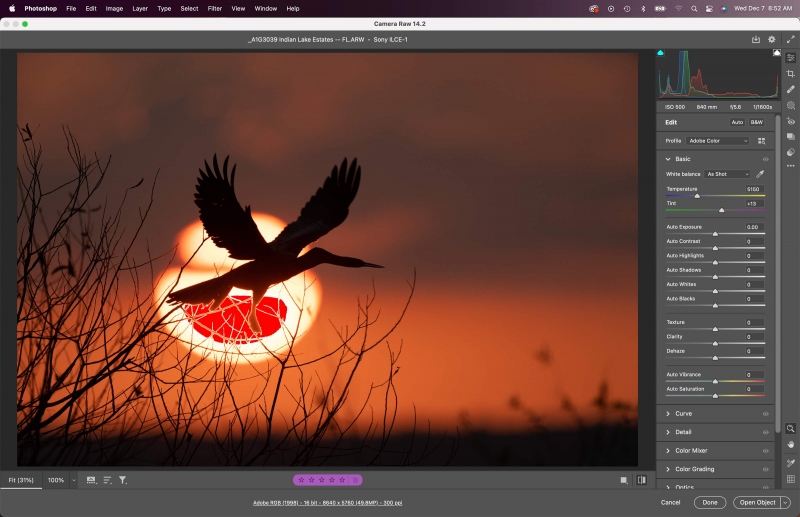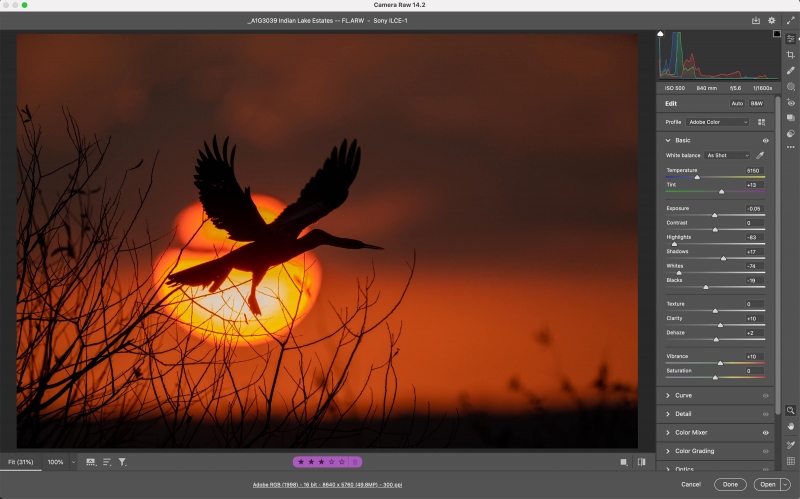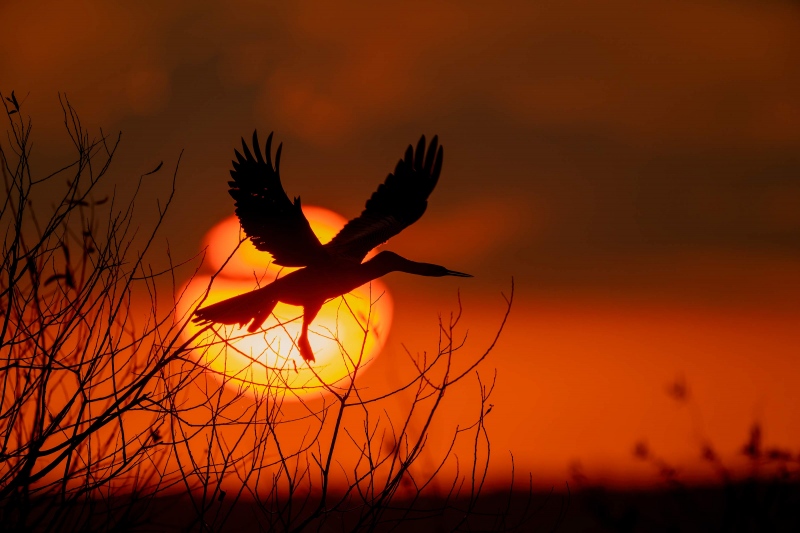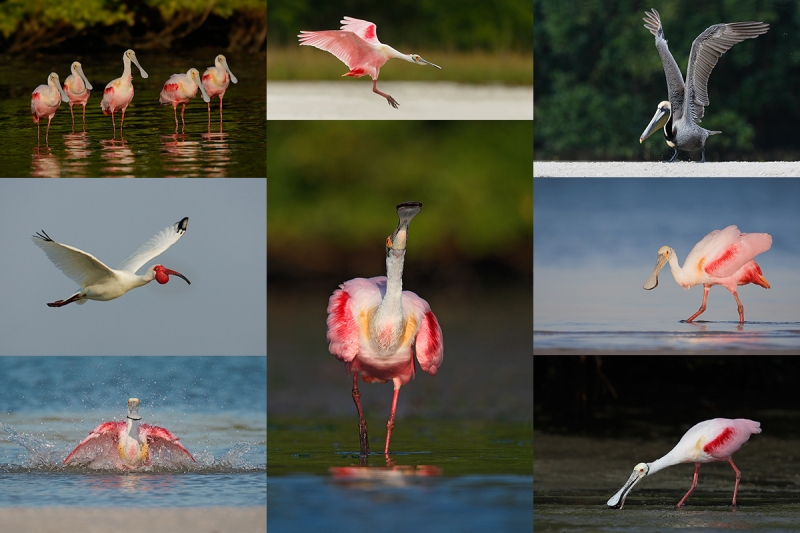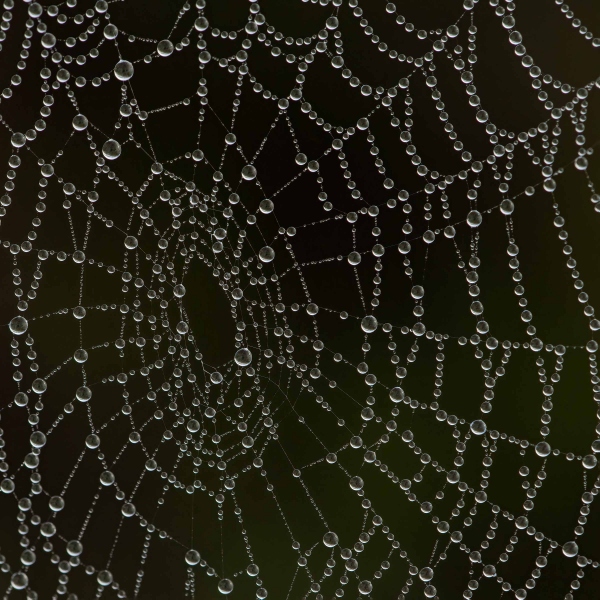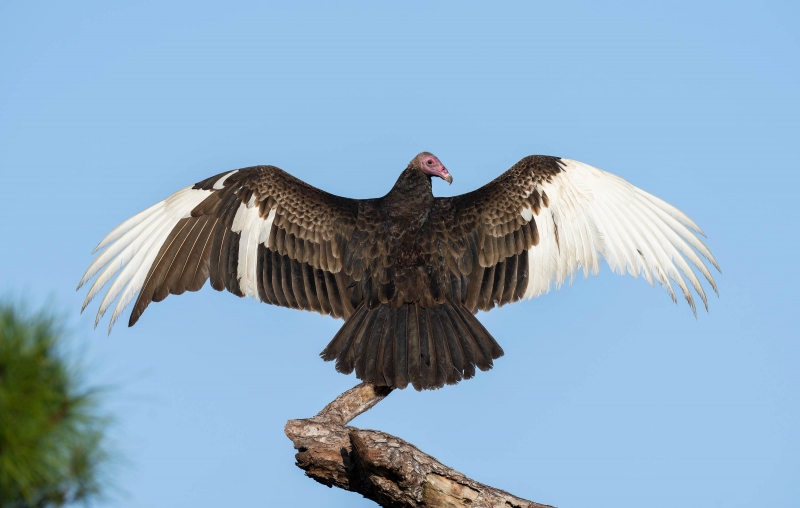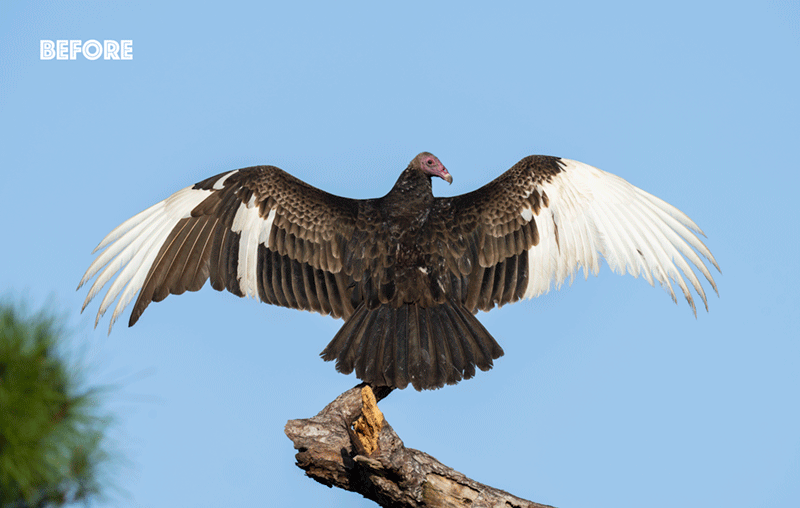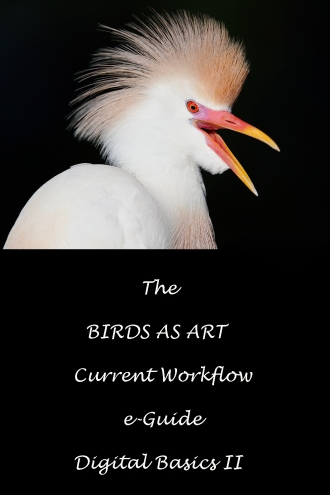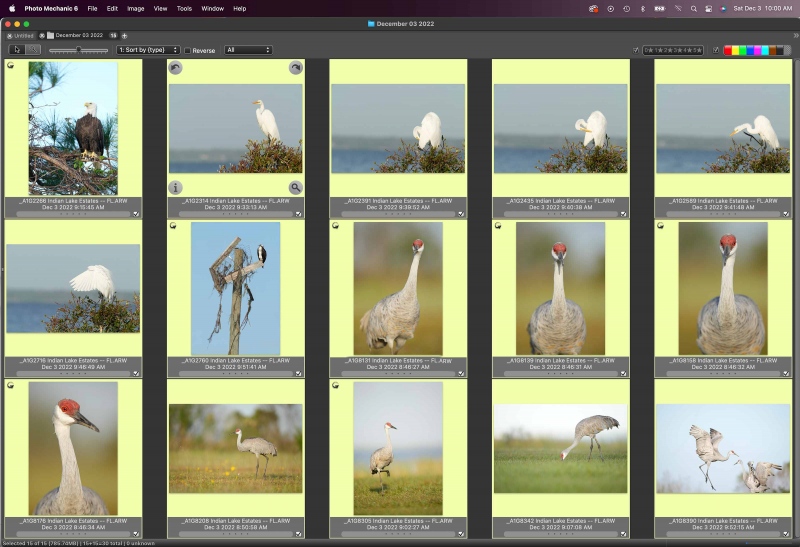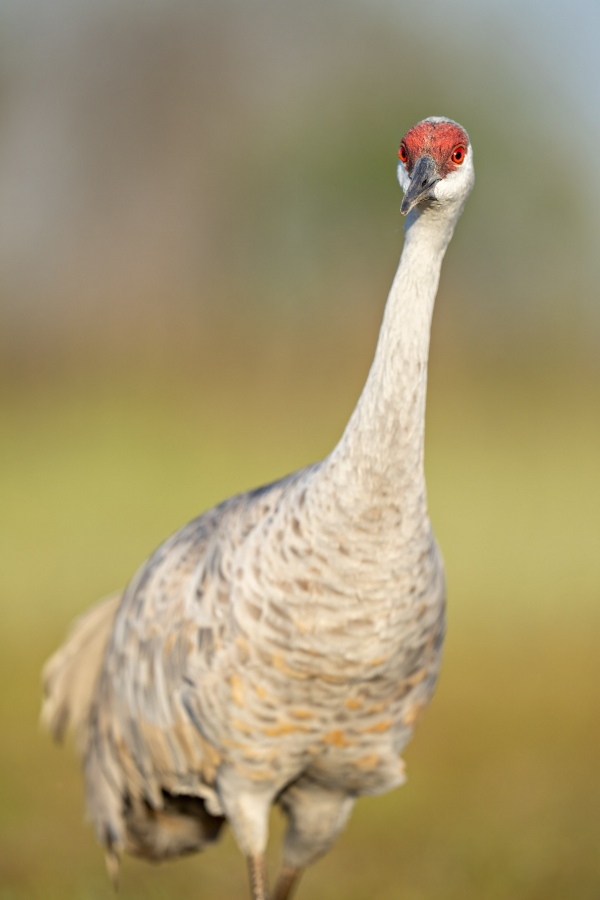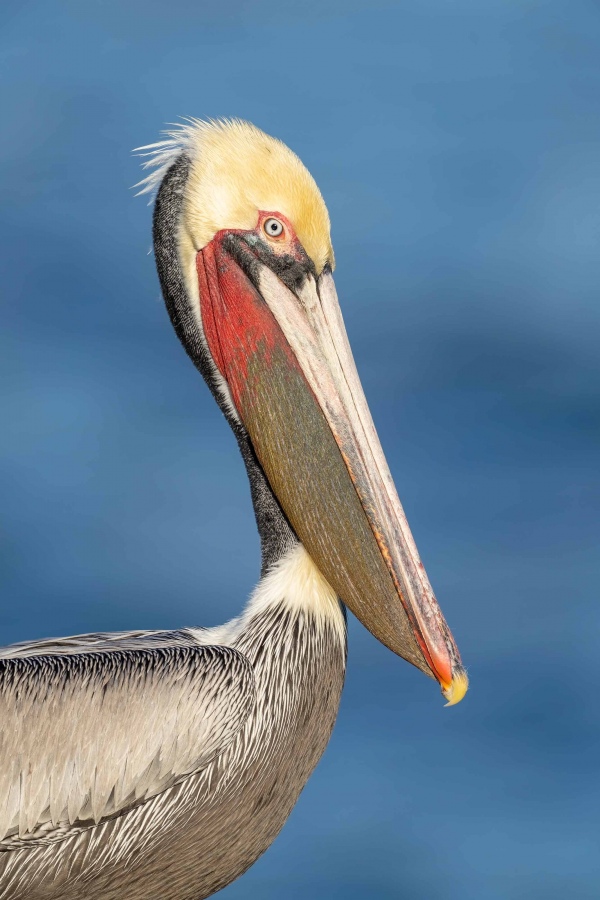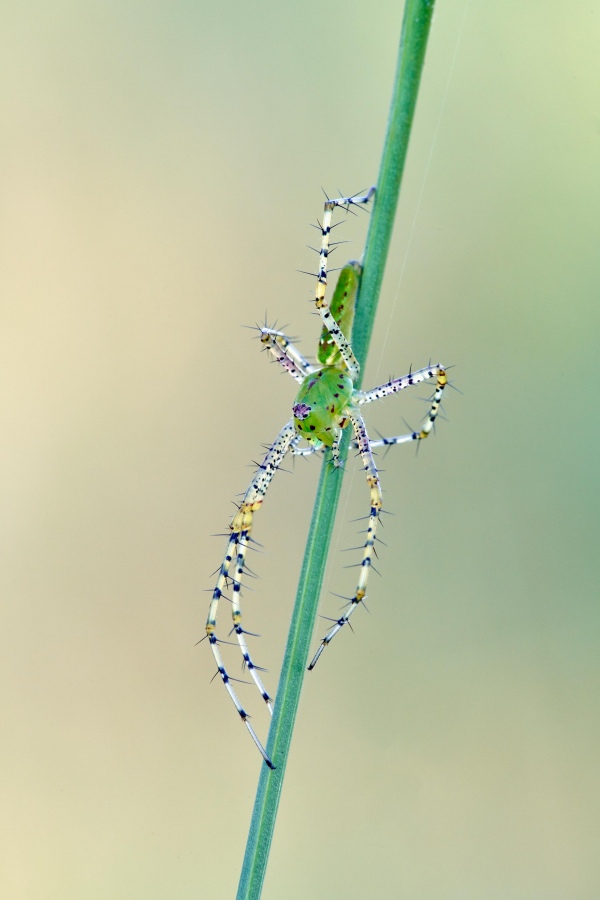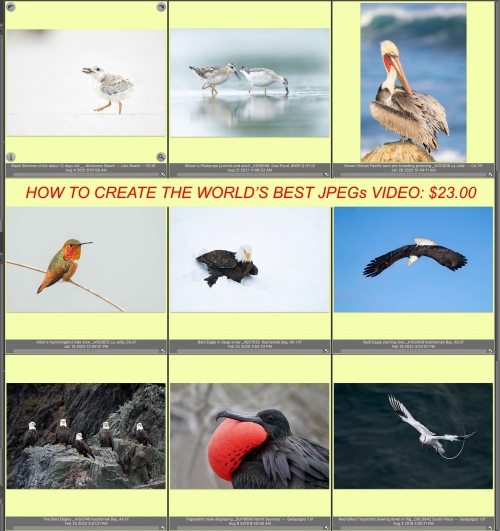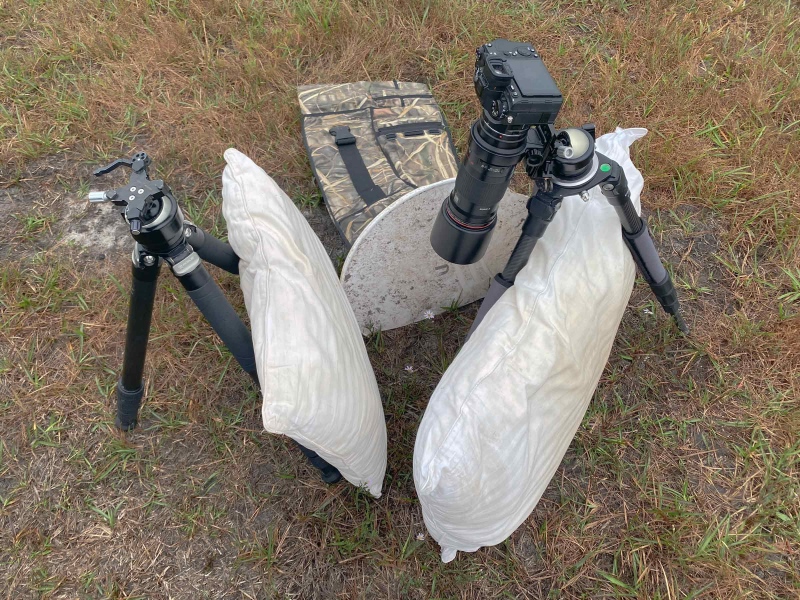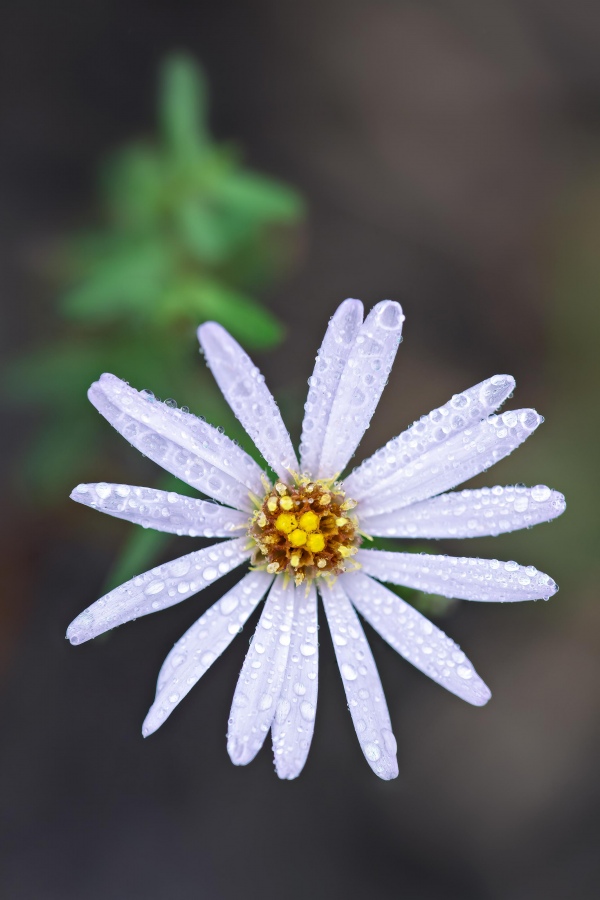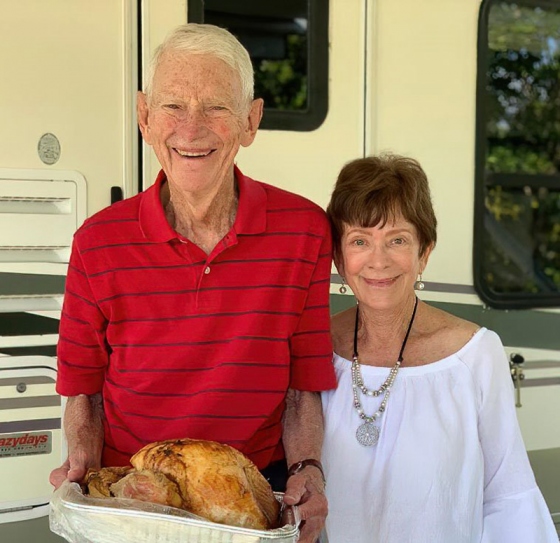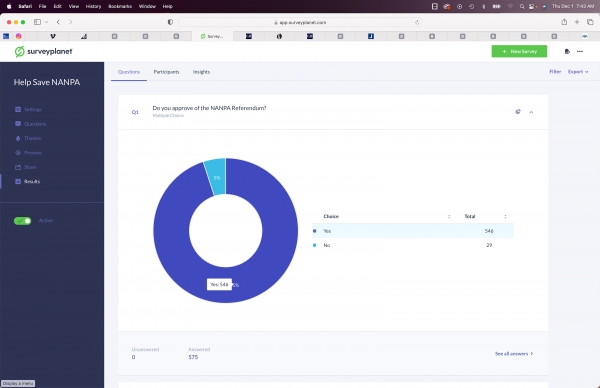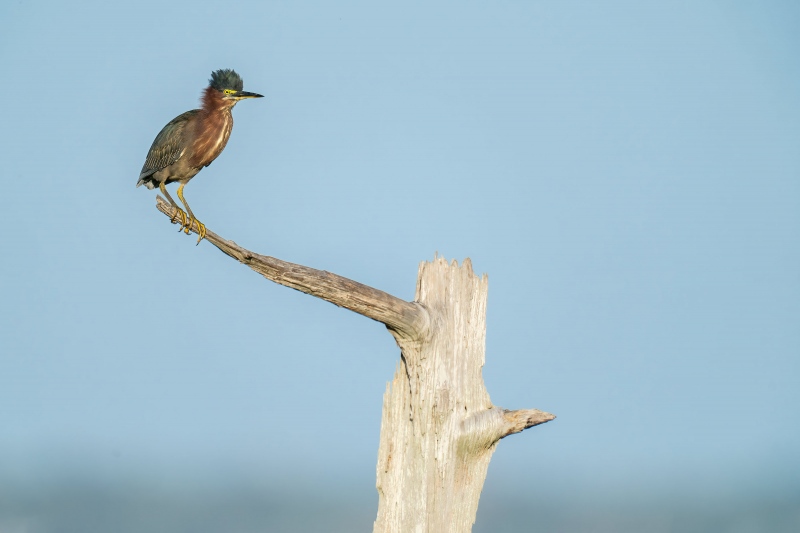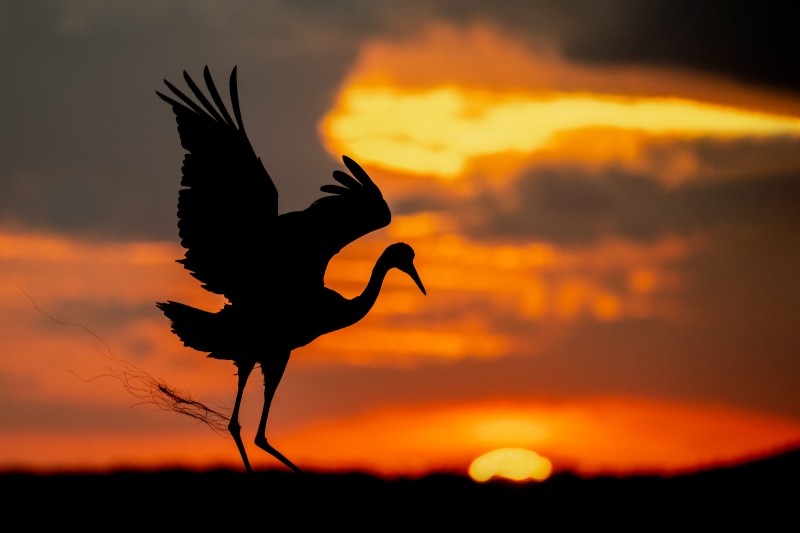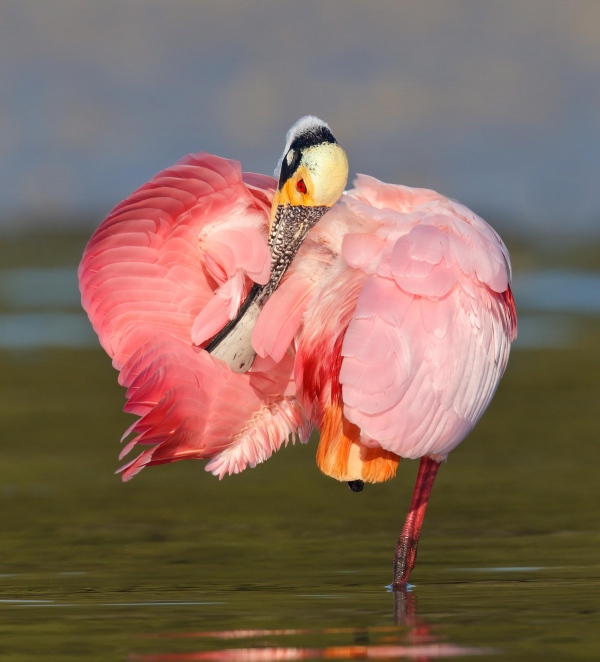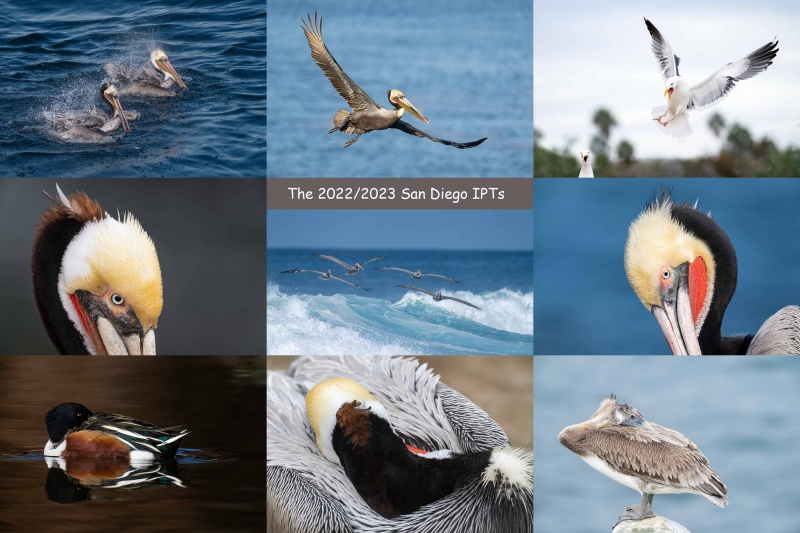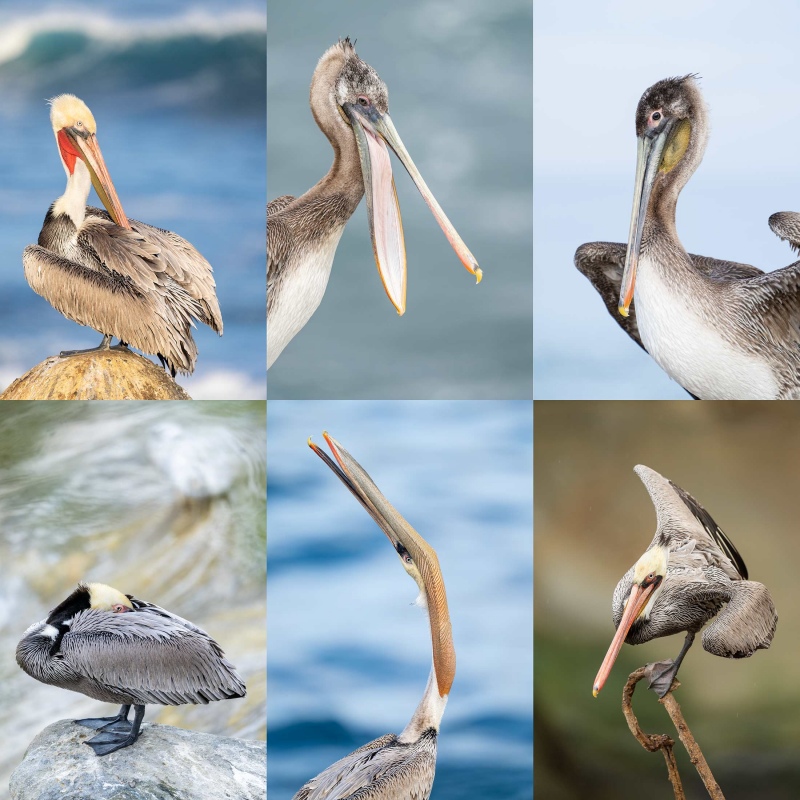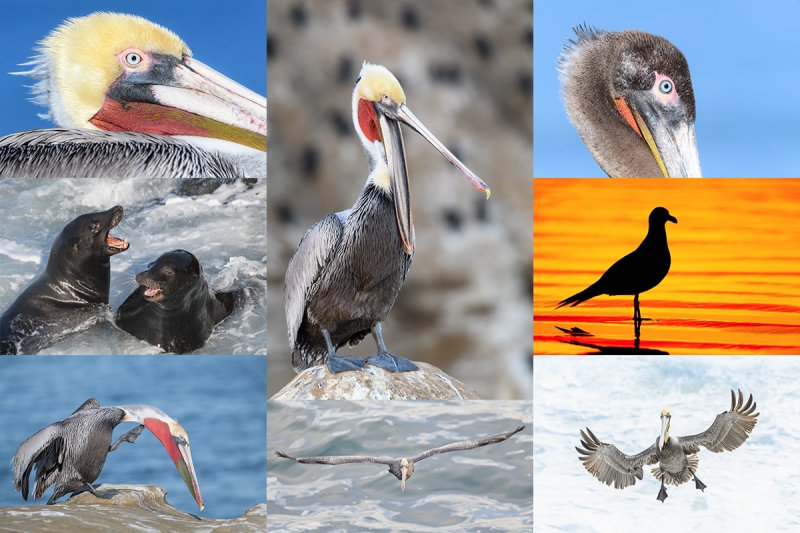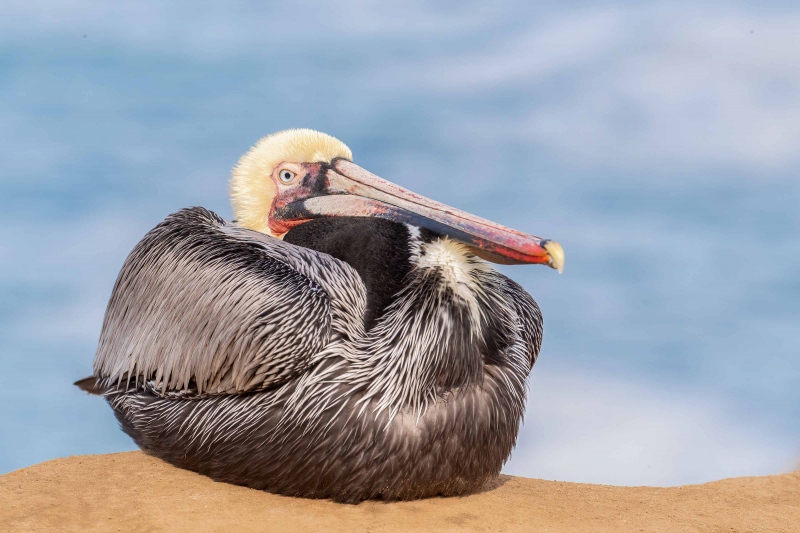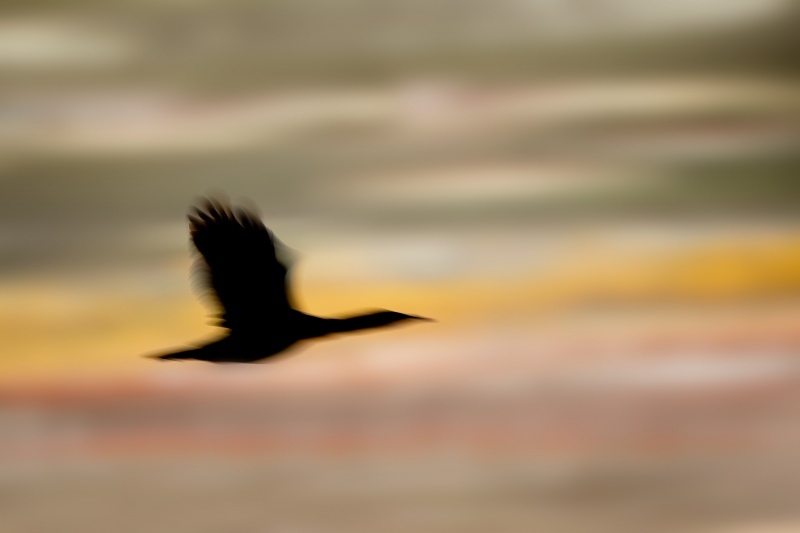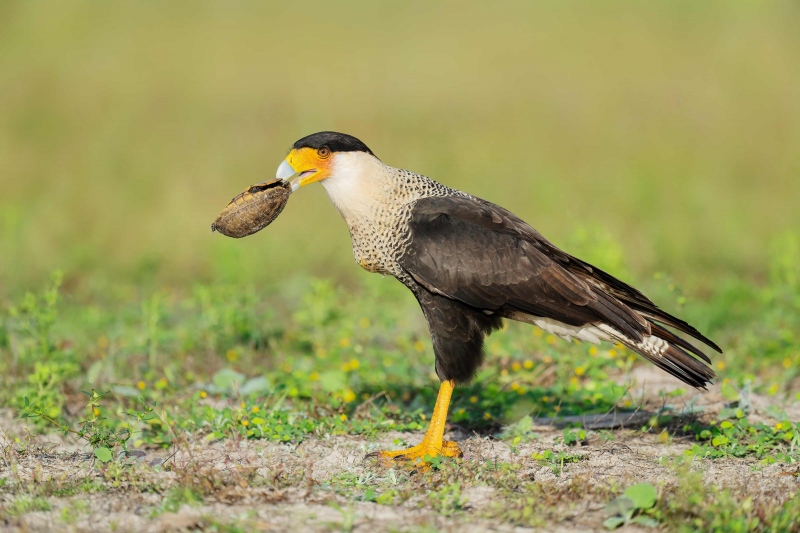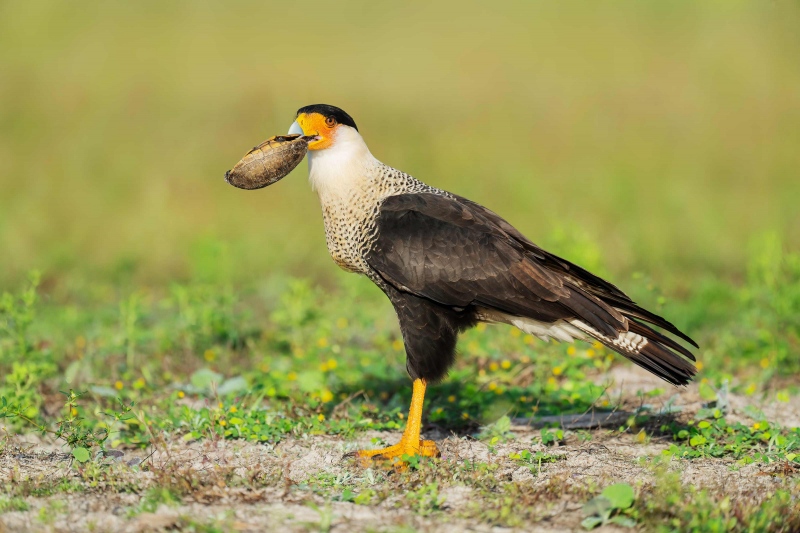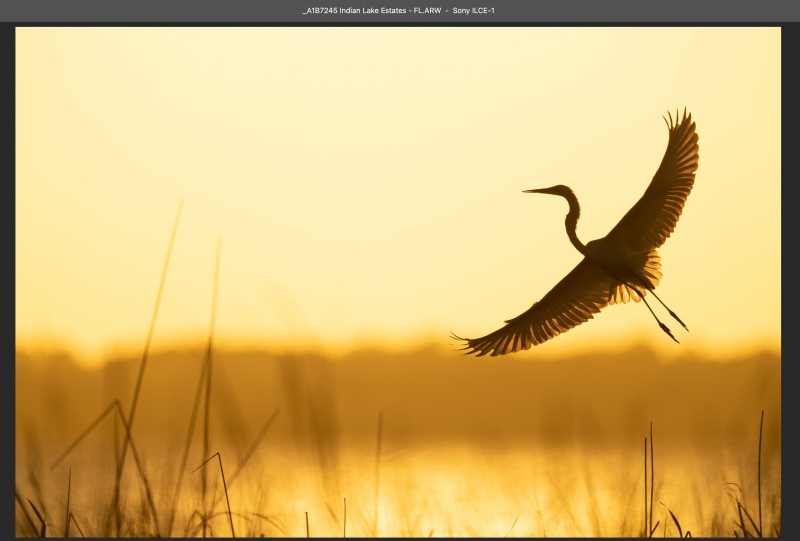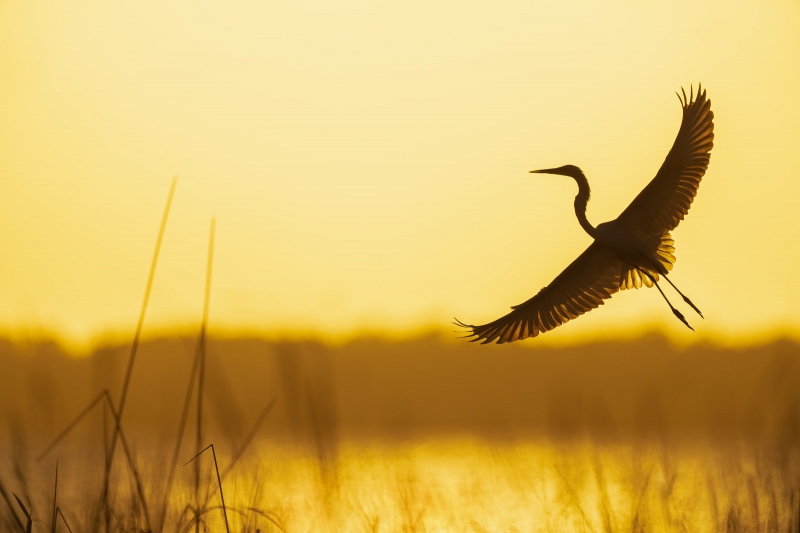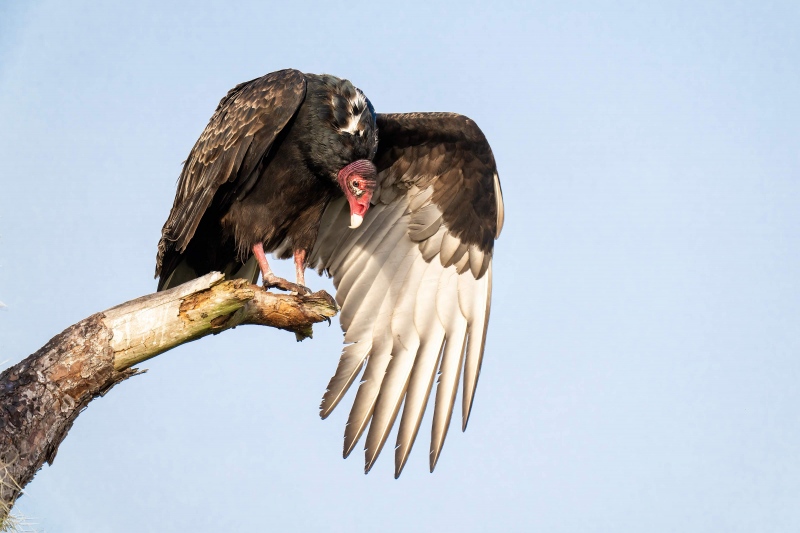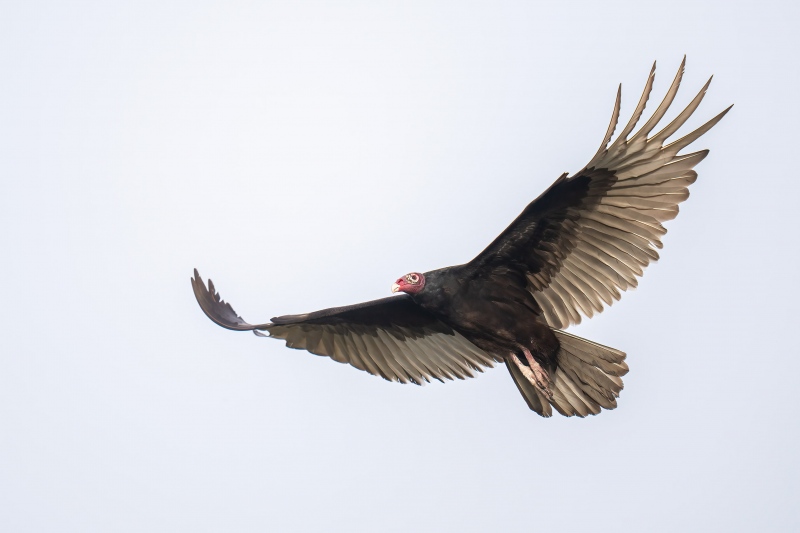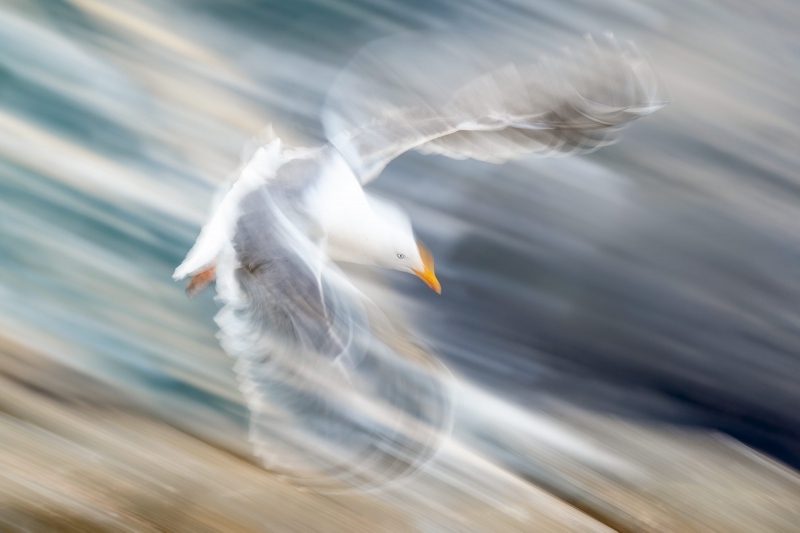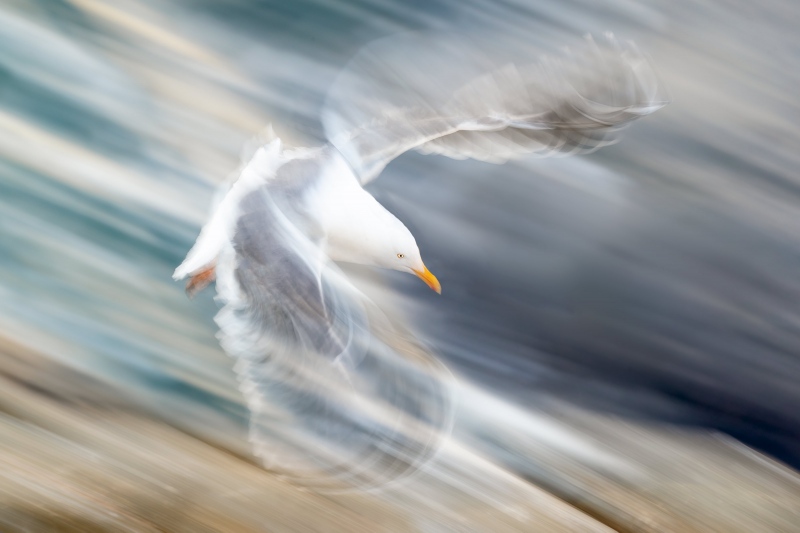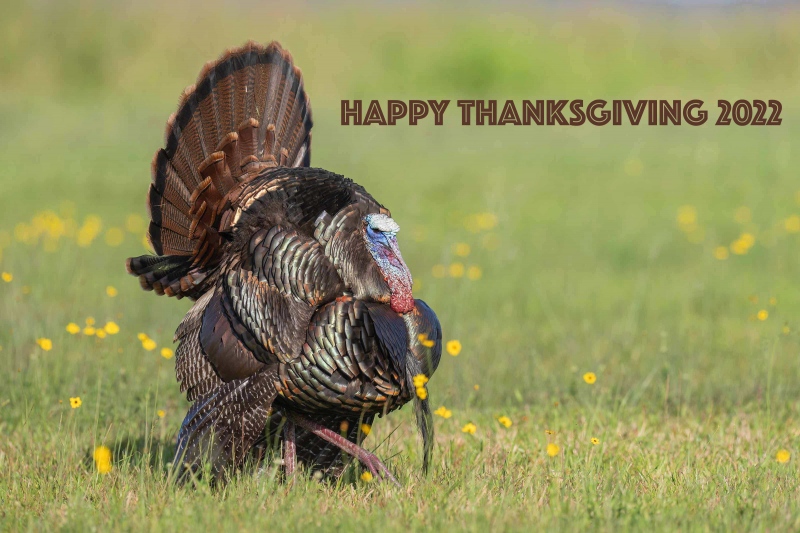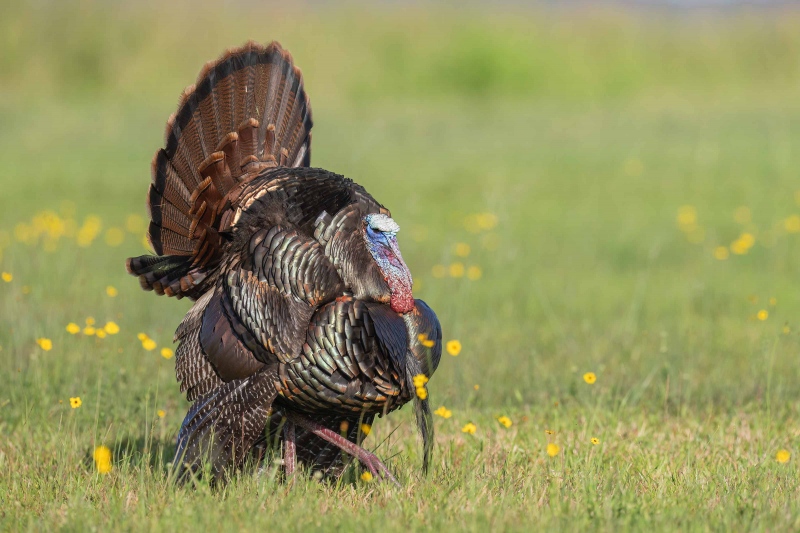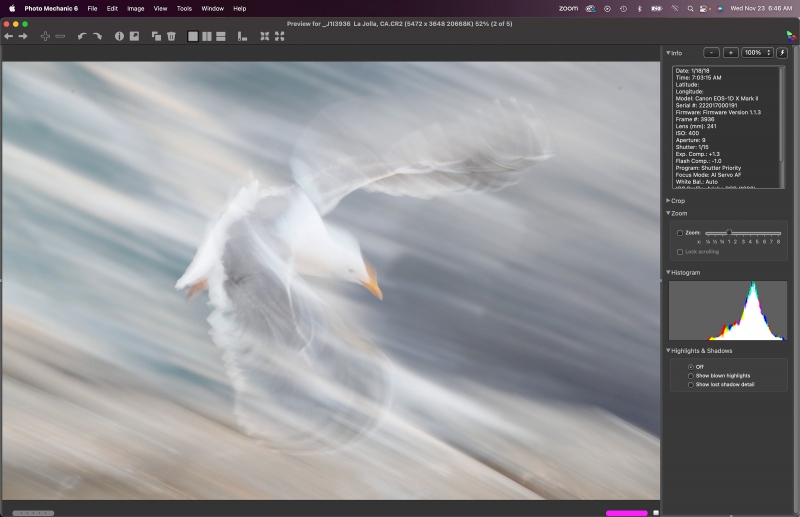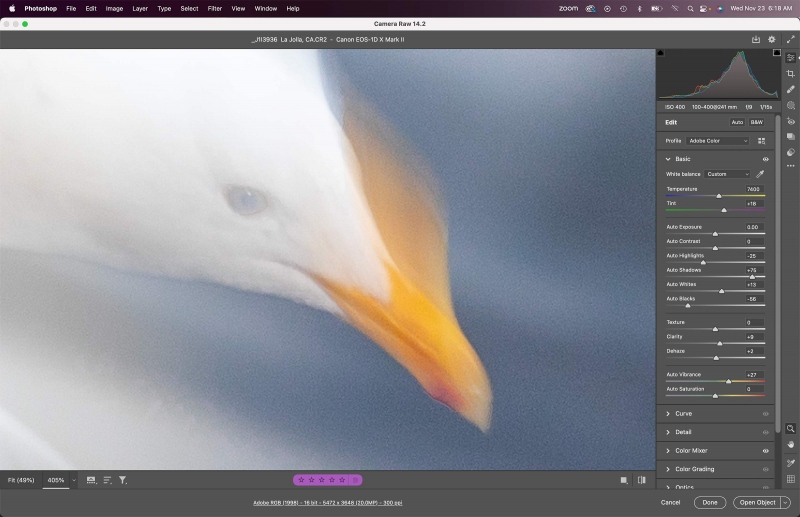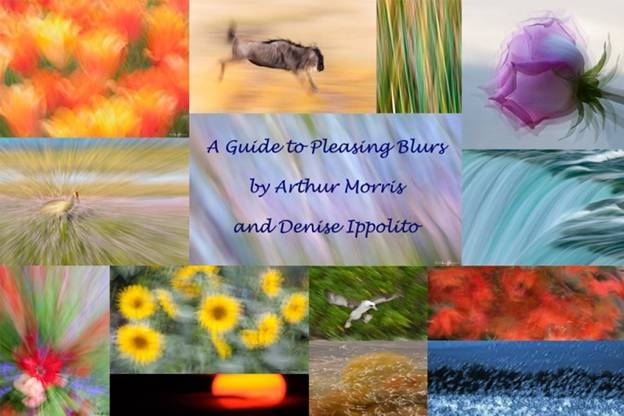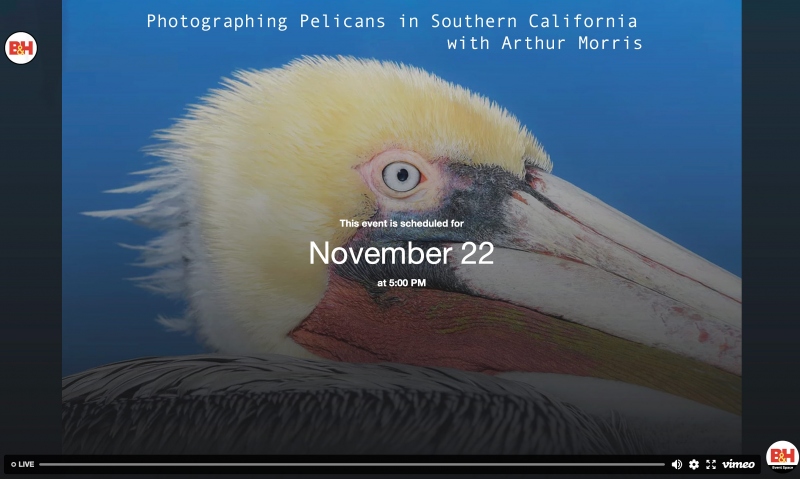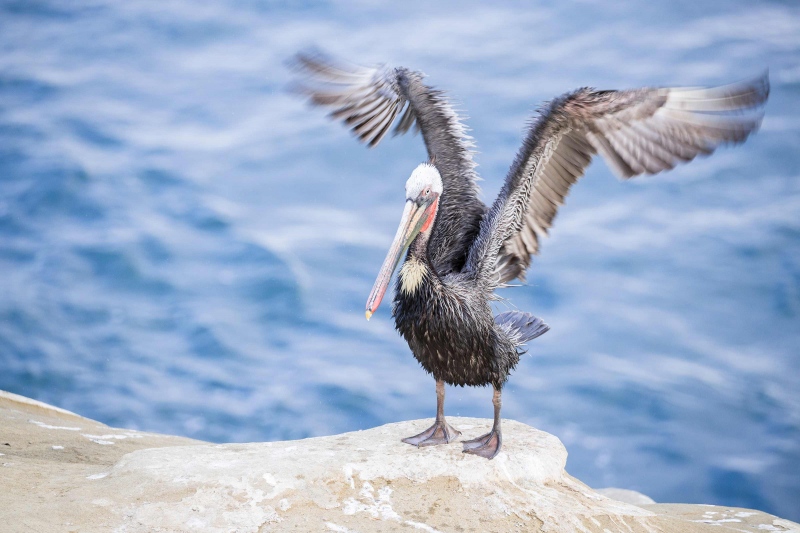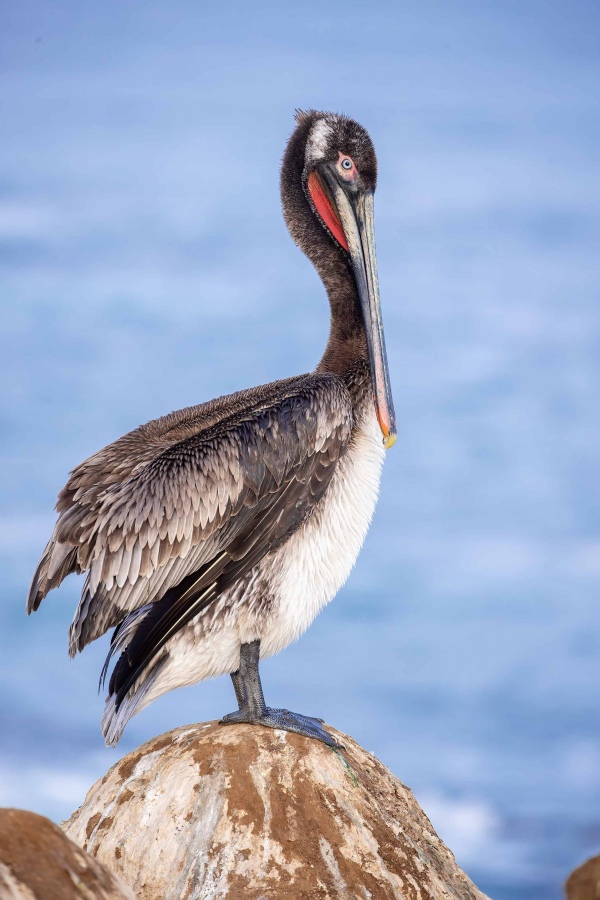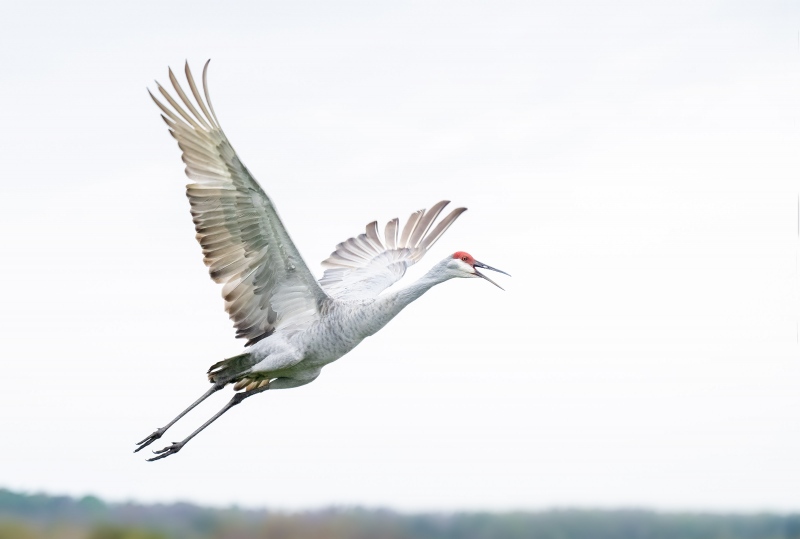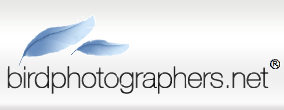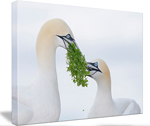December 10th, 2022
|
|
|
This image was created on 24 October 26 2018 on the bucket list Emperor Penguins of Snow Hill Island expedition via icebreaker. I used the no-longer available (except from BAA) Induro GIT 304L tripod/Mongoose-mounted Nikon AF-S NIKKOR 500mm f/5.6E PF ED VR lens with the Nikon AF-S Teleconverter TC-17E II (at 850mm!) and the Nikon D850. ISO 500. Matrix metering plus about 1 1/3 stops: 1/640 sec. at f/13 in Manual mode. AWB at 3:10:36pm on a cloudy, very-bright afternoon
One AF point up and to the right of the center AF point/Single/Shutter-button AF as originally framed was active at the moment of exposure. The selected AF point was on the bird’s left eye (the one on our right).
Focus peaking AF Fine-tune: +7. See the Nikon AF Fine-tune e-Guide here.
Emperor Penguin chick tight head portrait
|
Nikon AF-S NIKKOR 500mm f/5.6E PF ED VR Lens (with a nice extra)
David Hawkins is offering a Nikon AF-S NIKKOR 500mm f/5.6E PF ED VR lens in near-mint condition for a very low $2,596.94. The sale includes the front and rear caps, the lens strap, the soft case,a Wimberley P-20 lens plate (a $55.00 value), and insured ground shipping via major courier to lower-48 US addresses only. Your item will not ship until your check clears unless other arrangements are made.
Please contact David via e-mail or by phone at 1-727-215-7567 (Eastern time zone).
Yes, I loved this still hard-to-get lens a ton when I used Nikon gear. The Nikon PF series telephoto lenses are tremendously popular as they are relatively small and light and offer great reach. Both do well with the Nikon AF-S Teleconverter TC-14E III and with the Nikon AF-S Teleconverter TC-17E II.The latter gets you to 840mm with a full frame body. On my bucket-list-trip for the Emperor Penguins, I brought two D850 bodies, the 500 PF, and the Nikon 80-400 VR lenses! You can see more images from the Snow Hill Island trip in the Nikon 500 PF/D850 Does Emperor Penguins in Antarctica! blog post here. The 500 PF is still hard to come by and sells new for $$3,296.95. At $2596.95, David’s lens is a steal as you save an even $700.00. artie
What’s Up?
I did fairly well at sunrise, and then spent a fun hour at the Vulture Trees. On Thursday, after the endoscopy and the anesthesia, I had lots of energy. On Friday, I was beat. After my early morning photo session, I barely lifted a finger to do anything. I did sit on the couch and watch two great World Cup soccer games. Kudos to Croatia and Argentina for advancing to the quarterfinals. Both games were decided by penalty kicks. Condolences to Brazil, to the Dutch, and to Clemens Van der Werf, now living in the Netherlands.
Today is Saturday 10 December 2022. When I went into the kitchen early, there was a grasshopper on the kitchen floor. I left it. Though the morning forecast for ILE is calling for cloudy with a NW breeze, I will be heading down to the lake early, just in case there is a nice sunrise.
This blog post took about an hour to prepare and makes two hundred fifty-eight days in a row with a new, educational post just for you. Wherever you are and whatever you are doing, I hope that you too have a great day.
Please remember to use the B&H and Amazon links that are found on most blog pages and to use the BIRDSASART discount code at checkout when purchasing your new gear from Bedfords to get 3% back on your credit card and enjoy free second-day air FedEx. Please, also, consider joining a BAA IPT. You will be amazed at how much you will learn!
You can find some great photo accessories (and necessities, like surf booties!) on Amazon by clicking on the Stuff tab on the orange/yellow menu bar above. On a related note, it would be extremely helpful if blog-folks who, like me, spend too much money on Amazon, would get in the habit of clicking on the Amazon logo link on the right side of each blog post when they shop online. As you might expect, doing so will not cost you a single penny, but would be appreciated tremendously by yours truly. And doing so works seamlessly with your Amazon Prime account.
Please remember that if an item — a Delkin flash card, or a tripod head — for example, that is available from B&H and/or Bedfords, is also available in the BAA Online Store, it would be great, and greatly appreciated, if you would opt to purchase from us. We will match any price. Please remember also to use my B&H affiliate links or to earn 3% cash back at Bedfords by using the BIRDSASART discount code at checkout for your major gear purchases. Doing either often earns you free guides and/or discounts. And always earns my great appreciation.
|
|
|
This image was created on 9 December 2022 down by the lake near my home at ILE. Standing at full height, I used the no-longer available (except from BAA) Induro GIT 304L tripod/Levered-Clamp FlexShooter Pro-mounted Sony FE 400mm f/2.8 GM OSS lens and The One, the Sony Alpha 1 Mirrorless Digital Camera). The exposure was determined via Zebra technology with ISO on the Thumb Dial. ISO 320. 1/6400 sec. at f/3.2 (stopped down 1/3-stop) in Manual mode. When evaluated in RawDigger, the raw file brightness was determined to be just as I wanted it. AWB at 7:13:50am on just after sunrise on a clear morning.
Tracking: Spot (S) AF-C with Bird Face/Eye detection worked just fine. Be sure to click on the image to enjoy a high-res version.
The Vulture Trees backlit at sunrise
|
It Was The Frog’s Fault!
(AKA, the dog ate my homework)
Today’s image is typical of the new concept I have been working on recently, shooting the Vulture Trees backlit from across the canal between the South Peninsula and the South Field. I’ve tried with focal lengths ranging from 400mm to 1200mm. Though I like this one a lot, I think that there is a chance to do even better. Keep reading and you can learn a few things.
The Sun Peeking into the Frame
Do you like that the sun is just peeking into the frame? Why or why not? As discussed here recently, with any part of an unmuted sun in the frame on a clear morning, the sun must be completely over-exposed. If you eliminate over-exposing it, the rest of the frame will necessarily be black. I tried for almost 30 minutes to mute the sun, but did not like any of the results. If you do not like the sun peeking into the frame, remember that it was the frog’s fault. Had I not spotted it on the kitchen floor that morning I would have gotten down to the lake a lot earlier, well before the sun came into view.
Why the Tripod?
Considering the following:
1- Being relatively short in length, and with all the weight toward the rear, The Sony 400mm f/2.8 lens is easy to hand hold.
2- I had a ton of shutter speed.
Why did I go to the trouble of setting up the tripod?
Bird-scapes
How does having a single, distinctive bird in the frame when creating bird-scapes help the image?
Is there a single, distinctive bird in the frame above? Which one?
Depth of Field Question
Why was there no need to stop down two or three stops to render the trees and birds sharp?
The Homer IPTs Late Registration Discounts
If you’ve been thinking of attending one of the great trips below, please contact me via e-mail to learn of the Late Registration Discounts; I will do my very best to make it happen.
|
|
All images from Homer or Kachemak Bay, AK
|
2023 Homer/Kachemak Bay Bald Eagle IPTs
IPT #1: MON 20 FEB 2023 through the full day on FRI 24 FEB 2023. Five full days/20 hours on the boat: $5500.00. Limit 5 photographers/Openings: 2.
IPT #2: SAT 25 FEB 2023 through the full day on THURS 2 MAR 2023. Six full days/24 hours on the boat: $6600.00. Limit 5 photographers/Openings: 3.
IPT #3: FRI 3 MAR 2023 through the full day on TUES 7 MAR 2023. Five full days/20 hours on the boat: $5500.00. Limit 5 photographers. Openings: 2.
Save $1,500.00 by doing back-to-back trips. Save $2500 by doing all three trips.
These trips feature non-stop flight photography as well as many opportunities to create both environmental and point-blank portraits of one of North America’s most sought-after avian subjects: Bald Eagle (Haliaeetus leucocephalus). Other reliable subjects will include Sea Otter, Glaucous-winged and Short-billed (formerly Mew) Gulls.
In addition, we should see Common Murre, Black Guillemot, Pelagic Cormorant, two or three species of loons, and a smattering of ducks including two species of merganser, all three scoters, Common and Barrow’s Goldeneyes, Bufflehead, Harlequin, and Long-tailed Ducks. Close-range photographic chances for these species will require a ton of good luck. Some of these species, especially when in flocks, can, however, often be used effectively when creating bird-scapes.
If we need to be out early, we will be the first boat out. If conditions are great, we will stay out. And when there is a chance for sunset silhouettes, we will stay out and be in the right spot.
We will be traveling through gorgeous wilderness country; landscape and scenic opportunities abound.
Also featured is a professional leader, often referred to as the world’s most knowledgeable bird photography trip leader, who is conversant in Canon, Nikon, and Sony.
|
|
All images from Kachemak Bay in 2022!
|
What You Will Learn
You will learn practical and creative solutions to everyday photographic problems. You will learn to see the shot, to create dynamic images by fine-tuning your compositions, to best utilize your camera’s AF system, and how to analyze the wind, the sky conditions, and the direction and quality of the light. This is one of the very few trips Homer trips available where you will not be simply put on the birds and told to have fun. You will learn to be a better photographer. But only if that is what you want.
You will learn to get the right exposure when it is sunny, when it cloudy-bright, when it is cloudy, when it is cloudy-dark, or when it is foggy. Not to mention getting the right exposure when creating silhouettes.
You will learn to make pleasing blurs working in manual mode and to create silhouettes working in Shutter Priority mode.
Most importantly you will learn to pick your best flight images from tens of thousands of images.
You will enjoy working with the two best and most creative boat captains on their sturdy, photography-spacious, seaworthy, open-deck crafts.
The second and third IPTs are the only Bald Eagle workshops that feature an incredibly helpful first mate.
Only five photographers (not the usual six), plus the leader.
Small group Photoshop, Image Review, and Image Critiquing sessions.
|
|
All images from Homer or Kachemak Bay, AK
|
What’s Included
One four-hour or two two-hour(+/-) boat trips every day (weather permitting), all boat fees and boat-related expenses (excluding tips), ground transportation to and from the dock and back to the hotel each day, in-the-field instruction and guidance, pre-trip gear advice, small group post-processing and image review sessions, and a thank you dinner for all well-behaved participants. Airport pickup if possible)
What’s Not Included
Your airfare to and from Homer, AK (via Anchorage), the cost of your room at Land’s End Resort, all personal items, all meals and beverages, and tips for the boat captain and/or the first mate.
Please Note
On great days, the group may wish to photograph for more than four hours. If the total time on the boat exceeds 20 hours for the five-day trips, or 24 hours for the second trip, the group will share the additional expense at a rate of $225/hour.
Some folks may wish to rent their own vehicle to take advantage of local photographic opportunities around Homer.
Deposit Information
A $3000 non-refundable deposit/trip is required. You may pay your deposit with credit card or by personal check (made out to BIRDS AS ART) and sent via US mail only to Arthur Morris. PO Box 7245. Indian Lake Estates, FL 33855. Your balance, due 90 days before the date of departure, is payable only by check as above.
In Closing
I have been going to Homer off and on for close to two decades. Every trip has been nothing short of fantastic. Many folks go in mid-March. The earlier you go, the better the chances for snow. The only way to assure that you are on the best of the three trips is to sign up for all three. Can you keep up with me? If you have any questions, or are good to go for one, two, or all three trips, please let me know via e-mail or give me a call on my cell phone at 863-221-2372.
Typos
With all blog posts, feel free to e-mail or to leave a comment regarding any typos or errors.
December 9th, 2022 What a Way to Wake Up & Learn Something New
I woke early and took my blood sugar: 111. I wandered into the kitchen and saw a grey lump on the floor. I turned on the lights and saw what I believe to be a Green Treefrog, native to Florida. From being in the kitchen all night, it was evenly light grey in color. Rather than have it die under the stove and stink up the joint, I opted to catch it and put it outside as I’ve done many times before. I almost caught him several times, but it was quite quick and slippery and very jumpy if you get my drift. So, I chased it around the kitchen for two minutes until I was finally successful. After opening the front door, I stuck it to the decorative section of stone wall where we have seen them before.
Out of curiosity, I took my blood sugar. In ten minutes, it had risen fourteen points to 125. As we all do when we wake up early, I wiped the sleep out of my eyes; suddenly, they began burning, seriously burning. I rinsed them with warm water and the irritation got worse. I tried eye drops but still they burned. I realized that there had to have been something on the frog’s skin that caused the irritation. I went back to the sink and rinsed both eyes with handfuls of warm water. Once I was able to see a bit, I got to my laptop and did a search for eye irritation after touching a tree frog and learned several things:
1- When you hold a tree frog it becomes afraid and urinates on you.
2- As you might have guessed by now, tree frog pee or the secretions from their skin can be irritating to our eyes making it become difficult to see temporarily.
3- If you are lucky enough to touch a tree frog and then rub your eyes, doing so poses no long-term harm to humans. Good to know. An hour later, my eyes were still burning, but at least I could see.
The Lesson
If you handle a tree frog, be sure to wash your hands afterwards 🙂
What’s Up?
All are invited to leave a comment letting us know which of today’s two featured images they like best, and why they made their choice.
Today is Friday 9 December 2022. This blog post took about an hour to prepare and makes two hundred fifty-seven days in a row with a new, educational post just for you. Wherever you are and whatever you are doing, I hope that you too have a great day.
Please remember to use the B&H and Amazon links that are found on most blog pages and to use the BIRDSASART discount code at checkout when purchasing your new gear from Bedfords to get 3% back on your credit card and enjoy free second-day air FedEx. Please, also, consider joining a BAA IPT. You will be amazed at how much you will learn!
You can find some great photo accessories (and necessities, like surf booties!) on Amazon by clicking on the Stuff tab on the orange/yellow menu bar above. On a related note, it would be extremely helpful if blog-folks who, like me, spend too much money on Amazon, would get in the habit of clicking on the Amazon logo link on the right side of each blog post when they shop online. As you might expect, doing so will not cost you a single penny, but would be appreciated tremendously by yours truly. And doing so works seamlessly with your Amazon Prime account.
Please remember that if an item — a Delkin flash card, or a tripod head — for example, that is available from B&H and/or Bedfords, is also available in the BAA Online Store, it would be great, and greatly appreciated, if you would opt to purchase from us. We will match any price. Please remember also to use my B&H affiliate links or to earn 3% cash back at Bedfords by using the BIRDSASART discount code at checkout for your major gear purchases. Doing either often earns you free guides and/or discounts. And always earns my great appreciation.
|
|
|
This image was also created on 3 December 2022 down by the lake near my home at ILE. Standing at the base of the small hill adjacent to the parking circle at the base of the pier. I used the handheld Sony FE 400mm f/2.8 GM OSS lens and The One, the Sony Alpha 1 Mirrorless Digital Camera). The exposure was determined via Zebra technology with ISO on the Thumb Dial. ISO 400. 1/2000 sec. at f/3.2 (stopped down 1/3-stop) in Manual mode. When evaluated in RawDigger, the raw file brightness was determined to be dead-solid perfect. AWB at 8:52:15am on a mostly sunny morning.
Tracking: Spot (S) AF-C with Bird Face/Eye detection enabled performed well by grabbing the bird’s upper neck. Be sure to click on the image to enjoy a high-res version.
Image #2: Sandhill Crane dancing into north wind
|
High Level Question
In the Save Yourself From Too Many Images: Stringent Editing here, I posted this:
Why did I find it necessary to use Tim Grey Dodge and Burn to lighten the bird’s face and eye?
The question was so difficult that nobody played. Perfect head angles have everything to do with how the light strikes the bird’s face. With the dancing crane’s head angled perhaps one degree (or a bit less) away from us, the face was left somewhat in the dark. Many may think this picky, but the face was simply too dark as it was not illuminated as well as the rest of the bird.
When I use Tim Grey Dodge and Burn, I work with varying reduced opacities, usually 10 or 20%. This technique is detailed in Digital Basics II.
Another (Related) High Level Question
How can we know that the wind was coming from slightly over my left shoulder?
My Favorite Spider Web Image
In The Whole New World of Digital: Dew-Draped Spider Webs here, my preference (by a small margin) was for the vertical image because the o-o-f droplets in the lower left corner helped move the viewer’s eye around the frame. Three folks agreed:
J Edwin Krug/December 7, 2022, at 10:28am
My preference is image #1; it draws my eye to the center of the web and the soft focus at the bottom left actually enhances the illusion of depth.
Ted
Anthony Ardito/December 7, 2022, at 1:53pm
I like image #1. The OOF lower left doesn’t bother me at all, and in fact provides some depth to the image.
Neil Hickman/December 7, 2022, at 7:24pm
Wonderful image. I prefer the extra depth in #1.
Bob Eastman, the recent league-leading commentor, liked the square version and asked several interesting questions as well.
Typos
With all blog posts, feel free to e-mail or to leave a comment regarding any typos or errors.
December 8th, 2022 What’s Up?
On Wednesday morning, photography was again on the slow side. I’ve been working on wide, backlit silhouetted images of the vulture trees created from across the canal. The 400 f/2.8 is a perfect focal length for the shot. So far, I have some good but not great stuff.
Today is Thursday 8 December 2022. I will be spending my morning at Lake Wales Hospital having an endoscopy done. This blog post took about 90 minutes to prepare and makes two hundred fifty-six days in a row with a new, educational post just for you. Wherever you are and whatever you are doing, I hope that you too have a great day.
Please remember to use the B&H and Amazon links that are found on most blog pages and to use the BIRDSASART discount code at checkout when purchasing your new gear from Bedfords to get 3% back on your credit card and enjoy free second-day air FedEx. Please, also, consider joining a BAA IPT. You will be amazed at how much you will learn!
You can find some great photo accessories (and necessities, like surf booties!) on Amazon by clicking on the Stuff tab on the orange/yellow menu bar above. On a related note, it would be extremely helpful if blog-folks who, like me, spend too much money on Amazon, would get in the habit of clicking on the Amazon logo link on the right side of each blog post when they shop online. As you might expect, doing so will not cost you a single penny, but would be appreciated tremendously by yours truly. And doing so works seamlessly with your Amazon Prime account.
Please remember that if an item — a Delkin flash card, or a tripod head — for example, that is available from B&H and/or Bedfords, is also available in the BAA Online Store, it would be great, and greatly appreciated, if you would opt to purchase from us. We will match any price. Please remember also to use my B&H affiliate links or to earn 3% cash back at Bedfords by using the BIRDSASART discount code at checkout for your major gear purchases. Doing either often earns you free guides and/or discounts. And always earns my great appreciation.
Why I ‘m Always in a Hurry
Folks often ask me why I am in such a hurry. In part, I do not quite understand why. Perhaps part of the answer is that I do not want to miss anything.
On the evening that today’s featured image was created, I could not find the two flash cards that I had used that morning. The search took me more than five minutes. I finally found them on the dining room table, the first spot I had looked. Anyhoo, the sun was close to setting. I got into my SUV and drove quickly down to the lake to check out a new spot, a spot where a few wading birds had been roosting right before sunset. The Anhinga was there in a decent spot. I hurried to get my rig on the tripod and put the bird right in front of the sun. Hurrying, I set the ISO, the shutter speed, and the aperture so that there were considerable Zebras on the lower half of the sun, just what I wanted. As I framed the image, the bird began leaning forward so I fired and kept the shutter button pressed as it took off to the north/northwest. I wound up with five frames of the bird perched in the bush, and five of it taking flight. Only one, today’s featured image, was decent. You will see it below.
Had I been delayed just five more seconds, I would have missed the whole thing and gone home empty-handed.
|
|
The Adobe Camera Raw default settings screen capture for the Anhinga taking flight at sunset
|
On Exposure With the Sun in the Frame
Getting the right exposure for images like the one above is challenging. If you expose for the partially muted sun, the entire image will be black or many, many stops too dark. If you expose properly for the sky, the sun will be many, many stops over-exposed and pretty much impossible to work. With this image, RawDigger showed a significant 9444,000 Ov-Exp pixels, all on the sun, of course. None-the-less, for me, this was an excellent exposure, perhaps a perfect exposure.
The trick is to split the difference: by under-exposing the sky without making it too, too dark, you reduce the brightness of a partially muted sun.
|
|
The Adobe Camera Raw adjusted slider setting screen capture for the Anhinga taking flight at sunset
|
Saving the Over-exposed Sun
Check out the significant slider settings that created a fairly successful image:
Exposure: -0.05
Highlights: -83
Shadows: +17
Whites: -74
Blacks: -19
In addition, I did some Color Mixer work on the Reds, Oranges, and Yellows.
The Optimized Image
If you are looking for any image clean-up here, you will be disappointed. There isn’t any. I did consider getting rid of the red specks of light coming through the bird’s far wing and eliminating the branch that stuck into that same wing, but I figured what the heck.
Would you have made those two changes? Why or why not?
|
|
All images on this card were created by Arthur Morris on the Hooptie Deux at Alafia Banks
|
2023 Spoonbill Boat 1-1/2 DAY MINI-IPT: $1199.00.00. Limit: 5 photographers.
A full day on WED 15 FEB and the morning of Thursday 16 FEB 2023: 1 1/2 days.
Two morning and one afternoon photo session (weather permitting) via customized pontoon boat.
For early-arriving folks, artie is throwing in a free afternoon In-the-Field session at a little-known but very active rookery in North Tampa on Tuesday 14 February.
We will be leaving the dock in Gibsonton, FL very early for the morning sessions in hopes of photographing a pre-dawn White Ibis blast-off and creating some dramatic silhouettes or pleasing blurs. The morning sessions are planned for the Alafia Banks Roseate Spoonbill Rookery. We have several options for the afternoons including returning to Alafia. We may spend one afternoon on foot at the North Tampa rookery mentioned above. There will be lots of opportunities for flight photography of several species including and especially Roseate Spoonbill. Also likely for flight photography are nesting Brown Pelican, Great Blue Heron, and Double Crested Cormorant, many carrying nesting material. This IPT includes all boat and guide fees, in-the-field instruction from two great leaders, chest waders (feel free to bring your own of course to assure a perfect fit), and three working lunches (Monday thru Wednesday). For the most part we will be standing in mid-calf to knee-deep water behind our tripods. We help you get in and out of the boat safely with your gear. This is likely not the best trip for folks with mobility or balance problems. Note however that some folks opt to stay on the boat to photograph. They usually have lots of chances for flight photography of spoonbills and other species but are almost always pretty far away from the spoonbills that land.
Mid-February is prime time for photographing spoonbills at the absolute peak of breeding plumage. For unknown reasons, the spoonbills at Alafia are much more colorful than the birds that breed at Stick Marsh later in the season. The Hooptie IPT represents an incredible opportunity and I do hope that you can join us. All of the images on the cards were made on the Hooptie Duex during the last two weeks of February, prime time for the spoonies in mega-breeding plumage.
You may hold your spot with an e-mail request. Then, you may either secure your spot by calling Jim or Jennifer at the office at 863-692-0906 and leaving the $599 deposit on credit card or sending your check for payment in full to us as follows with the check made out to:
BIRDS AS ART
Please send it via US mail here:
BIRDS AS ART
PO BOX 7245
Indian Lake Estates, FL 33855
If you call to leave your deposit, you will be asked to mail your check for the balance ASAP. Be sure to give us your e-mail address.
|
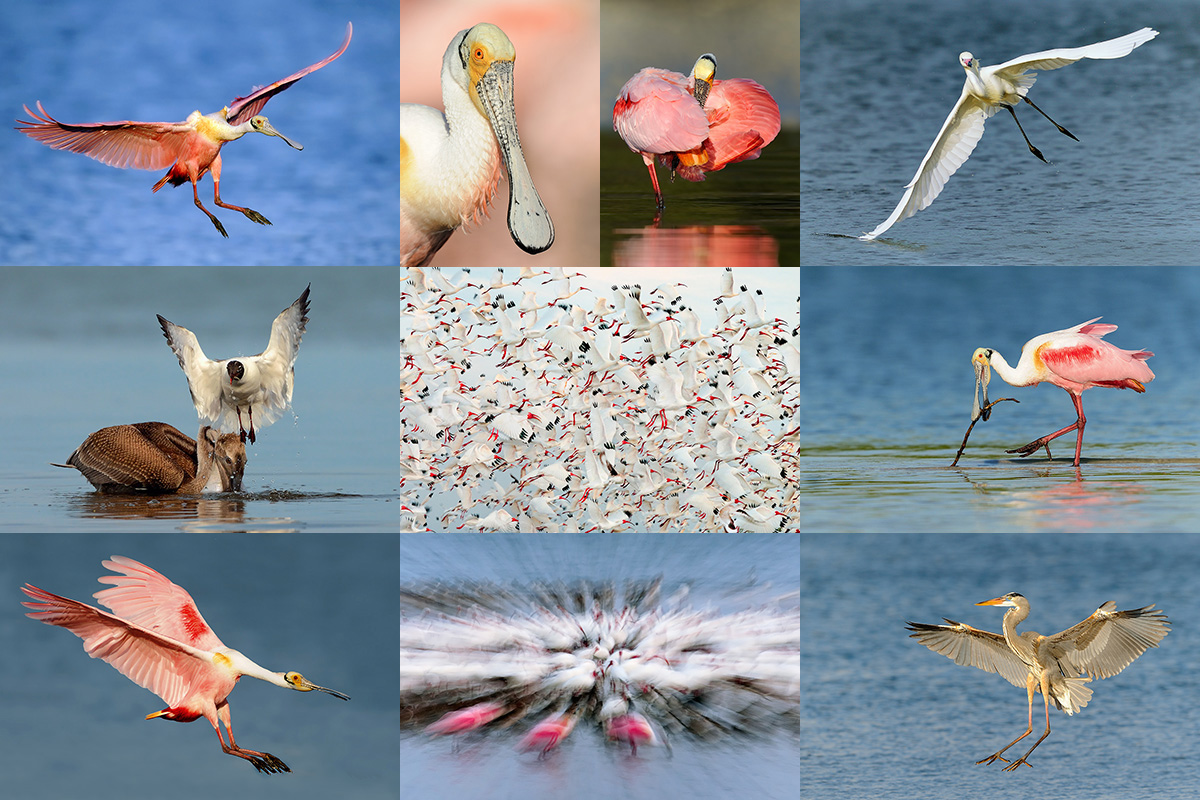
|
|
Images courtesy of our guide; copyright 2017 Captain James Shadle (aka Froggie). All of the images here were created at Alafia Banks. Card creation and design by Arthur Morris/BIRDS AS ART.
|
Everybody Wants Spoonbills!
Roseate Spoonbill is one of if not the most sought after avian photographic subjects in Florida. They are generally hard to find and somewhat difficult to approach. They are relatively easy to find at Alafia Banks—heck, you can’t miss seeing them, but even there they can on some days be somewhat difficult to approach. On some days we may be able to get ridiculously close to them. The huge incentive to get out to Alafia Banks in mid-February is the chance to photograph this species at the height of its spectacular breeding plumage…. with long telephoto lenses. A 500 or 600 with a 1.4X TC is perfect for flight.
As above, there will — weather permitting — three boat trips — 2 mornings and 1 afternoon — on this MINI IPT. All to Alafia Banks for spoonbills and Brown Pelicans (with lots of flight photography often with the birds likely carrying nesting material), Double-crested Cormorants, ibises (both Glossy and White) in breeding plumage. Many of the White Ibises will be sporting their spectacular, distended, red, naked (un-feathered) throat pouches—typically larger in the females. In addition, we may get to photograph egrets including Great and Reddish, both in full breeding plumage, shorebirds, and more. There will be lots of flight photography opportunities. Afternoon trips either to Alafia Banks for spoonbills and more or to a more sheltered inland rookery location for a variety of nesting birds. In the event of horrific weather artie will either take the group to Fort DeSoto or will conduct an image review/Photoshop session. This IPT includes lunches on the full day with small group image sharing and review and some over-the-shoulder Photoshop instruction.
The 2023 Expanded Winter/Spoonbill Boat/DeSoto 4-DAY IPT: $2199.00.00. Limit: 5 photographers.
The 2023 Expanded Winter/Spoonbill Boat/DeSoto 4-DAY IPT
Bird photographers, especially those wishing to escape the snow, ice, and freezing winter temperatures to the north of sunny Florida, can add two mornings at Fort DeSoto an afternoon at the little-known but fabulous rookery north of Tampa, a second (free) afternoon at that same rookery, to the 1 1/2 days on the Spoonbill Boat. Shared lodging is a possibility that includes watching the Super Bowl at my home on Sunday 12 February and driving over early to DeSoto. DeSoto is one of the very few bird photography hotspots that has the possibility of being great on any day of the year. It is generally superb in winter with lots of wading birds, terns, both species of pelicans, many species of shorebirds including Marbled Godwit, and lots of flight photography.
You can hold your spot with an e-mail request. Then, you may either secure your spot by calling Jim or Jennifer at the office at 863-692-0906 and leaving the $599 deposit on your credit card or sending your check for payment in full to us as follows with the check made out to:
BIRDS AS ART
Please send it via US mail here:
BIRDS AS ART
PO BOX 7245
Indian Lake Estates, FL 33855
If you call to leave your deposit, you will be asked to mail your check for the balance ASAP. Be sure to give us your e-mail address.
Typos
With all blog posts, feel free to e-mail or to leave a comment regarding any typos or errors.
December 7th, 2022 Very Dewy Lessons
On a densely-foggy Monday morning past, the vegetation along the canal between the South Field and the South Peninsula was draped with many hundreds (no exaggeration) of dew covered spider webs. Tuesday morning dawned slightly foggy. I headed to the same spot expecting to see many hundreds of spider webs laced with droplets of dew. Not only was there no dew, but close examination revealed very few spider webs.
1- I learned that a little bit of fog just won’t dew it 🙂 I would assume that in addition to heavy fog at dawn, a specific combination of the overnight temperatures, the humidity, and the wind speed (not too high), are needed to create the magical conditions that I enjoyed on Monday morning. Can you say dew point?
2- I have no idea as to why there seemed to be fewer spider webs by a factor of one hundred on the morning without the dew. Do you?
What’s Up?
On Tuesday morning, photography was on the slow side. I created 281 images and kept only five, and one of those was for educational purposes only. Again, I spent many hours on the NANPA/ASMP issue and will be doing the same every day in the near future.
Today is Wednesday 7 December 2022. I will be heading down to the lake again this morning. This blog post took about 90 minutes to prepare and makes two hundred fifty-five days in a row with a new, educational post just for you. Wherever you are and whatever you are doing, I hope that you too have a great day.
Please remember to use the B&H and Amazon links that are found on most blog pages and to use the BIRDSASART discount code at checkout when purchasing your new gear from Bedfords to get 3% back on your credit card and enjoy free second-day air FedEx. Please, also, consider joining a BAA IPT. You will be amazed at how much you will learn!
You can find some great photo accessories (and necessities, like surf booties!) on Amazon by clicking on the Stuff tab on the orange/yellow menu bar above. On a related note, it would be extremely helpful if blog-folks who, like me, spend too much money on Amazon, would get in the habit of clicking on the Amazon logo link on the right side of each blog post when they shop online. As you might expect, doing so will not cost you a single penny, but would be appreciated tremendously by yours truly. And doing so works seamlessly with your Amazon Prime account.
Please remember that if an item — a Delkin flash card, or a tripod head — for example, that is available from B&H and/or Bedfords, is also available in the BAA Online Store, it would be great, and greatly appreciated, if you would opt to purchase from us. We will match any price. Please remember also to use my B&H affiliate links or to earn 3% cash back at Bedfords by using the BIRDSASART discount code at checkout for your major gear purchases. Doing either often earns you free guides and/or discounts. And always earns my great appreciation.
Today’s NANPA Tidbit
Via e-mail From Ron Levy
Beth Huning, Susan Day, et. al.,
Arthur’s last email makes a lot of sense, and I would like to see the “merger’ up for a vote. Only a small handful of questions were addressed on the video meeting last week, and it did seem like more of a marketing pep talk than a deep dive into the questions that were raised.
As a long-standing ASMP member (30+ years) and relatively recent NANPA member, I see the perceived benefits for both, independently and together. But it seems that this matter is far too massive a decision to make without member votes. Regardless of having a board that decides smaller, day-to-day or week-to-week issues as expediently as possible, this is a major change with far-reaching potential issues and consequences, deserving of a more comprehensive member input.
There is no reason to waste time and money on formal legal defenses for either side if a more open set of meetings can avoid costs and unify NANPA again.
Best,
Ron
The Times They Have Changed
Many decades ago, a dew-covered spider web image created by John Shaw graced the cover of Natural History Magazine. The dew drops sparkled like diamonds and were set against a smooth, matte grey background. By e-mail, John remembered that the image was made with his Nikkor 200mm micro lens and Kodachrome 25 (Kodachrome 64 was his “high speed film”). He had no idea on the shutter speed and the aperture, but since he was working with ISO 25 film, it is easy to figure out several things:
1- He had stopped down at least a bit.
2- He had used a very slow shutter speed (most likely with a shutter release cable).
3- In addition to the foggy conditions that caused the dew, there had been zero wind that morning.
As I marveled at the hundreds of dew-covered webs on Monday morning, John’s classic image came to mind. My first thought was “It’s too breezy to make a good image.” But then I realized that I was using digital, and that digital offered almost unlimited ISO settings that would allow me to freeze the movement of the web and stop down a bit as well. So, I set up my macro rig and went to work. I wound up at ISO 1600: 1/1000 second at f/8. Thanks to the many miracles of digital photography (including Topaz DeNoise) I had 5 1/3 stops more ISO to work with.
I found a fairly flat dew-covered web with a fairly dark background. As the biggest challenge was getting the sensor square to the web, the tripod was moved many times. With focus peaking, the red in-focus overlay was shifting constantly as the web moved in the wind. I would shoot short bursts when the overlay covered the center of the web. Because the web was not perfectly flat, all of the images had one corner of the web that was beyond the range of the depth of field. With Image #1, the lower left corner fit that category. I am not sure if I like it as the viewer’s eye is moved around the frame by the shifting sharpness, or if I hate it because all of the dew drops are not sharp.
What do you think?
|
|
|
This is a square crop of the image above.
Image #2: Dew-covered spider web on breezy morning — cropped to a square
|
The Square Crop Solution
To eliminate the out of focus dew drops in the lower left corner, I executed a square crop that moved the center of the web from the upper left to the lower left. There are still a few soft dew drops in the lower left corner but they are far less extensive than in image #1. One thing is for sure, on the next foggy morning I will not delay getting down to the lake!
Please leave a comment and let us know which of the two versions you like best and why you made your choice.
The Homer IPTs
If you are considering attending one of the great trips below, please contact me via e-mail and I will do my very best to make it happen.
|
|
All images from Homer or Kachemak Bay, AK
|
2023 Homer/Kachemak Bay Bald Eagle IPTs
IPT #1: MON 20 FEB 2023 through the full day on FRI 24 FEB 2023. Five full days/20 hours on the boat: $5500.00. Limit 5 photographers/Openings: 2.
IPT #2: SAT 25 FEB 2023 through the full day on THURS 2 MAR 2023. Six full days/24 hours on the boat: $6600.00. Limit 5 photographers/Openings: 3.
IPT #3: FRI 3 MAR 2023 through the full day on TUES 7 MAR 2023. Five full days/20 hours on the boat: $5500.00. Limit 5 photographers. Openings: 2.
Save $1,500.00 by doing back-to-back trips. Save $2500 by doing all three trips.
These trips feature non-stop flight photography as well as many opportunities to create both environmental and point-blank portraits of one of North America’s most sought-after avian subjects: Bald Eagle (Haliaeetus leucocephalus). Other reliable subjects will include Sea Otter, Glaucous-winged and Short-billed (formerly Mew) Gulls.
In addition, we should see Common Murre, Black Guillemot, Pelagic Cormorant, two or three species of loons, and a smattering of ducks including two species of merganser, all three scoters, Common and Barrow’s Goldeneyes, Bufflehead, Harlequin, and Long-tailed Ducks. Close-range photographic chances for these species will require a ton of good luck. Some of these species, especially when in flocks, can, however, often be used effectively when creating bird-scapes.
If we need to be out early, we will be the first boat out. If conditions are great, we will stay out. And when there is a chance for sunset silhouettes, we will stay out and be in the right spot.
We will be traveling through gorgeous wilderness country; landscape and scenic opportunities abound.
Also featured is a professional leader, often referred to as the world’s most knowledgeable bird photography trip leader, who is conversant in Canon, Nikon, and Sony.
|
|
All images from Kachemak Bay in 2022!
|
What You Will Learn
You will learn practical and creative solutions to everyday photographic problems. You will learn to see the shot, to create dynamic images by fine-tuning your compositions, to best utilize your camera’s AF system, and how to analyze the wind, the sky conditions, and the direction and quality of the light. This is one of the very few trips Homer trips available where you will not be simply put on the birds and told to have fun. You will learn to be a better photographer. But only if that is what you want.
You will learn to get the right exposure when it is sunny, when it cloudy-bright, when it is cloudy, when it is cloudy-dark, or when it is foggy. Not to mention getting the right exposure when creating silhouettes.
You will learn to make pleasing blurs working in manual mode and to create silhouettes working in Shutter Priority mode.
Most importantly you will learn to pick your best flight images from tens of thousands of images.
You will enjoy working with the two best and most creative boat captains on their sturdy, photography-spacious, seaworthy, open-deck crafts.
The second and third IPTs are the only Bald Eagle workshops that feature an incredibly helpful first mate.
Only five photographers (not the usual six), plus the leader.
Small group Photoshop, Image Review, and Image Critiquing sessions.
|
|
All images from Homer or Kachemak Bay, AK
|
What’s Included
One four-hour or two two-hour(+/-) boat trips every day (weather permitting), all boat fees and boat-related expenses (excluding tips), ground transportation to and from the dock and back to the hotel each day, in-the-field instruction and guidance, pre-trip gear advice, small group post-processing and image review sessions, and a thank you dinner for all well-behaved participants. Airport pickup if possible)
What’s Not Included
Your airfare to and from Homer, AK (via Anchorage), the cost of your room at Land’s End Resort, all personal items, all meals and beverages, and tips for the boat captain and/or the first mate.
Please Note
On great days, the group may wish to photograph for more than four hours. If the total time on the boat exceeds 20 hours for the five-day trips, or 24 hours for the second trip, the group will share the additional expense at a rate of $225/hour.
Some folks may wish to rent their own vehicle to take advantage of local photographic opportunities around Homer.
Deposit Information
A $3000 non-refundable deposit/trip is required. You may pay your deposit with credit card or by personal check (made out to BIRDS AS ART) and sent via US mail only to Arthur Morris. PO Box 7245. Indian Lake Estates, FL 33855. Your balance, due 90 days before the date of departure, is payable only by check as above.
In Closing
I have been going to Homer off and on for close to two decades. Every trip has been nothing short of fantastic. Many folks go in mid-March. The earlier you go, the better the chances for snow. The only way to assure that you are on the best of the three trips is to sign up for all three. Can you keep up with me? If you have any questions, or are good to go for one, two, or all three trips, please let me know via e-mail or give me a call on my cell phone at 863-221-2372.
Typos
With all blog posts, feel free to e-mail or to leave a comment regarding any typos or errors.
December 6th, 2022 What’s Up?
It was mega-foggy at 7:15am on Monday morning so I did not head down to the lake until 7:45am. It turned out to be a superb morning for dew-covered spider webs and wildflowers. It ended in surprise when I discovered today’s very strange featured bird at the Vulture Trees. A short sunset foray finds me with 662 yet-to-be-edited in the December 05 2022 day folder.
Today is Tuesday 6 December 2022. I will be heading down to the lake again this morning. This blog post took about two hours to prepare and makes two hundred fifty-four days in a row with a new, educational post just for you. Wherever you are and whatever you are doing, I hope that you too have a great day.
Please remember to use the B&H and Amazon links that are found on most blog pages and to use the BIRDSASART discount code at checkout when purchasing your new gear from Bedfords to get 3% back on your credit card and enjoy free second-day air FedEx. Please, also, consider joining a BAA IPT. You will be amazed at how much you will learn!
You can find some great photo accessories (and necessities, like surf booties!) on Amazon by clicking on the Stuff tab on the orange/yellow menu bar above. On a related note, it would be extremely helpful if blog-folks who, like me, spend too much money on Amazon, would get in the habit of clicking on the Amazon logo link on the right side of each blog post when they shop online. As you might expect, doing so will not cost you a single penny, but would be appreciated tremendously by yours truly. And doing so works seamlessly with your Amazon Prime account.
Please remember that if an item — a Delkin flash card, or a tripod head — for example, that is available from B&H and/or Bedfords, is also available in the BAA Online Store, it would be great, and greatly appreciated, if you would opt to purchase from us. We will match any price. Please remember also to use my B&H affiliate links or to earn 3% cash back at Bedfords by using the BIRDSASART discount code at checkout for your major gear purchases. Doing either often earns you free guides and/or discounts. And always earns my great appreciation.
Today’s NANPA Tidbit
A cc:ed e-mail from Jon Vickery
Ms. Huning and Ms. Day,
Since I received no reply to my prior email, which was addressed to Susan, I can only assume you are ignoring me. I may be a new remember of NANPA, but I do have 67 years of life experience with a variety of organizations, both professionally, and by avocation.
I am very much opposed personally to your single-handed and single-minded approach to push us into this media organization (ASMP sic). My life experience tells me that it will ruin NANPA and cause it to lose its history and identity. I am particularly distraught that you are doing this on your own without asking the membership what it actually wants.
For heaven sakes, put it to a vote.
I can hardly believe that you care so little about the folks you are supposed to advocate for. It is a pity we cannot call for your resignation on a no-confidence basis.
Please, get out of this arrangement ASAP and start over. It is never too late to get out of a bad judgment call.
Jon L. Vickery M.D.
Article XII. Referendum
The NANPA Board is ignoring the Referendum despite this from the Bylaws:
Upon petition of ten percent of the individual members eligible to vote, a request for a vote of the members of NANPA upon any matter, not involving an amendment to the Articles of Incorporation or these Bylaws, may be addressed to the Board. If such matter is not inconsistent with these Bylaws, the Board shall present it to the membership for a vote.
|
|
|
This image was created on 5 December 2022 down by the lake near my home. Working from the driver’s seat of my SUV with the window raised as high as possible, I used the BLUBB-supported Sony FE 600mm f/4 GM OSS lens with The One, the Sony Alpha 1 Mirrorless Digital Camera.. The exposure was determined by Zebras with ISO on the rear wheel: ISO 400. 1/800 second at f/8 (stopped down two-stops) in Manual mode. RawDigger showed that the exposure was dead-solid perfect. AWB at 8:52:42am on a mostly sunny morning.
Tracking: Spot S/AF-C with Bird-Eye/Face Detection performed perfectly. Click on the image to enjoy the high-res version.
Image #1: Turkey Vulture with many leucistic wing feathers<
|
Leucistic
leucistic (luːˈkɪstɪk) adjective
In zoology: having reduced pigmentation in the skin or feathers but normally colored eyes.
The Surprise
As I pulled up to the Vulture Trees, one bird flicked its wings briefly; at a glance, it seemed that there were too many white feathers. With its wings re-folded two thing were obvious:
1- The bird had lots of white in the flight feathers.
2- The bird had been crapped on at the overnight roost as there was lots of whitewash on its back and hind neck.
I took a few snaps out of curiosity. I looked elsewhere. When I took a second peek at the strong bird was stunned by its beauty as the bird had spread it wings fully in the sunning pose. It was immediately obvious that this was a spectacular example of leucism, a wide variety of conditions that result in the partial loss of pigmentation in an animal causing white, pale, or patchy coloration of the skin, hair, feathers, scales, or cuticles, but not the eyes. It can be pronounced with either a soft “c” (luːSIZəm) or with a hard “c” (lu-KIZ-əm). A quick read of The Birds of North America #399 species account for Turkey Vulture found no mention of leucism in this species.
Be sure to click on the image to enlarge it and note that the white secondary feathers on the right wing are far more worn than the corresponding black secondary feathers of the left wing. Note also — I have no idea why, that this bird’s bill tip is many shades darker than the usually very white bill tips of normal Turkey Vultures.
If you have any neat images of a leucitic or albino bird, you are invited to shoot me a 1200-pixel wide JPEG via e-mail.
I created 89 images in all, auto-bracketing at the very end to ensure maximum detail in the dark feathers. The first 86 frames had the bird facing well away from me and were insta-deletes once I saw the winning pose at the end: the last three frames had the perfect head angle. — 90° for most over-the-shoulder poses. When photographing birds from behind, stopping down a stop or two for more depth of field will often render the whole bird sharp as 2-stops did with today’s featured image. In the lightest of the bracketed series, RawDigger showed 6030 OvExp pixels, all in the veins of the white primary feathers). As those were all in the GREEN channel, they were easily recovered during the raw conversion with the Highlights slider.
The Image Optimization and Clean-up
After converting the raw file in Adobe Camera Raw, I executed a small crop from the upper right corner and ran Topaz DeNoise on Low Light on the whole image. I did ten minutes work on the ugly orange branch stub just below the bird’s tail (seen in the Before image). For the most part, a series of small Quick Masks each refined by a Regular Layer Mask were used to re-craft that mess. Next was the task of eliminating the whitewash on the bird’s back and hind neck using my usual cadre of clean-up tools: the Spot Healing Brush for the small specks, and either the Patch Tool or Content-Aware Fill for the larger ones.
|
|
The BIRDS AS ART Current Workflow e-Guide (Digital Basics II).
You can order your copy from the BAA Online Store here, by sending a PayPal for $40 here, or by calling Jim or Jennifer weekdays at 863-692-0906 with your credit card in hand. Be sure to specify Digital Basics II.
|
The BIRDS AS ART Current Workflow e-Guide (Digital Basics II)
The techniques mentioned above and tons more great Photoshop tips and techniques — along with my complete digital workflow, Digital Eye Doctor Techniques, and all my personalized Keyboard Shortcuts — are covered in detail in the BIRDS AS ART Current Workflow e-Guide (Digital Basics II), an instructional PDF that is sent via e-mail. Note: folks working on a PC and/or those who do not want to miss anything Photoshop may wish to purchase the original Digital Basics along with DB II while saving $15 by clicking here to buy the DB Bundle.
Folks who learn well by following along rather than by reading can check out the complete collection of MP 4 Photoshop Tutorial Videos by clicking here. Note: most of the videos are now priced at an amazingly low $5.00 each.
You can learn how and why I converted all of my Canon digital RAW files in DPP 4 in the DPP 4 RAW Conversion Guide here. More recently, I became proficient at converting my Nikon RAW (NEF) files in Adobe Camera Raw. About three years ago I began converting my Nikon and Sony RAW files in Capture One and did that for two years. You can learn more about Capture One in the Capture One Pro 12 Simplified MP4 Video here. The next step would be to get a copy of Arash Hazeghi’s “The Nikon Photographers’ Guide to Phase One Capture One Pro e-Guide” in the blog post here. Today, I convert my Sony raw files in Photoshop with Adobe Camera Raw.
You can learn advanced Quick Masking and advanced Layer Masking techniques in APTATS I & II. You can save $15 by purchasing the pair.
Typos
With all blog posts, feel free to e-mail or to leave a comment regarding any typos or errors.
December 5th, 2022 What’s Down?
I inadvertently forgot to hit publish after finishing this blog post on Saturday night! I am publishing it on Monday morning so that you can enjoy two posts today. Or whenever.
|
|
Photo Mechanic Screen capture: 15 keepers from an 819-frame morning photo session
|
The Need for Stringent Editing
With 20- and 30-fps mirrorless camera bodies ruling the roost for bird photography, if you do not learn to edit ruthlessly you will soon find yourself (and your hard drives) buried in digital images. I rolled by The Perch and the Vulture Trees early on and there was not much doing. I grabbed the 400mm f/2.8 GM lens and worked some cranes, first in the South Field and later on the parking lot hill. In between I had an adult eagle in a pine tree and two different preening Great Egrets. I need to get the Osprey image to FWC as it is in dire need of repair.
After the first edit, I had 23 images in the day folder. Those included several runs of similars. After a quick second edit, I was left with the fifteen images in the Photo Mechanic screen capture above. Before you scroll down, click on the screen cap to enlarge it and see if you can pick out my two favorites, the two images that I chose to feature in today’s blog post.
For the first edit, if I am not sure about an image, I keep it. For the second edit, I pick the best from each group of similars, and if I am not sure, it is deleted. The keeper rate for this morning’ session was less than 2%, 1.831505% to be exact.
What’s Up?
I made it down to the lake twice on Saturday. As you can see above, the morning was spent photographing the usual suspects. There was enough around that I did not create a single vulture image. There was a colorful, fog-muted sunset with no silhouette-able birds in sight.
Today was 🙂 Sunday 4 December 2022. I headed down to the lake early. This blog post took about two hours to prepare and makes two hundred fifty-two days in a row with a new, educational post just for you. Wherever you are and whatever you are doing, I hope that you too have a great day.
Please remember to use the B&H and Amazon links that are found on most blog pages and to use the BIRDSASART discount code at checkout when purchasing your new gear from Bedfords to get 3% back on your credit card and enjoy free second-day air FedEx. Please, also, consider joining a BAA IPT. You will be amazed at how much you will learn!
You can find some great photo accessories (and necessities, like surf booties!) on Amazon by clicking on the Stuff tab on the orange/yellow menu bar above. On a related note, it would be extremely helpful if blog-folks who, like me, spend too much money on Amazon, would get in the habit of clicking on the Amazon logo link on the right side of each blog post when they shop online. As you might expect, doing so will not cost you a single penny, but would be appreciated tremendously by yours truly. And doing so works seamlessly with your Amazon Prime account.
Please remember that if an item — a Delkin flash card, or a tripod head — for example, that is available from B&H and/or Bedfords, is also available in the BAA Online Store, it would be great, and greatly appreciated, if you would opt to purchase from us. We will match any price. Please remember also to use my B&H affiliate links or to earn 3% cash back at Bedfords by using the BIRDSASART discount code at checkout for your major gear purchases. Doing either often earns you free guides and/or discounts. And always earns my great appreciation.
Brand-New and As-Good-As-Ever Bedfords BAA Discount Policy
Folks who have fallen in love with Bedfords can now use the BIRDSASART coupon code at checkout to enjoy a post-purchase, 3% off-statement credit (excluding taxes and shipping charges) on orders paid with a credit card. The 3% credit will be refunded to the card you used for your purchase. Be sure, also, to check the box for free shipping to enjoy free Second Day Air Fed-Ex. This offer does not apply to purchases of Classes, Gift Cards, or to any prior purchases.
Money Saving Reminder
Many have learned that if you need a hot photo item that is out of stock at B&H and would like to enjoy getting 3% back on your credit card along with free 2nd Day Air Fed-Ex Air shipping, your best bet is to click here, place an order with Bedfords, and enter the coupon code BIRDSASART at checkout. If an item is out of stock, contact Steve Elkins via e-mail or on his cell phone at (479) 381-2592 (Central time). Be sure to mention the BIRDSASART coupon code and check the box for Free Shipping. That will automatically upgrade to free 2nd Day Air Fed-Ex. Steve has been great at getting folks the hot items that are out of stock at B&H and everywhere else. The waitlists at the big stores can be a year or longer for the hard-to-get items. Steve will surely get you your gear long before that. For the past year, he has been helping BAA Blog folks get their hands on items like the SONY a 1, the SONY 200-600 G OSS lens, the Canon EOS R5, the Canon RF 100-500mm lens, and the Nikon 500mm PF. Steve is personable, helpful, and eager to please.
Important Note
As an Amazon Associate, I earn a small percentage when you purchase from Amazon after using any of the Amazon links on the blog (including the logo-link on the right side of each blog post page). My affiliate link works fine with Amazon Prime and using it will not cost you a single cent. Huge thanks, BTW 🙂


Gear Questions and Advice
Too many folks attending BAA IPTs and dozens of photographers whom I see in the field and on BPN, are — out of ignorance — using the wrong gear, especially when it comes to tripods and more especially, tripod heads. And the same is true in spades when ordering new camera bodies or lenses. My advice will often save you some serious money and may help you avoid making a seriously bad choice. Please know that I am always glad to answer your gear questions via e-mail. If you are desperate, you can try me on my cell at 863-221-2372. Please leave a message and shoot me a text if I do not pick up.
Today’s NANPA Tidbit
Early on in the Town Meeting, NANPA President Beth Huning, at the 12:06 mark, referring to the “agreement,” stated “it was not done behind closed doors.”
Had the board not been exposed, the agreement would have been completed in total secrecy. Perhaps Ms. Huning has a different understanding of what it means to do something behind closed doors.
If you would like an audio recording of this event, shoot me an e-mail. Apologies if you listen to the audio and hear a few muttered expletives.
|
|
|
This image was created on 3 December 2022 down by the lake near my home at ILE. Seated on wet grass I used the handheld Sony FE 400mm f/2.8 GM OSS lens and The One, the Sony Alpha 1 Mirrorless Digital Camera). The exposure was determined via Zebra technology with ISO on the Thumb Dial. ISO 400. 1/2000 sec. at f/3.2 (stopped down 1/3-stop) in Manual mode. When evaluated in RawDigger, the raw file brightness was determined to be 1/3 stop short of perfect. AWB at 7:46:27am on a sunny morning.
Tracking: (Upper) Zone AF-C with Bird Face/Eye detection enabled performed very well by grabbing the bird’s right eye. Be sure to click on the image to enjoy a high-res version.
Image #1: Sandhill Crane facing torso portrait
|
The Search for Different
Living at Indian Lake Estates for 22 years now, I have created tens of thousands of images of Sandhill Cranes, yet I had never before made one very much like Image #1, _A1G8131. The birds began to walk right at me, probably out of curiosity. Upper Zone is my default AF location for photographing tall birds, so I rotated the lens to vertical and was amazed at how well the Tracking AF grabbed and held the bird’s eye. I liked and kept the next three frames, _A1G8139, _A1G8158, and _A1G8176. I created a series of more than 45 frames in seven seconds.
I liked _A1G8131 best because of the angled neck, the placement of the bird’s head in the extreme upper right of the frame, the cool look at the breast, and the incredibly smooth f/3.2 background. You gotta love the bokeh of the Sony 400mm f/2.8 GM lens. If you find yourself wishing that the bird’s breast was sharp, remember that stopping down enough to do that would have brought up tons of unwanted detail in the distant marsh.
During the post-processing a dark area below the bird’s tail was eliminated, the single feather that merged with bottom frame-edge was re-shaped, and most of the sand on the bird’s bill was removed. Using the mask feature in Topaz Sharpen AI, the head, face, and bill were sharpened.
|
|
|
This image was also created on 3 December 2022 down by the lake near my home at ILE. Standing at the base of the small hill adjacent to the parking circle at the base of the pier. I used the handheld Sony FE 400mm f/2.8 GM OSS lens and The One, the Sony Alpha 1 Mirrorless Digital Camera). The exposure was determined via Zebra technology with ISO on the Thumb Dial. ISO 400. 1/2000 sec. at f/3.2 (stopped down 1/3-stop) in Manual mode. When evaluated in RawDigger, the raw file brightness was determined to be dead-solid perfect. AWB at 8:52:15am on a mostly sunny morning.
Tracking: Spot (S) AF-C with Bird Face/Eye detection enabled performed well by grabbing the bird’s upper neck. Be sure to click on the image to enjoy a high-res version.
Image #2: Sandhill Crane dancing into north wind
|
Lots of Work Here
As the two birds danced atop the hill, I had many chances, but with the fixed 400mm lens, every frame but one had clipped wings and feet and heads. Getting rid of the second bird in the frame took a lot longer than I thought it would. I began by using the Clone Stamp Tool and the Content-Aware Fill with the Divide and Conquer technique, but was not thrilled with the results. Next, was a horizontally flipped Quick Mask of the lower-left-corner that was used to cover part of the mess in the lower-right-corner. A large, very soft Clone Stamp Tool brush helped in that area. And last was a layer of 64.8-pixel Gaussian Blur painted in as needed via a Black (Hide-all or Inverse) Layer Mask.
This is a front-lit version of the dancing crane at sunset image in the AM & PM. 1200 & 200-600. What Excites Me 🙂 blog post here. The dancing poses are quite similar.
High Level Question
Why did I find it necessary to use Tim Grey Dodge and Burn to lighten the bird’s face and eye?
Your Call
Which of today’s two featured images is your favorite. Why? Which of the other 13 images in the screen capture do you like, if any?
|
|
The BIRDS AS ART Current Workflow e-Guide (Digital Basics II).
You can order your copy from the BAA Online Store here, by sending a PayPal for $40 here, or by calling Jim or Jennifer weekdays at 863-692-0906 with your credit card in hand. Be sure to specify Digital Basics II.
|
The BIRDS AS ART Current Workflow e-Guide (Digital Basics II)
The techniques mentioned above and tons more great Photoshop tips and techniques — along with my complete digital workflow, Digital Eye Doctor Techniques, and all my personalized Keyboard Shortcuts — are covered in detail in the BIRDS AS ART Current Workflow e-Guide (Digital Basics II), an instructional PDF that is sent via e-mail. Note: folks working on a PC and/or those who do not want to miss anything Photoshop may wish to purchase the original Digital Basics along with DB II while saving $15 by clicking here to buy the DB Bundle.
Folks who learn well by following along rather than by reading can check out the complete collection of MP 4 Photoshop Tutorial Videos by clicking here. Note: most of the videos are now priced at an amazingly low $5.00 each.
You can learn how and why I converted all of my Canon digital RAW files in DPP 4 in the DPP 4 RAW Conversion Guide here. More recently, I became proficient at converting my Nikon RAW (NEF) files in Adobe Camera Raw. About three years ago I began converting my Nikon and Sony RAW files in Capture One and did that for two years. You can learn more about Capture One in the Capture One Pro 12 Simplified MP4 Video here. The next step would be to get a copy of Arash Hazeghi’s “The Nikon Photographers’ Guide to Phase One Capture One Pro e-Guide” in the blog post here. Today, I convert my Sony raw files in Photoshop with Adobe Camera Raw.
You can learn advanced Quick Masking and advanced Layer Masking techniques in APTATS I & II. You can save $15 by purchasing the pair.
Typos
With all blog posts, feel free to e-mail or to leave a comment regarding any typos or errors.
December 5th, 2022 What’s Up?
I made it down to the lake on Sunday morning, created 581 images, and kept 28 after the first edit. Those included one nice frame of a Great Egret in the marsh; the rest were Sandhill Cranes and vultures. As is usual, I had fun and learned a bunch.
Which of today’s three featured images is the strongest? Why?
Today is Monday 5 December 2022. I will be heading down to the lake early. This blog post took about 90 minutes to prepare and makes two hundred fifty-three days in a row with a new, educational post just for you. Wherever you are and whatever you are doing, I hope that you too have a great day.
Please remember to use the B&H and Amazon links that are found on most blog pages and to use the BIRDSASART discount code at checkout when purchasing your new gear from Bedfords to get 3% back on your credit card and enjoy free second-day air FedEx. Please, also, consider joining a BAA IPT. You will be amazed at how much you will learn!
You can find some great photo accessories (and necessities, like surf booties!) on Amazon by clicking on the Stuff tab on the orange/yellow menu bar above. On a related note, it would be extremely helpful if blog-folks who, like me, spend too much money on Amazon, would get in the habit of clicking on the Amazon logo link on the right side of each blog post when they shop online. As you might expect, doing so will not cost you a single penny, but would be appreciated tremendously by yours truly. And doing so works seamlessly with your Amazon Prime account.
Please remember that if an item — a Delkin flash card, or a tripod head — for example, that is available from B&H and/or Bedfords, is also available in the BAA Online Store, it would be great, and greatly appreciated, if you would opt to purchase from us. We will match any price. Please remember also to use my B&H affiliate links or to earn 3% cash back at Bedfords by using the BIRDSASART discount code at checkout for your major gear purchases. Doing either often earns you free guides and/or discounts. And always earns my great appreciation.
Photographing Pelicans in Southern California with Arthur Morris from B&H Photo on Vimeo.
San Diego IPT #1 Late Registration Discount
Please shoot me an e-mail if you would like to the San Diego IPT #1 Late Registration Discount. Note that due to a cancellation, there is now a single opening on San Diego #2. Click here for complete details on all three upcoming San Diego IPTs. (BTW, I did not like the cormorant blur either.) As I am staying for five weeks, I have lots of free days for In-the-Field Instructional Sessions, again, e-mail for rates and details.
The Distended Bill Pouch Pose
If you missed the San Diego video, you can watch it above and learn about all the Pacific-race pelican plumages. The bird in Image #1 is a carpet-neck, that is, in pre-breeding plumage. In two weeks, the speckled black feathers on the back of the head will become a rich, dark brown with a tinge of mahogany. Rarely, after a head throw, the big birds will distend their bill pouches as you see above for only a few seconds revealing more of the red and olive colors than usual.
A7R IV with the Canon 180mm Macro Lens
I absolutely loved the A7R IV with the Metabones T Smart Adapter for my macro photography. The incredibly detailed files with luscious colors allowed for healthy crops. And the 180mm focal length yields a narrow angle of view along with a 1:1 Macro Reproduction Ratio; at the Minimum Focusing Distance of 1.57′, the size of the subject in life will be the size of the subject in a full frame image.
Sony Alpha a7R IV Mirrorless Digital Camera
BAA Record-low Price!
Charlie Curry is offering a Sony Alpha a7R IV Mirrorless Digital Camera in near mint condition with only 7358 shutter actuations for a BAA record-low $1699.00. The sale includes the original box, the manuals & cords, one battery and the charger, the front cap, the camera strap, a (no longer available) SmallRig L-bracket, and insured ground shipping via major courier to lower-48 US addresses only — inquire for shipping to other locations.
Please contact Charlie via e-mail.
For the past several years you have seen the incredible detail in my a7r IV images made with a variety of SONY lenses and both teleconverters. Before the a1, I typically used my 7r IV for about 50% of my bird photography and my a9 II in pure flight situations. Used copies in 9+ condition are selling for a ridiculously high $2,448.50 at B&H. And the newer a7r IVA sells new right now on sale for $2998.00; the only “improvement” over the original a7R IV is more resolution in the rear monitor. Though this 61-MP body is especially attractive to landscape and macro photographers, it is great for birds as well; you can pretty much crop to your heart’s content. For static birds, it does great with the 200-600 G lens. For photographing birds in flight, it did very well with the 600mm f/4 GM. I do not, however, recommend using it with the 200-600 G lens for birds in flight. artie
|
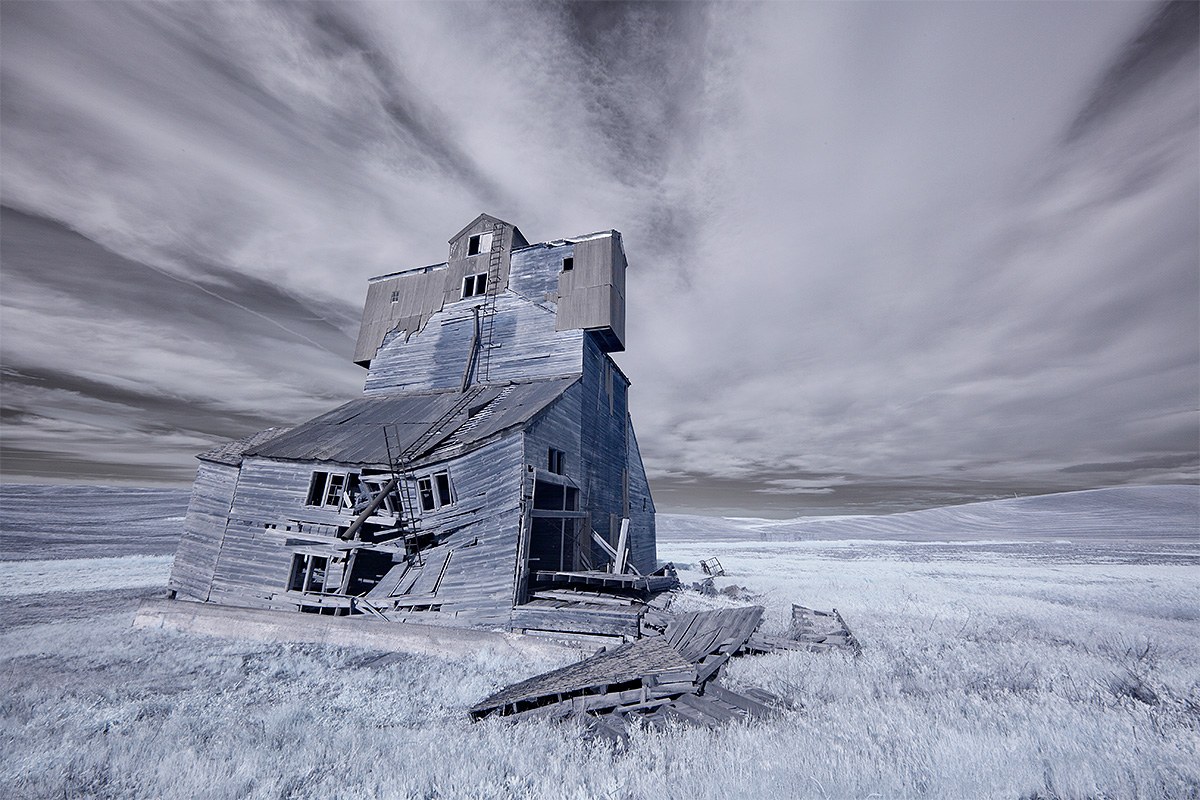
|
|
This infrared image was created on the Palouse IPT with the hand held Canon EF 11-24mm f/4L USM lens and a Canon EOS 5D Mark II converted to infrared at 720nm.
Image #3: Old grain elevator
|
The Palouse
I had a ton of fun in the Palouse, especially with Canon in-camera HDR Art Vivid captures, and with infrared.
Sony Alpha a7R IV Mirrorless Digital Camera with LifePixel Full Spectrum Infrared Conversion
Charlie Curry is offering a Sony Alpha a7R IV Mirrorless Digital Camera with LifePixel Full Spectrum Infrared Conversion in like-new condition with only 1171 shutter actuations for a silly low $1699.00. The sale includes the LifePixel box, the manuals & cords, one battery and the charger, the front cap, the camera strap, a (no longer available) SmallRig L-bracket, and insured ground shipping via major courier to lower-48 US addresses only — inquire for shipping to other locations. Payment by cashier’s check only.
Please contact Charlie via e-mail.
As you can see above, I dabbled with infrared several years ago. And loved it. Getting Charlie’s a7R IV infrared body for the same price as the body alone is a huge steal as the conversions cost several hundred dollars. artie
|
|
Creating the World’s Best JPEGs (Video)
|
Creating the World’s Best JPEGs Video: $23.00
If you, like many, think that the JPEGs that are used every day on the blog look remarkably good, you will want to grab a copy of this 16-minute video. You will learn to create relatively small, high-quality JPEGs to varying size specifications. However you wish to size your JPEGs, you will learn to create and sharpen highly detailed JPEGs that can be saved while limiting the file size. The method that I use to generically sharpen all my JPEGs is unique. Sharpening the whole image saves a ton of time and with the values that I use, nobody has ever commented on over-sharpening and the final results are spectacular. In the video, I show you exactly how I create and sharpen JPEGs for the blog and how I create and sharpen JPEGs for BirdPhotographer’s.Net. With my recipe, you will learn to create JPEGs to your specific size requirements while at the same time, maximizing image quality and limiting the file size.
You can order your copy here in the BAA Online Store.
Typos
With all blog posts, feel free to e-mail or to leave a comment regarding any typos or errors.
December 3rd, 2022 Today’s NANPA Tidbit of the Day
NANPA Executive Director Susan Day wrote in a recent e-mail to me:
The other document (sic) that you requested (a copy of the agreement between NANPA and ASMP signed by both parties) is confidential, so I obviously cannot share them.
The message to NANPA Members here is very clear: Listen to information we presented at the Town Hall. Everything that we said is true. Oh, you want to see proof of that, the agreement in which we sold NANPA and its members down the river? Sorry, that is confidential. You’ll just have to believe us. We have nothing to hide. Nothing but the agreement.
Without access to the signed agreement between NANPA and ASMP, it is not possible for anyone to know the truth, to know what is really going on.
One wonders just what they are hiding.
What’s Up?
I made it down to the lake in the morning on both Thursday and Friday. Thursday was blustery with a strong north wind. Conditions on Friday were much better, but I did not come away with anything to brag about on either day. My Thursday sunset session was equally productive.
In the AM & PM. 1200 & 200-600. What Excites Me 🙂 blog post here, my favorite image by five miles was the dancing crane sunset silhouette. While I do like the Green Heron image, this one was a no-contest for me. Several folks disagreed.
Today is Saturday 3 December 2022. I will be heading down to the lake by 7:15am. This blog post took about 90 minutes to prepare and makes two hundred fifty-one days in a row with a new, educational post just for you. Wherever you are and whatever you are doing, I hope that you too have a great day.
Please remember to use the B&H and Amazon links that are found on most blog pages and to use the BIRDSASART discount code at checkout when purchasing your new gear from Bedfords to get 3% back on your credit card and enjoy free second-day air FedEx. Please, also, consider joining a BAA IPT. You will be amazed at how much you will learn!
You can find some great photo accessories (and necessities, like surf booties!) on Amazon by clicking on the Stuff tab on the orange/yellow menu bar above. On a related note, it would be extremely helpful if blog-folks who, like me, spend too much money on Amazon, would get in the habit of clicking on the Amazon logo link on the right side of each blog post when they shop online. As you might expect, doing so will not cost you a single penny, but would be appreciated tremendously by yours truly. And doing so works seamlessly with your Amazon Prime account.
Please remember that if an item — a Delkin flash card, or a tripod head — for example, that is available from B&H and/or Bedfords, is also available in the BAA Online Store, it would be great, and greatly appreciated, if you would opt to purchase from us. We will match any price. Please remember also to use my B&H affiliate links or to earn 3% cash back at Bedfords by using the BIRDSASART discount code at checkout for your major gear purchases. Doing either often earns you free guides and/or discounts. And always earns my great appreciation.
Brand-New and As-Good-As-Ever Bedfords BAA Discount Policy
Folks who have fallen in love with Bedfords can now use the BIRDSASART coupon code at checkout to enjoy a post-purchase, 3% off-statement credit (excluding taxes and shipping charges) on orders paid with a credit card. The 3% credit will be refunded to the card you used for your purchase. Be sure, also, to check the box for free shipping to enjoy free Second Day Air Fed-Ex. This offer does not apply to purchases of Classes, Gift Cards, or to any prior purchases.
Money Saving Reminder
Many have learned that if you need a hot photo item that is out of stock at B&H and would like to enjoy getting 3% back on your credit card along with free 2nd Day Air Fed-Ex Air shipping, your best bet is to click here, place an order with Bedfords, and enter the coupon code BIRDSASART at checkout. If an item is out of stock, contact Steve Elkins via e-mail or on his cell phone at (479) 381-2592 (Central time). Be sure to mention the BIRDSASART coupon code and check the box for Free Shipping. That will automatically upgrade to free 2nd Day Air Fed-Ex. Steve has been great at getting folks the hot items that are out of stock at B&H and everywhere else. The waitlists at the big stores can be a year or longer for the hard-to-get items. Steve will surely get you your gear long before that. For the past year, he has been helping BAA Blog folks get their hands on items like the SONY a 1, the SONY 200-600 G OSS lens, the Canon EOS R5, the Canon RF 100-500mm lens, and the Nikon 500mm PF. Steve is personable, helpful, and eager to please.
Important Note
As an Amazon Associate, I earn a small percentage when you purchase from Amazon after using any of the Amazon links on the blog (including the logo-link on the right side of each blog post page). My affiliate link works fine with Amazon Prime and using it will not cost you a single cent. Huge thanks, BTW 🙂


Gear Questions and Advice
Too many folks attending BAA IPTs and dozens of photographers whom I see in the field and on BPN, are — out of ignorance — using the wrong gear, especially when it comes to tripods and more especially, tripod heads. And the same is true in spades when ordering new camera bodies or lenses. My advice will often save you some serious money and may help you avoid making a seriously bad choice. Please know that I am always glad to answer your gear questions via e-mail. If you are desperate, you can try me on my cell at 863-221-2372. Please leave a message and shoot me a text if I do not pick up.
|
|
Image #1: Wind blocker set-up
|
Creating the Wind-shield Set-up
On a windy and drizzly morning, I had gotten out of my SUV to walk around the south end of the South Field hoping for some vulture or Osprey fly-bys. As I wandered, I noticed some small white blossoms in perfect condition. The flowers had a bit of a magenta tinge. I had the macro lens in the vehicle but wondered if I could deal with the wind and low light. First, I moved the car into position to block the north wind, but the flowers were still blowing around as the wind swirled under and around my X5. I looked in the trunk and in front of the rear row of seats for something to use a a wind blocker. The first thing that I found was an oddly-shaped piece of white plastic trash that I had picked up somewhere with the intention of throwing it out. I used the end of a lens bag to hold it in place, but still the tiny flowers shook. Next, I grabbed an extra tripod and two pillows and completed the wind-chill set-up. The most pristine flower was perfectly still. You can see that blossom just in front of the bottom of the plastic trash. The white pillows were a plus as they acted a bit like reflectors.
With all the FlexShooter heads, you can loosen the black lever and point the lens down by placing the stem of the black (outer) ball into the large cutout notch in the housing. It is best to do this with the silver knob and the tripod collar tightened. As there is very little play once the black lever is full tightened, it is fairly easy to get the lens on the flower. The you can loosen the silver know and/or the tripod collar to fine-tune your framing.
As I mention here often, much of nature photography involves problem solving in the field on an almost daily basis to deal with a great variety of always-changing conditions. Join me on an IPT to see exactly how that works.
Rice Button Aster?
After consulting my wildflower guides, the best I could come up with is Rice Button Aster (Symphyotrichum dumosum). Roger Hammer’s Complete Guide to Florida Wildflowers states: The 1/2 to 3/4″ flower heads have white to lavender rays and yellow disks.
I do have a (pretty bad) cell phone image of the whole plant that shows the leaves; if you might be able to help with the ID, please get in touch via e-mail.
Typos
With all blog posts, feel free to e-mail or to leave a comment regarding any typos or errors.
December 2nd, 2022 What’s Up?
I received this e-mail from Pat Fishburne yesterday.
Dear Friends and Family:
Shortly after Hurricane Ian destroyed our home, Stokes fell and broke his hip. He had hip surgery, but at 86, his health declined rapidly thereafter. He entered Hospice Care on Nov 7th and died this morning. His passing was very peaceful, for which we are grateful.
Denise was with us for three weeks, leaving this past Sunday. Michelle arrived on Saturday and will be here until February. They have been a tremendous help and a comforting presence for both Stokes and me.
I hope you will join me in celebrating the life of this brilliant, kind man with whom I was fortunate enough to share my life with for almost 66 years. I am so very grateful, as are Michelle, Denise, Alex and Kristin.
Fondly,
Pat
Today is Friday 2 December. With Stokes’ passing, the world will not be quite as warm a place as it had been for the past eight decades. Condolences to Pat and the girls and to all who knew Stokes.
Circle — Harry Chapin
Click here to play the video.
Suggestion: read the words below while considering your life, those you’ve known, those you’ve loved, and those you’ve lost.
All my life’s a circle;
Sunrise and sundown;
Moon rolls thru the nighttime;
Till the daybreak comes around.
All my life’s a circle;
But I can’t tell you why;
Season’s spinning round again;
The years keep rollin’ by.
It seems like I’ve been here before;
I can’t remember when;
But I have this funny feeling;
That we’ll all be together again.
No straight lines make up my life;
And all my roads have bends;
There’s no clear-cut beginnings;
And so far no dead-ends.
I found you a thousand times;
I guess you done the same;
But then we lose each other;
It’s like a children’s game;
As I find you here again;
A thought runs through my mind;
Our love is like a circle;
Let’s go ’round one more time.
I found you a thousand times;
I guess you done the same;
But then we lose each other;
It’s like a children’s game
Harold Forster Chapin (December 7, 1942 – July 16, 1981) was an American singer-songwriter and philanthropist best known for his folk rock and pop rock songs. His band did Circle at every concert. The band donated a ridiculously large part of their earnings to various world hunger projects. The most ironic verse above is And so far no dead-ends. Why? Harry died in a car crash on the Long Island Expressway on the way to perform at a free benefit concert at Eisenhower Park in East Meadow, in 1981.
Harry’s most popular song was Cat’s in the Cradle, but his lifelong fans are enamored by his various story songs, most of which received little air play. In the amazingly interesting Wikipedia article linked to above, I learned that Harry attended Brooklyn Technical High School (as I did), and that in 1968 (four years after I graduated Tech), he directed Legendary Champions, a boxing documentary that was nominated for an Academy Award.
|
|
Pat and Stokes Fishburne two years ago celebrating their 63rd wedding anniversary
|
One of the many great things in my life …
One of my many blessings along the road have been meeting some really great folks who have become lifelong friends. Pat and Stokes are just two of many. We met of course, on an IPT, more than twenty years ago. They came on many more – ten in all, many twice. The first to Southwest Florida, was the year before they left on a seven year motorhome odyssey. Their favorite IPT by far was a Galapagos Photo-Cruise. Pat, who will be 84 in March, and Stokes, who would have been 86 in February, are two of the nicest, sweetest people you could ever hope to meet.
|
|
Pat and Stokes (formal) wedding ceremony
|
A Strikingly Beautiful Image From More Than 60 Years Ago
I think that even if you have never met Stokes and Pat, this image would touch you deeply. So much tradition. So much beauty. They eloped on Dec. 31, 1956, but when Stokes graduated in June 1957, they had a formal wedding at the Citadel Chapel. The Citadel — The Military College of South Carolina, commonly known simply as The Citadel, is a military college in Charleston, South Carolina. Amazingly, Pat’s warm smile has not changed one bit over the years.
|
|
Pat and Stokes at Thanksgiving 2020
|
Ordinary People; Extraordinary Lives
Stokes wanted to be a pilot in the Air Force, but when he attended ROTC camp the summer before his senior year, they did an in-depth medical exam and discovered that he was profoundly color blind and had severe hearing loss. As you might imagine, that was the end of his military career and his dreams of becoming a pilot. After reading the Wikipedia article on The Citadel (link above), I asked Pat — already knowing the answer — if Stokes had ever gotten any Demerits. She replied, Stokes was on the Regimental Command in his senior year — you don’t get that kind of job if you had any demerits.
After graduating from The Citadel, Stokes got a Ph.D. from Ohio State University where he was involved in running the Rocket Research Lab at Ohio State University. After Stokes got his Ph.D. at Ohio State, he became the Deputy Director of the Lab. Then, he went to work at Bethpage, Long Island with Grumman Aircraft, the manufacturer of the lunar excursion module. When Stokes went into work on the morning after the Apollo 13 problem occurred, NASA called to say they had three hours to help figure out how to bring the astronauts back to earth. Stokes and his partner, Dick Oman, used slide rulers (not computers!) to do the needed calculations.
I did an article for Bird Watcher’s Digest many years ago entitled Hummingbird Hosts about Wally and Marion Patton. The Pattons invited folks into their Patagonia, Arizona backyard to watch the hummers at their feeders. When I interviewed Wally I learned that he ran a lost wax foundry that made parts for gyroscopes used in the lunar excursion modules! Indeed, all our lives are circles.
|
|
Michelle Fishburne: Who We Are Now
|
The Fishburne Family
Pat earned a Ph.D. in sociology from NYU. She was a vice president at Response Analysis in Princeton, NJ for ten years, and planned to retire when she left. But many of her clients needed her, so she formed her own consulting firm — Patricia Fishburne Associates, and continued to do social research. For ten more years, she worked long hours, traveled constantly, and earned a lot of money.
In 1979, Stokes formed SciTec, a cutting-edge Princeton, NJ firm that focused on scientific and technological innovation. After ten years, he sold SciTec to TRW, a former American corporation involved in a variety of businesses including aerospace, automotive, and credit reporting. In 1995, Stokes retired, and the Fishburnes moved to Sanibel, FL. Stokes continued consulting for TRW. In 2002, Pat and Stokes sold their Sanibel home, bought a motorhome, and spent 7 wonderful years touring and photographing in the U.S.
Before I lost my beloved wife Elaine Belsky Morris to breast cancer in 1994, I thought that some folks might get through life without ever having to deal with any great change, without having to deal with any difficult and challenging situations, or without having to deal with any great losses. Obviously I was wrong. I do know that Patricia Fishburne has guided her family through some very tough times. Always with her chin up, and always with a smile.
Pat and Stokes have two daughters and two grandchildren. One of those, an inventor, did a Ted Talk at age 15! Their youngest daughter, Denise Fishburne, has worked at Cisco Systems for more than 24 years. Denise has been making yearly presentations at Cisco Live, both in the U.S. and in Europe. She was named to the Cisco Live Speaker Hall of Fame years ago. Last year she was elevated to “Elite,” a status achieved by only a few people worldwide.
Their oldest daughter, Michelle Fishburne, is a lawyer who has worked in public relations for the past decade. This excerpt is from Pat and Stokes 2020 Christmas letter. It tells you what Michelle has been doing recently.
Our oldest daughter, Michelle, has a much more interesting story, but I will let her tell it: “Sometimes life turns you upside down, dumps you on the floor, and asks ‘so what are you going to do about it?’ That’s what happened to me in 2020. I lost some of my hearing, I lost some of my balance, I lost my job, and I became a single empty nester without a house. That’s what I didn’t have. What I did have, including a positive attitude, has led to one of the happiest periods of my life, traveling throughout the U.S. in my RV and interviewing people about their 2020 experiences.”
The name of Michelle’s project is “Who We Are Now.” Beginning in September she traveled from North Carolina to Wyoming, interviewing a wide variety of people, from mayors and food bank operators to teachers and entertainers. After Christmas, she will take the southern route to California, interviewing people along the way. Click here to learn, in their own words, how people are dealing with their changed lives during COVID.
Typos
In all blog posts and Bulletins, feel free to e-mail or to leave a comment regarding any typos or errors.
December 1st, 2022
|
|
Results of the NANPA Referendum calling for, in part, that the board put the question of joining with ASMP to a vote of the members
|
NANPA Tidbit of the Day
Most– probably well more than two of the 2 1/2-hour NANPA (Members-only) — supposed Town Hall session were spent extolling the virtues of both NANPA’s and ASMP’s leaders and boards. Not a single NANPA member got to speak or ask a question. Attendees were repeatedly told how great things would be, of all the great benefits they would now enjoy, and how dedicated, hard-working, skilled, wonderful, honorable, well-intentioned, and virtuous were the folks who set this “agreement” up in secret behind their member’s backs.
Near the very end, after answering dozens of carefully selected, hand-picked softball questions while ignoring many dozens of pointed questions that had been posted by the opposition, NANPA President Beth Huning said, and I quote exactly:
Oh, I found it. I found it. And this is gonna be a kind of general answer, uh, because there are a lotta specifics and there’s not a lotta time to do into the details, but one of the questions had to do with the fact that we recognize that a Referendum has been proposed by a group of members. Um, and the question had to do with when the board um, will address it. Uh, and, I just wanted everybody to realize that before this Refer … Referendum was presented, the agreement with ASMP had already been signed. And so, this Referendum came in after the signing of the agreement. And so the board is wrestling now with how to address it. But we have 45 days to figure that out. And so we may not get you an answer right away, and we are in a transition with ASMP we recognize that those concerns are out there. There are — is a vocal group that doesn’t like this and were not gonna be able to please everybody. But at the same time we have a lotta members that have been clamoring for the kinds of benefits that we’ve been talking about here today.
This is what she was actually saying to the 95% of the NANPA membership: “We do not care what you say or think. We say that the deal is done, therefore, it is done; who are you to question that? We will continue to evade and stall just as we have been doing for months.”
What’s Up?
On Wednesday, I got down to the lake twice, once in the morning, and then again at sunset. I enjoyed two fairly productive sessions. I was glad to learn that multiple IPT-veteran Mike De Rosa was the first to sign up for the Spoonbill MINI IPT. See yesterday’s blog post for details.
Today is Thursday 1 December 2022. This blog post took about two hours to minutes to prepare and makes two hundred forty-eight days in a row with a new, educational post just for you. Wherever you are and whatever you are doing, I hope that you too have a great day.
Please remember to use the B&H and Amazon links that are found on most blog pages and to use the BIRDSASART discount code at checkout when purchasing your new gear from Bedfords to get 3% back on your credit card and enjoy free second-day air FedEx. Please, also, consider joining a BAA IPT. You will be amazed at how much you will learn!
You can find some great photo accessories (and necessities, like surf booties!) on Amazon by clicking on the Stuff tab on the orange/yellow menu bar above. On a related note, it would be extremely helpful if blog-folks who, like me, spend too much money on Amazon, would get in the habit of clicking on the Amazon logo link on the right side of each blog post when they shop online. As you might expect, doing so will not cost you a single penny, but would be appreciated tremendously by yours truly. And doing so works seamlessly with your Amazon Prime account.
Please remember that if an item — a Delkin flash card, or a tripod head — for example, that is available from B&H and/or Bedfords, is also available in the BAA Online Store, it would be great, and greatly appreciated, if you would opt to purchase from us. We will match any price. Please remember also to use my B&H affiliate links or to earn 3% cash back at Bedfords by using the BIRDSASART discount code at checkout for your major gear purchases. Doing either often earns you free guides and/or discounts. And always earns my great appreciation.
|
|
|
This image was created on 11 November 2022 down by the lake near my home at Indian Lake Estates, FL. Working from my SUV, I used the BLUBB--supported Sony FE 600mm f/4 GM OSS lens, the Sony FE 2.0x Teleconverter, and The One, the Sony Alpha 1 Mirrorless Digital Camera). The exposure was determined via Zebra technology with ISO on the thumb dial. ISO 1000: 1/1000 sec. at f/8 (wide open). When evaluated in RawDigger, the raw file exposure was determined to be 1/3 stop too dark. AWB at 8:07:16am on a clear mostly sunny morning.
Tracking: Zone AF-C with Bird Face/Eye detection enabled performed perfectly even at 1200mm. Be sure to click on the image to enjoy a high-res version.
Image #1: Green Heron–adult on The Perch with crest raised
|
What Excites Me? (I)
Making a decent image of a new species on The Perch excites me. As Green Herons are generally quite skittish, I slapped the 2X TC onto the 600 f/4, put the rig on the BLUBB- after making sure that the Direct Manual Focus switch was set to OFF, and approached very cautiously while limiting my movement. I stopped more than 160 feet (48.89 meters) from the subject. Image #1 is a small proportionate crop from the top and bottom left.
Your Call
Which of today’s two featured images do you like best? Why?
|
|
|
This image was created on 11 November 2022 down by the lake near my home at Indian Lake Estates, FL. While seated on the grass, I used the handheld Sony FE 200-600mm f/5.6-6.3 G OSS lens (at 426mm) and The One, the Sony Alpha 1 Mirrorless digital camera. ) The exposure was determined using Zebra technology with ISO on the Thumb Dial. ISO 5000. 1/1000 second at f/6.3 (wide-open) in Manual Mode. AWB at 5:46:57pm right at sunset on a mostly cloudy afternoon. RawDigger showed the exposure to be dead-solid perfect with the center of the sun ball over-exposed just a bit.
Tracking: Zone AF-C with Bird Face/Eye Detection produced a sharp image. Be sure to click on the image to enjoy a high-res version.
Image #2: Sandhill Crane at sunset dancing with dead grasses
|
What Excites Me? (II & III)
Finding something good at the very end of a session excites me. As does having something photographically amazing unfold right in front of me. I headed down to the lake at 5:12pm in hopes of creating some sunset silhouettes. It was a stormy afternoon with large dark clouds covering most of the sky, but I hoped that I might get lucky as there was a bright orange bit of clear sky on the southwest horizon right where the sun would be going down. At this time of year, there are often big flocks of Icterids flying around late in the day and groups of wading birds flying into the nighttime roost in the reeds. But not last night.
I headed down to the vulture trees and almost stopped for a 70-200 sunset scenic with three cranes in the foreground with lots of trees in the background. As the sun had just come out from the lowest layer of clouds, the contrast would have been too great, so I made a U-turn and headed to the South Field. As the sun was getting ready to disappear at the end of the day, I came across two cranes. So, I grabbed the 200-600 and scrambled to get on the ground for some crane silhouettes. I made a very few images when the one of the cranes picked up some dried grasses and began dancing with the other bird. Several times I needed to get up and move left or right and get back down to place the action right in front of the color. I created more than 100 images in about two minutes. All but one of them sucked and were deleted instantly.
Serendipity counts for a lot in nature photography. But the fact is that I kept trying. And once the magic happened in front of me, I was able to adjust the camera settings and come up with a single sharp, nicely-framed image with a workable exposure. BTW, many good images were deleted because I was too greedy and did not zoom out enough to avoid clipping wings and feet.
November 30th, 2022 What’s Up?
The NANPA Town Hall Meeting was much worse than I predicted. Details tomorrow. I did get down to the lake on Tuesday morning in ideal conditions without much to show for my efforts. Kudos to the US Men’s National Soccer Team on advancing to the Knock-Out round of the World Cup by defeating Iran yesterday 1-0. The tension in the second half was unbearable. Young superstar Christian Pulisic was injured as he scored the winning goal in the first half. He managed to finish the half. When he was led to the locker room he looked as if he had survived an horrific car crash. He has already vowed to be on the pitch for Saturday’s clash with the Netherlands.
Today is Wednesday 30 November 2022. This blog post took about two hours to prepare and makes two hundred forty-eight days in a row with a new, educational post just for you. Wherever you are and whatever you are doing, I hope that you too have a great day.
Please remember to use the B&H and Amazon links that are found on most blog pages and to use the BIRDSASART discount code at checkout when purchasing your new gear from Bedfords to get 3% back on your credit card and enjoy free second-day air FedEx. Please, also, consider joining a BAA IPT. You will be amazed at how much you will learn!
You can find some great photo accessories (and necessities, like surf booties!) on Amazon by clicking on the Stuff tab on the orange/yellow menu bar above. On a related note, it would be extremely helpful if blog-folks who, like me, spend too much money on Amazon, would get in the habit of clicking on the Amazon logo link on the right side of each blog post when they shop online. As you might expect, doing so will not cost you a single penny, but would be appreciated tremendously by yours truly. And doing so works seamlessly with your Amazon Prime account.
Please remember that if an item — a Delkin flash card, or a tripod head — for example, that is available from B&H and/or Bedfords, is also available in the BAA Online Store, it would be great, and greatly appreciated, if you would opt to purchase from us. We will match any price. Please remember also to use my B&H affiliate links or to earn 3% cash back at Bedfords by using the BIRDSASART discount code at checkout for your major gear purchases. Doing either often earns you free guides and/or discounts. And always earns my great appreciation.
|
|
All images on this card were created by Arthur Morris on the Hooptie Deux at Alafia Banks
|
2023 Spoonbill Boat 1-1/2 DAY MINI-IPT: $1199.00.00. Limit: 5 photographers.
A full day on WED 15 FEB and the morning of Thursday 16 FEB 2023: 1 1/2 days.
Two morning and one afternoon photo session (weather permitting) via customized pontoon boat.
For early-arriving folks, artie is throwing in a free afternoon In-the-Field session at a little-known but very active rookery in North Tampa on Sunday 12 February.
We will be leaving the dock in Gibsonton, FL very early for the morning sessions in hopes of photographing a pre-dawn White Ibis blast-off and creating some dramatic silhouettes or pleasing blurs. The morning sessions are planned for the Alafia Banks Roseate Spoonbill Rookery. We have several options for the afternoons including returning to Alafia. We may spend one afternoon on foot at the North Tampa rookery mentioned above. There will be lots of opportunities for flight photography of several species including and especially Roseate Spoonbill. Also likely for flight photography are nesting Brown Pelican, Great Blue Heron, and Double Crested Cormorant, many carrying nesting material. This IPT includes all boat and guide fees, in-the-field instruction from two great leaders, chest waders (feel free to bring your own of course to assure a perfect fit), and three working lunches (Monday thru Wednesday). For the most part we will be standing in mid-calf to knee-deep water behind our tripods. We help you get in and out of the boat safely with your gear. This is likely not the best trip for folks with mobility or balance problems. Note however that some folks opt to stay on the boat to photograph. They usually have lots of chances for flight photography of spoonbills and other species but are almost always pretty far away from the spoonbills that land.
Mid-February is prime time for photographing spoonbills at the absolute peak of breeding plumage. For unknown reasons, the spoonbills at Alafia are much more colorful than the birds that breed at Stick Marsh later in the season. The Hooptie IPT represents an incredible opportunity and I do hope that you can join us. All of the images on the cards were made on the Hooptie Duex during the last two weeks of February, prime time for the spoonies in mega-breeding plumage.
You may hold your spot with an e-mail request. Then, you may either secure your spot by calling Jim or Jennifer at the office at 863-692-0906 and leaving the $599 deposit on credit card or sending your check for payment in full to us as follows with the check made out to:
BIRDS AS ART
Please send it via US mail here:
BIRDS AS ART
PO BOX 7245
Indian Lake Estates, FL 33855
If you call to leave your deposit, you will be asked to mail your check for the balance ASAP. Be sure to give us your e-mail address.
|

|
|
Images courtesy of our guide; copyright 2017 Captain James Shadle (aka Froggie). All of the images here were created at Alafia Banks. Card creation and design by Arthur Morris/BIRDS AS ART.
|
Everybody Wants Spoonbills!
Roseate Spoonbill is one of if not the most sought after avian photographic subjects in Florida. They are generally hard to find and somewhat difficult to approach. They are relatively easy to find at Alafia Banks—heck, you can’t miss seeing them, but even there they can on some days be somewhat difficult to approach. On some days we may be able to get ridiculously close to them. The huge incentive to get out to Alafia Banks in mid-February is the chance to photograph this species at the height of its spectacular breeding plumage…. with long telephoto lenses. A 500 or 600 with a 1.4X TC is perfect for flight.
As above, there will — weather permitting — three boat trips — 2 mornings and 1 afternoon — on this MINI IPT. All to Alafia Banks for spoonbills and Brown Pelicans (with lots of flight photography often with the birds likely carrying nesting material), Double-crested Cormorants, ibises (both Glossy and White) in breeding plumage. Many of the White Ibises will be sporting their spectacular, distended, red, naked (un-feathered) throat pouches—typically larger in the females. In addition, we may get to photograph egrets including Great and Reddish, both in full breeding plumage, shorebirds, and more. There will be lots of flight photography opportunities. Afternoon trips either to Alafia Banks for spoonbills and more or to a more sheltered inland rookery location for a variety of nesting birds. In the event of horrific weather artie will either take the group to Fort DeSoto or will conduct an image review/Photoshop session. This IPT includes lunches on the full day with small group image sharing and review and some over-the-shoulder Photoshop instruction.
The 2023 Expanded Winter/Spoonbill Boat/DeSoto 4-DAY IPT: $2199.00.00. Limit: 5 photographers.
The 2023 Expanded Winter/Spoonbill Boat/DeSoto 4-DAY IPT
Bird photographers, especially those wishing to escape the snow, ice, and freezing winter temperatures to the north of sunny Florida, can add two mornings at Fort DeSoto an afternoon at the little-known but fabulous rookery north of Tampa, a second (free) afternoon at that same rookery, to the 1 1/2 days on the Spoonbill Boat. Shared lodging is a possibility that includes watching the Super Bowl at my home on Sunday 12 February and driving over early to DeSoto. DeSoto is one of the very few bird photography hotspots that has the possibility of being great on any day of the year. It is generally superb in winter with lots of wading birds, terns, both species of pelicans, many species of shorebirds including Marbled Godwit, and lots of flight photography.
You can hold your spot with an e-mail request. Then, you may either secure your spot by calling Jim or Jennifer at the office at 863-692-0906 and leaving the $599 deposit on your credit card or sending your check for payment in full to us as follows with the check made out to:
BIRDS AS ART
Please send it via US mail here:
BIRDS AS ART
PO BOX 7245
Indian Lake Estates, FL 33855
If you call to leave your deposit, you will be asked to mail your check for the balance ASAP. Be sure to give us your e-mail address.
|
|
|
This image was created on 15 January 2011 on a Spoonbill/Hooptie Deux IPT. Seated in at least a behind my lower tripod, I used the Canon EF 800mm f/5.6L IS USM Lens with the Canon Extender EF 1.4X III (at 1140mm) and the EOS-1D Mark IV. The exposure was determined via histogram and blinkies review. ISO 400. 1/800 sec. at f/11 (stopped down stop). AWB at 8:28:40am on a sunny morning.
AF Method unknown. Click on the image to enjoy a high-res version.
Image #1 — Roseate Spoonbill — mega-breeding plumage preening
|
Memories of My Most Gorgeous Spoonbill Ever
I was sitting on an uphill slope in my waders. As I struggled to frame the shot in what was a very awkward shooting position, I almost fell over backwards into slightly deeper water. I remember thinking, “It would be very embarrassing to drown in 18 inches of water.” Captain James saw my plight, grabbed my waders between my shoulder blades, and, yanking me up, helped me restore my balance. And create today’s featured image. Check out James’ photo of this same bird on his card above.
I have very fond memories of the EF 800mm f/5.6 lens, all ten pounds of it. The minimum focusing distance, just under 20 feet, was superb for the time and was a lot better than the 45 feet of the FD 800mm f/5.6 lens. As you can see by clicking on today’s featured image, sharpness with the 1.4X III TC was just fine. A great number of images on the Top 100 CD were created with this lens. I was amazed to find that the lens is still in production and is in stock at B&H here. I was also amazed to learn that there is an RF version of this lens, the Canon RF 800mm f/5.6 L IS USM. If you’d like to learn the skinny on the RF version, please get in touch via e-mail.
|
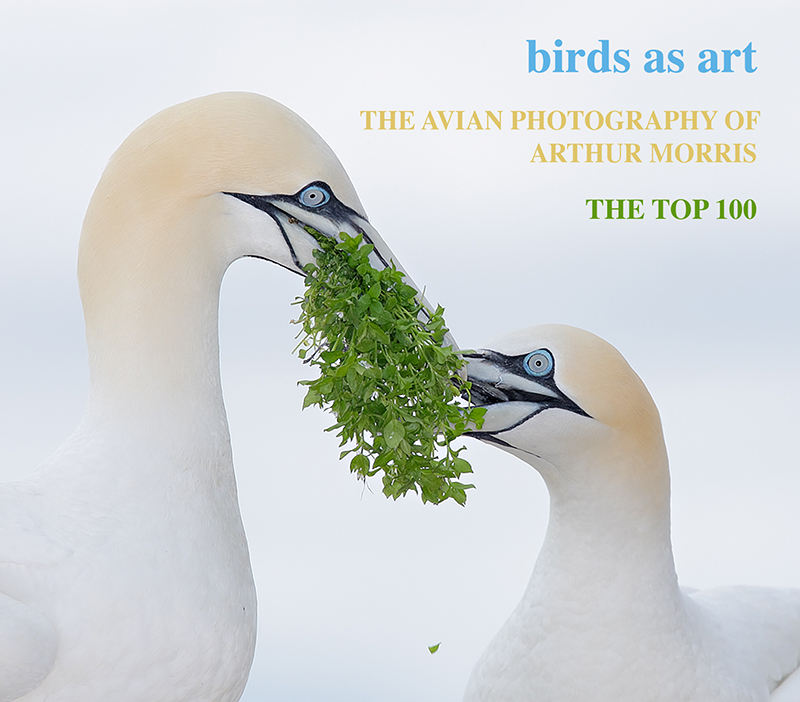
|
birds as art: The Avian Photography of Arthur Morris/The Top 100
The companion e-book to the solo exhibit at TheNat, San Diego, California
The new e-book on CD is available here.
|
birds as art: The Avian Photography of Arthur Morris/The Top 100
This e-book was created on a wing and a prayer in less than two weeks–see the “Harebrained Scheme” blog post here–includes the 67 spectacular images that hung in the Ordover Gallery at the San Diego Natural History Museum in a career-retrospective solo exhibition in 2017. In addition, there are an additional 33 images in the spectacular e-book that barely missed making the show.
This exhibition companion e-book makes it possible for everyone to “visit” TheNAT gallery retrospectively and retroactively, and, in addition, to enjoy seeing my then-top one hundred bird photographs under one roof. Each image includes a title, the species name, the location, relevant EXIF data, and an anecdotal caption.
birds as art: The Avian Photography of Arthur Morris/The Top 100: $23 for the professionally produced CD (includes shipping to US addresses only)
Please click here to purchase the CD. As above, your purchase price includes shipping to all US addresses. If you would like your CD signed on the inside cover with a black Sharpie, you will need to place your order by phone and request a signed copy: 863-692-0906. For our Canadian friends we are offering the CD for $28 with shipping to Canada via phone orders only: 863-692-0906. Those who purchase the CD are advised to copy the file to their computers and then archive the CD.
To purchase via convenient download for $20, click here.
November 29th, 2022 San Diego IPT #1 Late Registration Discount
Please shoot me an e-mail if you would like to the San Diego IPT #1 Late Registration Discount. Note that due to a cancellation, there is now a single opening on San Diego #2.
|
|
|
This all-new card includes images created on my JAN 2022 visit to San Diego. Click on the composite to enjoy a larger version.
|
The 2022/23 San Diego Brown Pelicans (and more!) IPTs
San Diego IPT #1. 3 1/2 DAYS: WED 21 DEC thru the morning session on Saturday 24 DEC 2022. $2099.00. Deposit: $699.00. Limit: 6 photographers/Openings: 5.
San Diego IPT #2. 4 1/2 DAYS: SAT 7 JAN thru the morning session on WED 11 JAN 2023: $2699.00. Deposit: $699.00. Limit: 6 photographers/1 Opening.
San Diego IPT #3: 4 1/2 DAYS: THURS 19 JAN thru the morning session on MON 23 JAN 2023: $2699.00. Deposit: $699.00. Limit: 6 photographers.
Please e-mail for information on personalized pre- and post-IPT and In-the-Field Sessions.
Join me in San Diego to photograph the spectacular breeding plumage Brown Pelicans with their fire-engine red and olive green bill pouches; Brandt’s (nesting) and Double-crested Cormorants; breeding plumage Wood and Ring-necked Ducks; other duck species possible including Lesser Scaup, Redhead, Northern Shoveler and Surf Scoter; a variety of gulls including Western, California, and the gorgeous Heermann’s, all in full breeding plumage; shorebirds including Marbled Godwit, Willet, Sanderling and Black-bellied Plover; many others are possible including Least, Western, and Spotted Sandpiper, Whimbrel, Black and Ruddy Turnstone, Semipalmated Plover, and Surfbird; Harbor Seals and California Sea Lions (both depending on the current regulations and restrictions). And as you can see by studying the IPT cards, there are some nice bird-scape and landscape opportunities as well. Not to mention a ton of excellent flight photography opportunities and instruction.
Please note: where permitted and on occasion, ducks and gulls may be attracted (or re-located) with offerings of grains or healthy bread.
|
|
|
San Diego offers a wealth of very attractive natural history subjects, including and especially the Pacific race of California Brown Pelican. With annual visits spanning more than four decades, I have lots of photographic experience there … Click on the composite to enjoy a larger version.
|
Learning Exposure, Whether You Like It Or Not
Whether you like it or not, we will be beating the subject of exposure like a dead horse. In every new situation, you will hear my thoughts on exposure along with my thoughts on both Nikon and Canon histograms and SONY Zebras. Whether you like it or not, you will learn to work in manual mode so that you can get the right exposure every time (as long as a bird gives you ten seconds with the light constant). Or two seconds with SONY zebras … And you will learn what to do when the light is changing constantly. What you learn about exposure will be one of the great takeaways on every IPT.
|
|
|
Though the pelicans will be the stars of the show on this IPT, there will be many other handsome and captivating subjects in wonderful settings. Click on the composite to enjoy a larger version.
|
It Ain’t Just Pelicans
With gorgeous subjects just sitting there waiting to have their pictures taken, photographing the pelicans on the cliffs is about as easy as nature photography gets. With the winds from the east almost every morning there is usually some excellent flight photography as well, often with 70-200mm lenses! And the pelicans are almost always doing something interesting: preening, scratching, bill pouch cleaning, or squabbling. And then there are those crazy head throws that are thought to be a form of intra-flock communication. You will be guided as to how to make the best of those opportunities. Depending on the weather, the local conditions, and the tides, there are a variety of other fabulous photo chances available in and around San Diego.
|
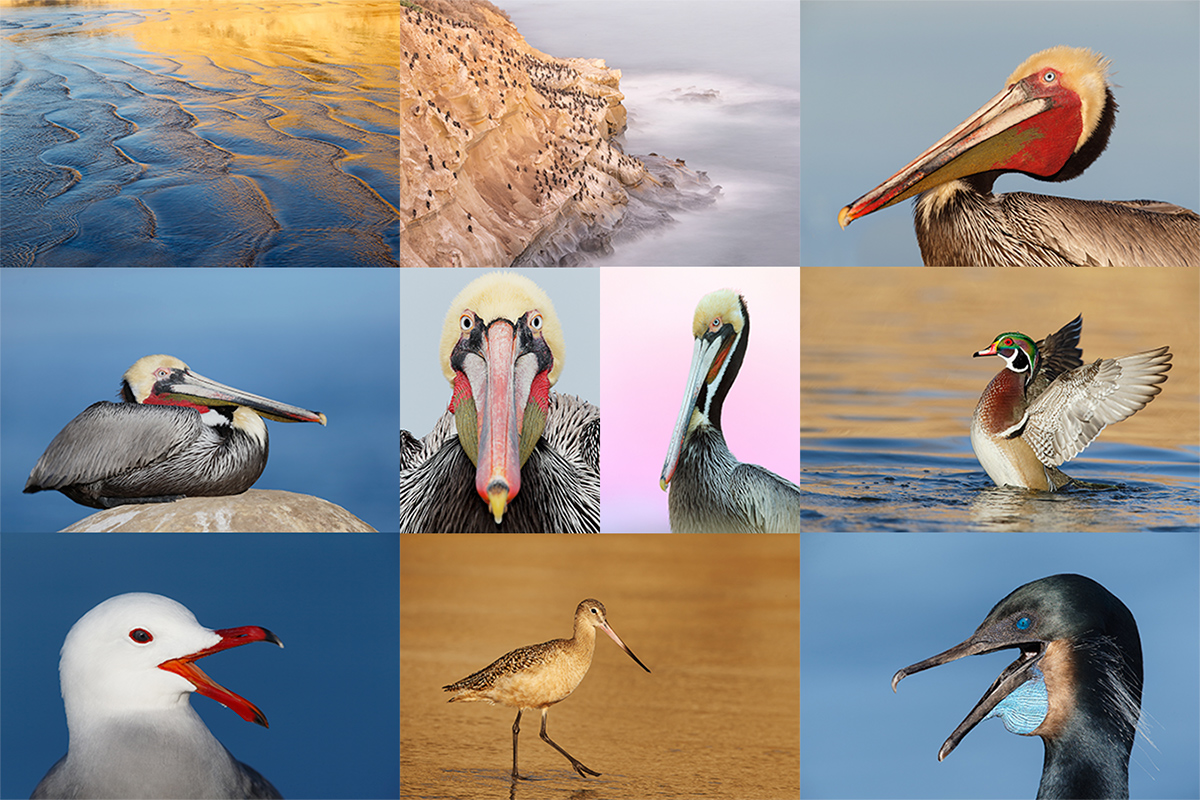
|
|
Did I mention that there are lots of great birds and natural history subjects in San Diego in winter? Click on the composite to enjoy a larger version.
|
The San Diego Details
These IPTs will include four or five 3-hour morning photo sessions, three or four 1 1/2-hour afternoon photo sessions, and three or four working brunches that will include image review and Photoshop sessions. On rare cloudy days, we may — at the leader’s discretion, stay out in the morning for a long session and skip that afternoon. To ensure early starts, breakfasts will be your responsibility. And so that we can get some sleep, dinners will be on your own as well. In the extremely unlikely event that Goldfish Point is closed due to local ordinance (or whimsy) — that has never happened in the past fifty years, I will of course do my very best to maximize our photographic opportunities.
|
|
|
San Diego offers a wealth of very attractive natural history subjects, including and especially the Pacific race of California Brown Pelican. With annual visits spanning more than four decades, I have lots of photographic experience there … Click on the composite to enjoy a larger version.
|
Deposit Info
A $699 deposit is required to hold your slot for one of the 2022/23 San Diego IPTs. You can send a check (made out to “BIRDS AS ART”) to us here: BIRDS AS ART, PO Box 7245, Indian Lake Estates, FL, 33855, or call Jim or Jennifer at the office with a credit card at 863-692-0906. Your balance, payable only by check, is due three months before the trip.
|
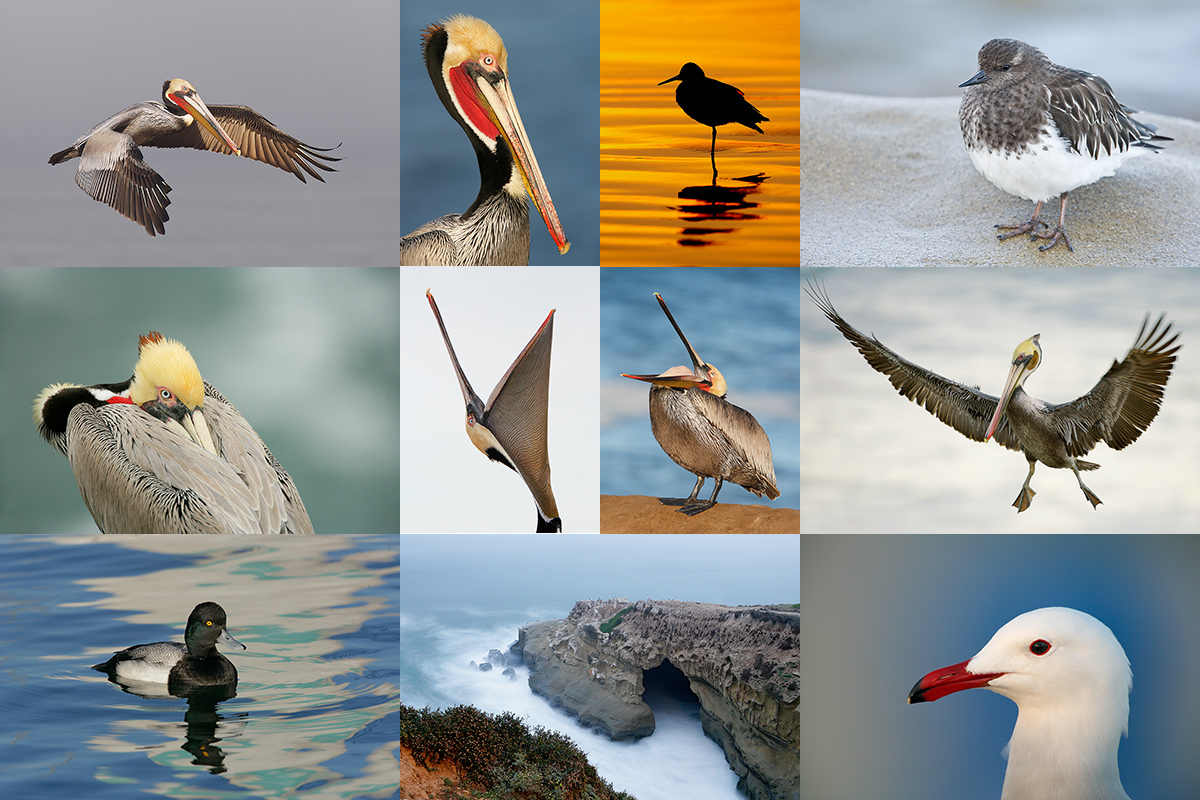
|
|
Variety is surely the spice of life in San Diego. Click on the composite to enjoy a larger version.
|
Getting Up Early and Staying Out Late
On all BIRDS AS ART IPTS including and especially the San Diego IPT, we get into the field early to take advantage of unique and often spectacular lighting conditions and we stay out late to maximize the chances of killer light and glorious sunset silhouette situations. We often arrive at the cliffs a full hour before anyone else shows up to check out the landscape and seascape opportunities.
What’s Up?
I did not make it down to the lake yesterday morning because I had many hours of work to do on the NANPA/ASMP non-merger. I hope to get down this morning as it is slated to be the first clear sunrise in weeks.
Today is Tuesday 29 November 2022. This blog post took about 90 minutes to prepare and makes two hundred forty-seven days in a row with a new, educational post just for you. Wherever you are and whatever you are doing, I hope that you too have a great day.
Please remember to use the B&H and Amazon links that are found on most blog pages and to use the BIRDSASART discount code at checkout when purchasing your new gear from Bedfords to get 3% back on your credit card and enjoy free second-day air FedEx. Please, also, consider joining a BAA IPT. You will be amazed at how much you will learn!
You can find some great photo accessories (and necessities, like surf booties!) on Amazon by clicking on the Stuff tab on the orange/yellow menu bar above. On a related note, it would be extremely helpful if blog-folks who, like me, spend too much money on Amazon, would get in the habit of clicking on the Amazon logo link on the right side of each blog post when they shop online. As you might expect, doing so will not cost you a single penny, but would be appreciated tremendously by yours truly. And doing so works seamlessly with your Amazon Prime account.
Please remember that if an item — a Delkin flash card, or a tripod head — for example, that is available from B&H and/or Bedfords, is also available in the BAA Online Store, it would be great, and greatly appreciated, if you would opt to purchase from us. We will match any price. Please remember also to use my B&H affiliate links or to earn 3% cash back at Bedfords by using the BIRDSASART discount code at checkout for your major gear purchases. Doing either often earns you free guides and/or discounts. And always earns my great appreciation.
Brand-New and As-Good-As-Ever Bedfords BAA Discount Policy
Folks who have fallen in love with Bedfords can now use the BIRDSASART coupon code at checkout to enjoy a post-purchase, 3% off-statement credit (excluding taxes and shipping charges) on orders paid with a credit card. The 3% credit will be refunded to the card you used for your purchase. Be sure, also, to check the box for free shipping to enjoy free Second Day Air Fed-Ex. This offer does not apply to purchases of Classes, Gift Cards, or to any prior purchases.
Money Saving Reminder
Many have learned that if you need a hot photo item that is out of stock at B&H and would like to enjoy getting 3% back on your credit card along with free 2nd Day Air Fed-Ex Air shipping, your best bet is to click here, place an order with Bedfords, and enter the coupon code BIRDSASART at checkout. If an item is out of stock, contact Steve Elkins via e-mail or on his cell phone at (479) 381-2592 (Central time). Be sure to mention the BIRDSASART coupon code and check the box for Free Shipping. That will automatically upgrade to free 2nd Day Air Fed-Ex. Steve has been great at getting folks the hot items that are out of stock at B&H and everywhere else. The waitlists at the big stores can be a year or longer for the hard-to-get items. Steve will surely get you your gear long before that. For the past year, he has been helping BAA Blog folks get their hands on items like the SONY a 1, the SONY 200-600 G OSS lens, the Canon EOS R5, the Canon RF 100-500mm lens, and the Nikon 500mm PF. Steve is personable, helpful, and eager to please.
Important Note
As an Amazon Associate, I earn a small percentage when you purchase from Amazon after using any of the Amazon links on the blog (including the logo-link on the right side of each blog post page). My affiliate link works fine with Amazon Prime and using it will not cost you a single cent. Huge thanks, BTW 🙂


Gear Questions and Advice
Too many folks attending BAA IPTs and dozens of photographers whom I see in the field and on BPN, are — out of ignorance — using the wrong gear, especially when it comes to tripods and more especially, tripod heads. And the same is true in spades when ordering new camera bodies or lenses. My advice will often save you some serious money and may help you avoid making a seriously bad choice. Please know that I am always glad to answer your gear questions via e-mail. If you are desperate, you can try me on my cell at 863-221-2372. Please leave a message and shoot me a text if I do not pick up.
Apples and Oranges. Night and Day
Today’s two featured images are as different as night and day. Selecting your favorite image is like comparing apples and oranges, not to mention Canon versus Nikon.
|
|
|
This image was created on 16 January 2018 on a San Diego IPT. I used the handheld Canon EF 100-400mm f/4.5-5.6L IS II USM lens (at 338mm) and the EOS-1DX Mark II. The exposure was determined via histogram and blinkies review. ISO 800. 1/500 sec. at f/10 (stopped down 1 2/3 stops). AWB at 8:40:29am on a partly sunny morning.
AF Method unknown. Click on the image to enjoy a high-res version.
Image #1 — Brown Pelican — non-breeding Pacific-race resting
|
The Image Clean-up
As this image was created after an over-night rain, very little clean-up was needed. There were two tiny bits of bird poop that were eliminated.
A Color Mixer Video
I absolutely need to begin assembling images so that I can prepare a Color Mixer Video, not only for the BLUEs, but for all colors. This powerful tool allows you to fine-tune the color in your images. In Image #1, using the BLUE Saturation and Luminance sliders brought the ocean background to life.
Color Question
Do the dark tones of the belly feathers have a red color cast?
Depth of Field Question
Considering that I was stopped down almost two full stops, why is there no detail at all in the ocean background???
|
|
|
This image was created on January 28 at La Jolla, CA on a San Diego IPT. I used the hand held Nikon AF-S NIKKOR 200-500mm f/5.6E ED VR lens (at 500mm) and the mega mega-pixel Nikon D850 DSLR.. Shutter Priority Mode +1.7 stops. AUTO ISO set ISO 30 sec. at f/6.3. AWB at 7:15:34am just before the sun came over the hill to the east/northeast.
Center Group/Shutter Button AF. Click on the image to enjoy a larger version.
Photo Illustration: Brandt’s Cormorant pre-dawn blur.
|
Your Call
Which of today’s completely different featured images do you like best? Why?
Today’s NANPA/ASMP Tidbit
538 NANPA members have voted Yes on the Referendum. NANPA leadership is, of course, stalling.
NANPA is conducting a Town Meeting for members only today. I am on record as believing that it will be a complete sham and that none of the questions below, the questions on everyone’s mind, will not be answered honestly.
Questions for the NANPA Town Meetings
1- When will NANPA be sharing a signed copy of the agreement with the membership? This simple step would enable everyone involved to know the truth, to know exactly what is going on and what they might expect in the future.
2- By what authority did the board enter this agreement without the approval of this agreement (or whatever it is)?
3- What provisions are there in NANPA’s Articles and Bylaws permitting the board to take such action.
4- Why has NANPA hidden and refused to share the Board Meeting minutes for the last six months, the minutes that supposedly approve the NANPA/ASMP deal and the alleged Non-disclosure agreement?
5- Why did the President, the Executive Director, and the board attempt to do this deal in complete secrecy? Why did they choose darkness over light?
Typos
With all blog posts, feel free to e-mail or to leave a comment regarding any typos or errors.
November 28th, 2022 Today’s NANPA/ASMP Tidbit
An e-mail from NANPA Member Jerry Bauer
27 November 2022
RE: NANPA-ASMP Merger
Arthur:
I thank you for letting members know about the merger situation between NANPA and ASMP. I do not want to take sides until I have more detailed information. But it bothers me a great deal that:
1) as a long time NANPA member the association did not consult with or notify membership about discussions with ASMP and merging into one organization. I did not know anything about this situation until I received an Email from you (Arthur Morris) on 18 November 2022.
2) in a recent email I read an attachment titled, “Some Important Facts from the NANPA President”. This fact sheet slammed you and clearly stated that this agreement is “not a merger”. I believe that if NANPA was operating in a clear, transparent manner they would not badmouth members who state their opinion and write an open letter to other members.
These two actions by NANPA leadership make me very suspicious about this agreement between NANPA and ASMP and what exactly is going on. Thus, I ask:
1. Why is NANPA so defensive when a member states their opinion?
2. Why was the general membership not involved or notified of discussions with ASMP. This is very suspicious to me.
3. Why is NANPA saying this is not a merger? If it is not a merger then what is it?
4. What authority did leadership have to make this decision without member knowledge or involvement?
5. This letter from NANPA President is more of a defensive justification to members than a notification. This also makes me very suspicious.
6. Also this letter from NANPA President states that the agreement is all ready approved, she is not asking for member approval, it sounds like a done deal. So now they will hold a town hall meeting, but for what? To justify the already made decision?
7. The paragraph “Why not negotiate this openly with the membership?” Is particularly bothersome to me. Basically it is telling membership to take a hike, we know what is best for you so we make decisions.
8. The paragraph “Why not negotiate this openly with the membership?” States that “What potential partner organization would ever want to subject themselves to being attacked and torn apart in uncivil ways?” I do not feel that your (Arthur Morris’s) letter to members was uncivil or attacking. So I am confused as to what NANPA President is trying to convey here. Is there an hidden agenda that members are not aware of? As a NANPA member I am concerned that our President says such thing about another member, I am sure many may members to do feel this way.
9. My personnel opinion is that NANPA is controlled by a small ”clique” of friends and associates. And has been for quite some time. I am not well-known in NANPA, although I am very well-known for my photography in the region where I work (mostly Central America and Caribbean where I have raised millions of dollars to support conservation and sustainable development through photography). For a long time, I have wanted to become more involved in NANPA. In 2010 I was awarded the NANPA Mission Award (for which I am very grateful). I thought this might create an opening for me to become more involved. But I was very disappointed at how I was treated at the Summit, basically ignored. It was evident that I was not part of the click. I volunteered to help with the student committee and I was asked to do a few reviews and work with some High School students. I did, just one time. Then I was just dropped. Again, I felt that I not part of the clique. At one time I saw an announcement of a discussion to hold a Summit in Puerto Rico. I live in PR and I think at that time I was the only NANPA member living in PR. I reached out to NANPA to volunteer to work on this Summit, but never received a reply. I guess this idea was never advanced as no Summit was held in PR.
So these are some of the reasons why I am not involved more in NANPA and not all that surprised at NANPAs actions today in this “merger” that is not a merger. I do not think NANPA leadership is being honest with members or working in best interest in all members.
So as I stated, I am trying not to take sides, but I do want to know more about what is going and why, and I think all members have this right to know. I think it is very unprofessional for a NANPA President to write a “fact sheet” (Some Important Facts from the NANPA President) such as she did. This fact sheet will divide and not bring together members. This is not leadership.
So again, thank you for making members aware, and so very sorry for the way the President and Board is reacting to your opinion. Feel free to share this note to any NANPA member.
Regards,
Jerry Bauer
NANPA Member No.: 11212124
NANPA Mission Award 2010
My Reply, In Part
Thanks Jerry, you are a hard man to convince. But you sure ask a lot of questions that need to be answered. Way to go on your conservation work. FYI, I too was cast aside by NANPA after attending Summits (and taking a table) for 14 of 15 years, working with the Scholarship Students at nearly all of those, and receiving two major awards from NANPA.
with love, artie
What’s Up?
I did make it down to the lake yesterday morning. As it was a somewhat foggy, the sun was peeking out every so often. It was not a very productive morning until the last minute.
Today is Monday 28 November 2022. This blog post took about 90 minutes to prepare and makes two hundred forty-six days in a row with a new, educational post just for you. Wherever you are and whatever you are doing, I hope that you too have a great day.
Please remember to use the B&H and Amazon links that are found on most blog pages and to use the BIRDSASART discount code at checkout when purchasing your new gear from Bedfords to get 3% back on your credit card and enjoy free second-day air FedEx. Please, also, consider joining a BAA IPT. You will be amazed at how much you will learn!
You can find some great photo accessories (and necessities, like surf booties!) on Amazon by clicking on the Stuff tab on the orange/yellow menu bar above. On a related note, it would be extremely helpful if blog-folks who, like me, spend too much money on Amazon, would get in the habit of clicking on the Amazon logo link on the right side of each blog post when they shop online. As you might expect, doing so will not cost you a single penny, but would be appreciated tremendously by yours truly. And doing so works seamlessly with your Amazon Prime account.
Please remember that if an item — a Delkin flash card, or a tripod head — for example, that is available from B&H and/or Bedfords, is also available in the BAA Online Store, it would be great, and greatly appreciated, if you would opt to purchase from us. We will match any price. Please remember also to use my B&H affiliate links or to earn 3% cash back at Bedfords by using the BIRDSASART discount code at checkout for your major gear purchases. Doing either often earns you free guides and/or discounts. And always earns my great appreciation.
Brand-New and As-Good-As-Ever Bedfords BAA Discount Policy
Folks who have fallen in love with Bedfords can now use the BIRDSASART coupon code at checkout to enjoy a post-purchase, 3% off-statement credit (excluding taxes and shipping charges) on orders paid with a credit card. The 3% credit will be refunded to the card you used for your purchase. Be sure, also, to check the box for free shipping to enjoy free Second Day Air Fed-Ex. This offer does not apply to purchases of Classes, Gift Cards, or to any prior purchases.
Money Saving Reminder
Many have learned that if you need a hot photo item that is out of stock at B&H and would like to enjoy getting 3% back on your credit card along with free 2nd Day Air Fed-Ex Air shipping, your best bet is to click here, place an order with Bedfords, and enter the coupon code BIRDSASART at checkout. If an item is out of stock, contact Steve Elkins via e-mail or on his cell phone at (479) 381-2592 (Central time). Be sure to mention the BIRDSASART coupon code and check the box for Free Shipping. That will automatically upgrade to free 2nd Day Air Fed-Ex. Steve has been great at getting folks the hot items that are out of stock at B&H and everywhere else. The waitlists at the big stores can be a year or longer for the hard-to-get items. Steve will surely get you your gear long before that. For the past year, he has been helping BAA Blog folks get their hands on items like the SONY a 1, the SONY 200-600 G OSS lens, the Canon EOS R5, the Canon RF 100-500mm lens, and the Nikon 500mm PF. Steve is personable, helpful, and eager to please.
Important Note
As an Amazon Associate, I earn a small percentage when you purchase from Amazon after using any of the Amazon links on the blog (including the logo-link on the right side of each blog post page). My affiliate link works fine with Amazon Prime and using it will not cost you a single cent. Huge thanks, BTW 🙂


Gear Questions and Advice
Too many folks attending BAA IPTs and dozens of photographers whom I see in the field and on BPN, are — out of ignorance — using the wrong gear, especially when it comes to tripods and more especially, tripod heads. And the same is true in spades when ordering new camera bodies or lenses. My advice will often save you some serious money and may help you avoid making a seriously bad choice. Please know that I am always glad to answer your gear questions via e-mail. If you are desperate, you can try me on my cell at 863-221-2372. Please leave a message and shoot me a text if I do not pick up.
My Sunday Morning No Vulture Trees Pledge
As I drove down to the lake on Sunday morning, I thought, “Enough vulture soup already.” So I promised myself to look for other subjects and head down to the end of Banyan Drive. There were no birds on The Perch (despite repeated checks). There were lots of Great Egret fishing in the marsh. I deleted all of those, more than 200. I kept two Sandhill Crane images out of about 100. It had not been a very good morning for bird photography.
|
|
|
This image was created on 27 November 2022 down by the lake near my home. Working from the driver’s seat of my SUV with the window completely lowered, I used the BLUBB-supported Sony FE 600mm f/4 GM OSS lens with the Sony FE 1.4x Teleconverter, and The One, the Sony Alpha 1 Mirrorless Digital Camera.. ISO 640. The exposure was determined by Zebras with ISO on the rear wheel: 1/1250 second at f/5.6 (wide open) in Manual mode. RawDigger showed that the exposure was a bit brighter than dead-solid perfect. AWB at 9:23:32am on a mostly sunny morning.
Tracking: Spot S/AF-C with Bird-Eye/Face Detection performed perfectly. Click on the image to enjoy the high-res version.
Image #1:Crested Caracara holding shell of long dead turtle — slightly crouched posture<
|
Long Distance Spotting
About to head home, I decided to drive north on the North Field. When I turned right, I spotted a raptor about 400 yards away flashing black and white as it landed near the base of a large Cabbage Palm. I knew instantly that it was an adult Crested Caracara, surely worthy of investigation.
As I got closer, I saw that the bird was on a slight rise and that once positioned correctly, my car would be in a light depression. By lowering the window, I was as low as I could get without exiting my SUV.
When working off a BLUBB or any (inferior) beanbag, it is important to have the lens in place before you approach a leery subject. If you approach first and then put the lens on the beanbag, that movement will scare away many shy subjects. With my rig in place, I approached very slowly and angled the car to the right so that I was square to both the bird on the sun angle.
I was bummed to see that in addition to the old turtle shell, the bird was holding a 3-inch-long piece of bright aqua-green electrical wire in its bill. I snapped a few images and was glad when the bird dropped both items. Then I got lucky as it picked up only the turtle shell, posed for a few seconds, and then flew off.
The Image Optimization 🙂
After converting the raw file for Image #1, I applied Topaz DeNoise/Clear on a new layer. Next, I created a second new layer for the image clean-up. Using my usual cadre of clean-up tools, I eliminated some tiny, out-of-focus white flowers (while leaving the tiny, out-of-focus yellow ones) and removed some distracting grass stems. Last, I painted in some Gaussian blur at varying increments to cover my tracks. That clean-up took about ten minutes.
|
|
|
This image was created on 27 November 2022 down by the lake near my home. Working from the driver’s seat of my SUV with the window completely lowered, I used the BLUBB-supported Sony FE 600mm f/4 GM OSS lens with the Sony FE 1.4x Teleconverter, and The One, the Sony Alpha 1 Mirrorless Digital Camera.. ISO 640. The exposure was determined by Zebras with ISO on the rear wheel: 1/1250 second at f/5.6 (wide open) in Manual mode. RawDigger showed that the exposure was a bit brighter than dead-solid perfect. AWB at 9:23:35am on a mostly sunny morning.
Tracking: Spot S/AF-C with Bird-Eye/Face Detection performed perfectly. Click on the image to enjoy the high-res version.
Image #2:Crested Caracara holding shell of long dead turtle — more erect posture<
|
The Second Image Optimization
Once I opened the second image in Camera Raw, I Control-clicked on the image and selected Apply Previous Settings from the drop-down menu and then ran DeNoise on Clear as above. To avoid another ten minutes of clean-up work, I went back to image #1, created a new layer, dragged it atop Image #2, lined it up, and then, used a large, soft brush, to paint in the bird with the more erect posture. Bingo.
Your Call
Which of today’s two featured images do you like best, Image #1 with the slightly crouched posture, or Image #2 with the bird standing more erect? Please leave a comment and let us know why you made your choice.
|
|
The BIRDS AS ART Current Workflow e-Guide (Digital Basics II).
You can order your copy from the BAA Online Store here, by sending a PayPal for $40 here, or by calling Jim or Jennifer weekdays at 863-692-0906 with your credit card in hand. Be sure to specify Digital Basics II.
|
The BIRDS AS ART Current Workflow e-Guide (Digital Basics II)
The techniques mentioned above and tons more great Photoshop tips and techniques — along with my complete digital workflow, Digital Eye Doctor Techniques, and all my personalized Keyboard Shortcuts — are covered in detail in the BIRDS AS ART Current Workflow e-Guide (Digital Basics II), an instructional PDF that is sent via e-mail. Note: folks working on a PC and/or those who do not want to miss anything Photoshop may wish to purchase the original Digital Basics along with DB II while saving $15 by clicking here to buy the DB Bundle.
Folks who learn well by following along rather than by reading can check out the complete collection of MP 4 Photoshop Tutorial Videos by clicking here. Note: most of the videos are now priced at an amazingly low $5.00 each.
You can learn how and why I converted all of my Canon digital RAW files in DPP 4 in the DPP 4 RAW Conversion Guide here. More recently, I became proficient at converting my Nikon RAW (NEF) files in Adobe Camera Raw. About three years ago I began converting my Nikon and Sony RAW files in Capture One and did that for two years. You can learn more about Capture One in the Capture One Pro 12 Simplified MP4 Video here. The next step would be to get a copy of Arash Hazeghi’s “The Nikon Photographers’ Guide to Phase One Capture One Pro e-Guide” in the blog post here. Today, I convert my Sony raw files in Photoshop with Adobe Camera Raw.
You can learn advanced Quick Masking and advanced Layer Masking techniques in APTATS I & II. You can save $15 by purchasing the pair.
Typos
With all blog posts, feel free to e-mail or to leave a comment regarding any typos or errors.
November 27th, 2022 What’s Up?
I spent an hour down by the lake on a foggy Sunday morning. And photographed only vultures.
Today is Sunday 27 November 2022. As I have five tons of work to do, I may not have time to head down to the lake. This blog post took about 90 minutes to prepare and makes two hundred forty-five days in a row with a new, educational post just for you. Wherever you are and whatever you are doing, I hope that you too have a great day.
Please remember to use the B&H and Amazon links that are found on most blog pages and to use the BIRDSASART discount code at checkout when purchasing your new gear from Bedfords to get 3% back on your credit card and enjoy free second-day air FedEx. Please, also, consider joining a BAA IPT. You will be amazed at how much you will learn!
You can find some great photo accessories (and necessities, like surf booties!) on Amazon by clicking on the Stuff tab on the orange/yellow menu bar above. On a related note, it would be extremely helpful if blog-folks who, like me, spend too much money on Amazon, would get in the habit of clicking on the Amazon logo link on the right side of each blog post when they shop online. As you might expect, doing so will not cost you a single penny, but would be appreciated tremendously by yours truly. And doing so works seamlessly with your Amazon Prime account.
Please remember that if an item — a Delkin flash card, or a tripod head — for example, that is available from B&H and/or Bedfords, is also available in the BAA Online Store, it would be great, and greatly appreciated, if you would opt to purchase from us. We will match any price. Please remember also to use my B&H affiliate links or to earn 3% cash back at Bedfords by using the BIRDSASART discount code at checkout for your major gear purchases. Doing either often earns you free guides and/or discounts. And always earns my great appreciation.
Photoshop Ethics and Morality Discussion & Answers
What should you do or not do in Photoshop? As far as I am concerned, you can do whatever you like to create an image that makes you happy. You are the artist and there are no rules or laws governing what you do with your images. Period.
That’s about it for the discussion segment. Now I will address several of the comments in the Eliminating the Orange Bill Blur. And More Eye Doctor Work blog post here.
Bob Eastman/November 25, 2022 at 2:07pm
BE: While it is a nice improvement in my mind, I ask myself how in the world does one get to be sharp on the eye and face and the beak area and with the the rest of the bird all blurred out as shown without some sort of Photoshop skills.
AM/BAA: On rare occasion, really skilled folks can get the head and eye sharp with shutter speeds as slow as 1/15 second. I’ve done it on occasion. To accomplish that, you need to match the speed of the bird in flight with your panning speed. That done, you need a bit of luck. In the Western Gull flight blur, the eye was relatively sharp but the bill and the hind neck were blurred significantly. As there are no laws on the books that prohibit repairing such blurs, I opted to eliminate the orange blur above the bill and re-shape the back of the head. Not to mention re-crafting the eye skin and then adding back the color. Why did I go that route? Because the final image was much stronger and made me happy. Several folks agreed strongly that the final REDO was a big improvement. As you know, I would never enter this image in most of the major contests where such image clean-up is prohibited.
In addition, you do need some Photoshop skills to process your images. And that is equally true for those who consider themselves purists.
BE: It’s like a composite or doctored photo.
AM/BAA: It surely is a doctored image. But it is not a composite. You create a composite by adding a part of one image to another. And again, there are no laws that prohibit either doctoring and image of creating a composite. By the way, I prefer to use the work “optimizing” rather than “doctoring.”
BE: One could say that about every photo shot in raw in a way as you need to move the sliders to create what you saw in your mind and to please you. (All sic).
Still love ya Artie, Always with love b
AM/BAA: Remember that when creating raw files you want to expose well to the right and thus, many of your raw files will appear washed out. Thus, even purists need to move the sliders in order to create a decent looking image. The major contests all permit adjustments to brightness, contrast, and color as long as they are done globally (to the whole image) rather than selectively (to part or parts of the image). Personally, I think that the “global only” restrictions are ridiculous. Folks who truly understand exposure theory as detailed in the Art of Bird Photography would agree. They understand that WHITEs require one stop less light than Middle-tones and that BLACKs and Dark tones need 2/3- to 1-stop more light than Middle-tones (to be properly exposed).
Thanks as always for leaving a comment. See you in Anchorage!
with love, a
Jeff Walters/November 25, 2022 at 2:35pm
JW: I like your corrected version much better and now enjoy this blur.
AM/BAA: Thanks, Jeff. I agree.
JW: I totally agree with Bob’s observations about the blur shot and his overall comments. The “where do you draw the line?” Should we capture nature/life unaltered? How much technical stuff is fair game? And, who sets those rules or guidelines? To each his own, I suppose.
AM/BAA: You hit the nail on the head when you wrote, To each his own, I suppose.. As noted above there are no laws and there are no rules except when you enter a contest.
Here is a good spot for my comments on purists. Purist nature photographers state that they never change anything in their photographs, that they are depicting exactly what they saw in nature. Purists shooting properly exposed raw files that look good right out of the camera are usually under-exposing their images by 1/3 to two or more full stops. Purists shooting JPEGs, however, can achieve their goal.
But here is the rub: once you remove even a speck of a cigarette butt from your grand landscape you are no longer a purist. The line there is very sharp, once you remove anything you are on the slippery slope and I do not want to hear a peep from you. It’s like being pregnant, either you are or you aren’t.
Furthermore, when considering the blurred Western Gull image, I would say that the raw file depicts a pleasingly blurred image of a Western Gull in flight, and that the optimized image epicts a pleasingly blurred image of a Western Gull in flight. The optimized image is just that much prettier.
JW: I know Art you usually point out your touch ups, but I’d guess not always, as your are loving (and we are too) your pursuit of art in your pictures and cleaning up an image or background, etc., makes an image more visually appealing to us all.
AM/BAA: Thanks, Jef. And you are correct. When image clean-up is minimal I will rarely mention it.
JW: If I had all the tools and your technical skills I’m positive I’d be doing the same and probably wondering just how far I could move the pyramids to make a striking shot.
AM/BAA: Understood Jeff. As far as moving the pyramids, I am guessing you are referring to a long ago National Geographic cover. I my memory is correct, the magazine got in trouble for actually moving the pyramids in a film image so that the image design would work as a cover. Many decades ago I had a film image of Canada Geese and the Twin Towers with pink sunset skies that was being considered as NG cover art to accompany an article on nature in NYC. It was rejected because it did not work as a cover vertical. 🙁
JW: Your standards are appreciated and well noted by almost all of your admirers.
AM/BAA: Many thanks and much love, Jeff.
JW: Artie — Happy Day after Thanksgiving. May His Blessings never cease to be poured out over you and all of the BAA community. Much love from the Walters family.
AM/BAA: Thanks, Jeff, and back at you. a
|
|
|
This image was created on 8 January 2022 down by the lake near my home at Indian Lake Estates, FL. Standing at full height, I used the no-longer available Induro GIT 304L tripod/Levered-Clamp FlexShooter Pro-mounted Sony FE 600mm f/4 GM OSS lens, the Sony FE 2.0x Teleconverter, and The One, the Sony Alpha 1 Mirrorless Digital Camera). The exposure was determined via Zebra technology with Exposure Compensation on the thumb dial. Shutter Priority +1.7 stops. AUTO ISO set ISO 400: 1/2500 sec. at f/8 (wide open). When evaluated in RawDigger, the raw file exposure was determined to be dad-solid perfect. AWB at 5:28:11pm with a clear sunset.
Tracking: Zone AF-C with Bird Face/Eye detection enabled performed perfectly even at 1200mm. Be sure to click on the image to enjoy a high-res version.
Image #1: the Camera Raw screen capture at the default setting for the Great Egret silhouette flaring in flight image
|
The Original
Image #1 accurately represents the unprocessed raw file. Sony Tracking Zone AF is quite remarkable even at 1200mm — it allowed me to create the composition that I wanted with the bird perfectly placed in the right side of the frame headed to our left. And the bird is as sharp as the proverbial tack.
The few sharp reeds in the lower right were distracting to me because distinctly sharp elements drag the viewer’s eye from the subject. The reeds were accidentally sharp as they were right on the same plane as the subject and the fast shutter speed prevented them from being blurred. In addition, I did not like the too-bright areas in the lake in the center of the image above the lower frame edge.
|
|
|
This image was created on 8 January 2022 down by the lake near my home at Indian Lake Estates, FL. Standing at full height, I used the no-longer available Induro GIT 304L tripod/Levered-Clamp FlexShooter Pro-mounted Sony FE 600mm f/4 GM OSS lens, the Sony FE 2.0x Teleconverter, and The One, the Sony Alpha 1 Mirrorless Digital Camera). The exposure was determined via Zebra technology with Exposure Compensation on the thumb dial. Shutter Priority +1.7 stops. AUTO ISO set ISO 400: 1/2500 sec. at f/8 (wide open). When evaluated in RawDigger, the raw file exposure was determined to be dad-solid perfect. AWB at 5:28:11pm with a clear sunset.
Tracking: Zone AF-C with Bird Face/Eye detection enabled performed perfectly even at 1200mm. Be sure to click on the image to enjoy a high-res version.
Image #1A: Great Egret silhouette flaring in flight
|
The Optimized Image
The colors and tones in the optimized image are pretty much identical to the colors and tones of the original. I used both the Patch Tool and Content-Aware Fill to eliminate the sharp reeds and and all of the blurred reeds that I felt were distracting. I used Tim Grey Dodge and Burn to darken the bright areas of water in the middle of the frame.
As most if not all prestigious photography contests prohibit removing anything from the original frame, I would never even think of entering the the optimized image in one of those. Not to mention that I gave up entering such contests many years ago.
Summing up what I wrote above, the raw file depicts a Great Egret flaring in flight at sunset, and the optimized image depicts a Great Egret flaring in flight at sunset. In almost all cases, I strive to maintain the natural history of an image no matter how much clean-up was done. And when I don’t, I make sure to let everyone know.
|
|
The BIRDS AS ART Current Workflow e-Guide (Digital Basics II).
You can order your copy from the BAA Online Store here, by sending a PayPal for $40 here, or by calling Jim or Jennifer weekdays at 863-692-0906 with your credit card in hand. Be sure to specify Digital Basics II.
|
The BIRDS AS ART Current Workflow e-Guide (Digital Basics II)
The techniques mentioned above and tons more great Photoshop tips and techniques — along with my complete digital workflow, Digital Eye Doctor Techniques, and all my personalized Keyboard Shortcuts — are covered in detail in the BIRDS AS ART Current Workflow e-Guide (Digital Basics II), an instructional PDF that is sent via e-mail. Note: folks working on a PC and/or those who do not want to miss anything Photoshop may wish to purchase the original Digital Basics along with DB II while saving $15 by clicking here to buy the DB Bundle.
Folks who learn well by following along rather than by reading can check out the complete collection of MP 4 Photoshop Tutorial Videos by clicking here. Note: most of the videos are now priced at an amazingly low $5.00 each.
You can learn how and why I converted all of my Canon digital RAW files in DPP 4 in the DPP 4 RAW Conversion Guide here. More recently, I became proficient at converting my Nikon RAW (NEF) files in Adobe Camera Raw. About three years ago I began converting my Nikon and Sony RAW files in Capture One and did that for two years. You can learn more about Capture One in the Capture One Pro 12 Simplified MP4 Video here. The next step would be to get a copy of Arash Hazeghi’s “The Nikon Photographers’ Guide to Phase One Capture One Pro e-Guide” in the blog post here. Today, I convert my Sony raw files in Photoshop with Adobe Camera Raw.
You can learn advanced Quick Masking and advanced Layer Masking techniques in APTATS I & II. You can save $15 by purchasing the pair.
Typos
With all blog posts, feel free to e-mail or to leave a comment regarding any typos or errors.
November 26th, 2022 NANPA Tidbit of the Day
Yesterday, I sent this e-mail to the President and the Executive Director of NANPA:
Dear Madams,
I hope that you both enjoyed Thanksgiving Day with your families.
Please, at your earliest convenience, send the following documents:
1- A copy of the minutes for all 2022 Board Meetings.
2- A copy of the Letter of Intent.
3- A copy of the agreement between NANPA and ASMP signed by both parties.
Without all of the above documents, it is not possible for anyone to know what is really going on.
Thanks with love, artie
They did not answer yesterday, and the fact is that I do not expect to hear back from them.
What Can You Do?
NANPA members, prospective NANPA members — I have heard from many such folks, and anyone who simply cares about what’s right and wrong in the world can comment by clicking on this link. Again, you do not need to be a NANPA member to comment. Thanks to the many who have helped already.
What’s Up?
I got back down to the lake on Saturday morning. Though it was foggy early on, it was a lot brighter than it had been on the previous two days. I worked with the usual suspects, the Turkey and Black Vultures that roost in the trees on the right at the end of Banyan Drive.
Today is Saturday 26 November 2022. It is solidly foggy so I will be headed down to the lake at about 7:45am. This blog post took about 90 minutes to prepare and makes two hundred forty-four days in a row with a new, educational post just for you. Wherever you are and whatever you are doing, I hope that you too have a great day.
Please remember to use the B&H and Amazon links that are found on most blog pages and to use the BIRDSASART discount code at checkout when purchasing your new gear from Bedfords to get 3% back on your credit card and enjoy free second-day air FedEx. Please, also, consider joining a BAA IPT. You will be amazed at how much you will learn!
You can find some great photo accessories (and necessities, like surf booties!) on Amazon by clicking on the Stuff tab on the orange/yellow menu bar above. On a related note, it would be extremely helpful if blog-folks who, like me, spend too much money on Amazon, would get in the habit of clicking on the Amazon logo link on the right side of each blog post when they shop online. As you might expect, doing so will not cost you a single penny, but would be appreciated tremendously by yours truly. And doing so works seamlessly with your Amazon Prime account.
Please remember that if an item — a Delkin flash card, or a tripod head — for example, that is available from B&H and/or Bedfords, is also available in the BAA Online Store, it would be great, and greatly appreciated, if you would opt to purchase from us. We will match any price. Please remember also to use my B&H affiliate links or to earn 3% cash back at Bedfords by using the BIRDSASART discount code at checkout for your major gear purchases. Doing either often earns you free guides and/or discounts. And always earns my great appreciation.
Brand-New and As-Good-As-Ever Bedfords BAA Discount Policy
Folks who have fallen in love with Bedfords can now use the BIRDSASART coupon code at checkout to enjoy a post-purchase, 3% off-statement credit (excluding taxes and shipping charges) on orders paid with a credit card. The 3% credit will be refunded to the card you used for your purchase. Be sure, also, to check the box for free shipping to enjoy free Second Day Air Fed-Ex. This offer does not apply to purchases of Classes, Gift Cards, or to any prior purchases.
Money Saving Reminder
Many have learned that if you need a hot photo item that is out of stock at B&H and would like to enjoy getting 3% back on your credit card along with free 2nd Day Air Fed-Ex Air shipping, your best bet is to click here, place an order with Bedfords, and enter the coupon code BIRDSASART at checkout. If an item is out of stock, contact Steve Elkins via e-mail or on his cell phone at (479) 381-2592 (Central time). Be sure to mention the BIRDSASART coupon code and check the box for Free Shipping. That will automatically upgrade to free 2nd Day Air Fed-Ex. Steve has been great at getting folks the hot items that are out of stock at B&H and everywhere else. The waitlists at the big stores can be a year or longer for the hard-to-get items. Steve will surely get you your gear long before that. For the past year, he has been helping BAA Blog folks get their hands on items like the SONY a 1, the SONY 200-600 G OSS lens, the Canon EOS R5, the Canon RF 100-500mm lens, and the Nikon 500mm PF. Steve is personable, helpful, and eager to please.
Important Note
As an Amazon Associate, I earn a small percentage when you purchase from Amazon after using any of the Amazon links on the blog (including the logo-link on the right side of each blog post page). My affiliate link works fine with Amazon Prime and using it will not cost you a single cent. Huge thanks, BTW 🙂


Gear Questions and Advice
Too many folks attending BAA IPTs and dozens of photographers whom I see in the field and on BPN, are — out of ignorance — using the wrong gear, especially when it comes to tripods and more especially, tripod heads. And the same is true in spades when ordering new camera bodies or lenses. My advice will often save you some serious money and may help you avoid making a seriously bad choice. Please know that I am always glad to answer your gear questions via e-mail. If you are desperate, you can try me on my cell at 863-221-2372. Please leave a message and shoot me a text if I do not pick up.
When You Have a Tree Full of Vultures, Think Vulture Soup
More than a few friends and acquaintances have wondered why I spent so much time at the Vulture Trees on my morning photography outings via SUV. Understand that the vultures are rarely my first choice of subjects. I will always check The Perch in the North Marsh and the area around the pier. The latter includes the small hill to the north that abuts the parking circle. For some reason, there are often cranes atop that hill.
When there is not much going on, I will always head to the Vulture Trees. It is a rare day when there are no vultures to photograph. But what do I get out of photographing such ugly birds day after day after day when I am home? Here are a few:
1- I get to fine-tune my understanding of exposure in all lighting and weather conditions.
2- I get to experiment with the amazing AF system of the Sony A1.
3- I get to use the AF system to improve my image designs.
4- I can often come up with new techniques that improve sharpness when working from a vehicle. I figured the bit about turning off DMF when working off the BLUBB while doing perched vultures. More recently, I discovered the advantages of using a remote release for bird photography at this location. I had railed against that idea for well more than three decades.
5- I learn a ton about bird behavior.
6- At times, I get to photograph other, more attractive bird species. Not to mention wildflowers and orchids.
7- Once in a while, I make some really good images.
8- It’s fun.
And I am sure that I left a few out.
|
|
|
This image was created on 25 November 2022 down by the lake near my home. Working from the driver’s seat of my SUV with the window half-lowered, I used the BLUBB-supported Sony FE 600mm f/4 GM OSS lens with the Sony FE 1.4x Teleconverter, and The One, the Sony Alpha 1 Mirrorless Digital Camera.. ISO 800. The exposure was determined by Zebras with ISO on the rear wheel: 1/800 second at f/5.6 (wide open) in Manual mode. RawDigger showed that the exposure was perfect. AWB at 8:56:50am on then partly sunny morning.
Tracking: Spot S/AF-C with Bird-Eye/Face Detection performed perfectly. Click on the image to enjoy the high-res version.
Image #1: Turkey Vulture folding left wing after elegant stretch<
|
I Could’ve Been Famous!
I was photographing this bird on my very favorite Vulture Trees perch — hint: it is the lowest one. Anyhoo, I had just added the 1.4X TC for some 2/3-frame verticals when, without warning, the bird stretched its left wing; it would have made a perfect horizontal. In addition to the fact that I was shooting verticals, I had too much focal length. I needed to rotate the rig to vertical. Though that took only one second, I missed the elegant stretch, just catching the bird as it folded its far wing. Bummer. Heck, there’s another reason to keep going back.
|
|
|
This image was created on 25 November 2022 down by the lake near my home. Walking on the South Field, I used the handheld Sony FE 400mm f/2.8 GM OSS lens and The One, the Sony Alpha 1 Mirrorless Digital Camera). The exposure was determined via Zebra technology with ISO on the Thumb Dial. ISO 800. 1/3200 sec. at f/2.8 (wide open) in Manual mode. When evaluated in RawDigger, the raw file brightness was determined to be dead-solid perfect (ho hum). AWB at 9:09:16am with a bit of fog obscuring the sun.
Tracking: (center) Spot S AF-C with Bird Face/Eye detection enabled performed to perfection. Be sure to click on the image to enjoy a high-res version.
Image #2: Turkey Vulture — white sky flight
|
The 400 f/2.8 for Handheld Flight
As some of the bird flew off and circled at bit, I removed the a1 from my 600mm f/4, mounted it on the 400mm f/2.8 (yes, I am blessed), exited my vehicle, and got lucky as single Turkey Vulture that had taken off to the north circles back toward me. I experimented with Tracking: (center) Spot S AF-C with Bird Face/Eye detection enabled (rather than Tracking: Zone) and was totally blown away by the AF performance. Of the 15 or so frames that I kept, the system nailed the eye or the face on every single frame except for today’s featured image. Though the AF point for that frame was on the sky above and slightly to the right of the bird’s head, the image was acceptably sharp.
Typos
With all blog posts, feel free to e-mail or to leave a comment regarding any typos or errors.
November 25th, 2022
|
|
|
This all-new card includes images created on my JAN 2022 visit to San Diego. Click on the composite to enjoy a larger version.
|
The 2022/23 San Diego Brown Pelicans (and more!) IPTs
San Diego IPT #1. 3 1/2 DAYS: WED 21 DEC thru the morning session on Saturday 24 DEC 2022. $2099.00. Deposit: $699.00. Limit: 6 photographers/Openings: 5.
San Diego IPT #2. 4 1/2 DAYS: SAT 7 JAN thru the morning session on WED 11 JAN 2023: $2699.00. Deposit: $699.00. Limit: 6 photographers/Sold Out.
San Diego IPT #3: 4 1/2 DAYS: THURS 19 JAN thru the morning session on MON 23 JAN 2023: $2699.00. Deposit: $699.00. Limit: 6 photographers.
Please e-mail for information on personalized pre- and post-IPT and In-the-Field Sessions.
Join me in San Diego to photograph the spectacular breeding plumage Brown Pelicans with their fire-engine red and olive green bill pouches; Brandt’s (nesting) and Double-crested Cormorants; breeding plumage Wood and Ring-necked Ducks; other duck species possible including Lesser Scaup, Redhead, Northern Shoveler and Surf Scoter; a variety of gulls including Western, California, and the gorgeous Heermann’s, all in full breeding plumage; shorebirds including Marbled Godwit, Willet, Sanderling and Black-bellied Plover; many others are possible including Least, Western, and Spotted Sandpiper, Whimbrel, Black and Ruddy Turnstone, Semipalmated Plover, and Surfbird; Harbor Seals and California Sea Lions (both depending on the current regulations and restrictions). And as you can see by studying the IPT cards, there are some nice bird-scape and landscape opportunities as well. Not to mention a ton of excellent flight photography opportunities and instruction.
Please note: where permitted and on occasion, ducks and gulls may be attracted (or re-located) with offerings of grains or healthy bread.
|
|
|
San Diego offers a wealth of very attractive natural history subjects, including and especially the Pacific race of California Brown Pelican. With annual visits spanning more than four decades, I have lots of photographic experience there … Click on the composite to enjoy a larger version.
|
Learning Exposure, Whether You Like It Or Not
Whether you like it or not, we will be beating the subject of exposure like a dead horse. In every new situation, you will hear my thoughts on exposure along with my thoughts on both Nikon and Canon histograms and SONY Zebras. Whether you like it or not, you will learn to work in manual mode so that you can get the right exposure every time (as long as a bird gives you ten seconds with the light constant). Or two seconds with SONY zebras … And you will learn what to do when the light is changing constantly. What you learn about exposure will be one of the great takeaways on every IPT.
|
|
|
Though the pelicans will be the stars of the show on this IPT, there will be many other handsome and captivating subjects in wonderful settings. Click on the composite to enjoy a larger version.
|
It Ain’t Just Pelicans
With gorgeous subjects just sitting there waiting to have their pictures taken, photographing the pelicans on the cliffs is about as easy as nature photography gets. With the winds from the east almost every morning there is usually some excellent flight photography as well, often with 70-200mm lenses! And the pelicans are almost always doing something interesting: preening, scratching, bill pouch cleaning, or squabbling. And then there are those crazy head throws that are thought to be a form of intra-flock communication. You will be guided as to how to make the best of those opportunities. Depending on the weather, the local conditions, and the tides, there are a variety of other fabulous photo chances available in and around San Diego.
|

|
|
Did I mention that there are lots of great birds and natural history subjects in San Diego in winter? Click on the composite to enjoy a larger version.
|
The San Diego Details
These IPTs will include four or five 3-hour morning photo sessions, three or four 1 1/2-hour afternoon photo sessions, and three or four working brunches that will include image review and Photoshop sessions. On rare cloudy days, we may — at the leader’s discretion, stay out in the morning for a long session and skip that afternoon. To ensure early starts, breakfasts will be your responsibility. And so that we can get some sleep, dinners will be on your own as well. In the extremely unlikely event that Goldfish Point is closed due to local ordinance (or whimsy) — that has never happened in the past fifty years, I will of course do my very best to maximize our photographic opportunities.
|
|
|
San Diego offers a wealth of very attractive natural history subjects, including and especially the Pacific race of California Brown Pelican. With annual visits spanning more than four decades, I have lots of photographic experience there … Click on the composite to enjoy a larger version.
|
Deposit Info
A $699 deposit is required to hold your slot for one of the 2022/23 San Diego IPTs. You can send a check (made out to “BIRDS AS ART”) to us here: BIRDS AS ART, PO Box 7245, Indian Lake Estates, FL, 33855, or call Jim or Jennifer at the office with a credit card at 863-692-0906. Your balance, payable only by check, is due three months before the trip.
|

|
|
Variety is surely the spice of life in San Diego. Click on the composite to enjoy a larger version.
|
Getting Up Early and Staying Out Late
On all BIRDS AS ART IPTS including and especially the San Diego IPT, we get into the field early to take advantage of unique and often spectacular lighting conditions and we stay out late to maximize the chances of killer light and glorious sunset silhouette situations. We often arrive at the cliffs a full hour before anyone else shows up to check out the landscape and seascape opportunities.
What’s Up?
I got back down to the lake on a foggy Thursday morning, but for birds, it was not as good as Wednesday had been. I found and photographed two different species of wildflowers. Once in a flower mood, I photographed a perfectly gorgeous orchid blossom. The plant had been wired to a magnolia branch by the nice lady who lives in the in the “vulture house.” The vulture house is the last one on Banyan Drive, right before the canal. I had fun and made some very nice images.
The Giants put up a good fight in the first half but wound up as the Dallas Cowboys/ Thanksgiving Turkeys. Bummer, but the Cowboys are simply a much better team.
Today is Friday 25 November 2022. It is foggy again and I will be headed down to the lake at about 7:30am. This blog post took about an hour to prepare and makes two hundred forty-three days in a row with a new, educational post just for you. Wherever you are and whatever you are doing, I hope that you too have a great day.
Please remember to use the B&H and Amazon links that are found on most blog pages and to use the BIRDSASART discount code at checkout when purchasing your new gear from Bedfords to get 3% back on your credit card and enjoy free second-day air FedEx. Please, also, consider joining a BAA IPT. You will be amazed at how much you will learn!
You can find some great photo accessories (and necessities, like surf booties!) on Amazon by clicking on the Stuff tab on the orange/yellow menu bar above. On a related note, it would be extremely helpful if blog-folks who, like me, spend too much money on Amazon, would get in the habit of clicking on the Amazon logo link on the right side of each blog post when they shop online. As you might expect, doing so will not cost you a single penny, but would be appreciated tremendously by yours truly. And doing so works seamlessly with your Amazon Prime account.
Please remember that if an item — a Delkin flash card, or a tripod head — for example, that is available from B&H and/or Bedfords, is also available in the BAA Online Store, it would be great, and greatly appreciated, if you would opt to purchase from us. We will match any price. Please remember also to use my B&H affiliate links or to earn 3% cash back at Bedfords by using the BIRDSASART discount code at checkout for your major gear purchases. Doing either often earns you free guides and/or discounts. And always earns my great appreciation.
|
|
|
This image was created on 18 January 2018 on a San Diego IPT. I used the handheld Canon EF 100-400mm f/4.5-5.6L IS II USM lens (at 241mm) and the EOS-1DX Mark II. Shutter Priority +1.3 stops. AUTO ISO set ISO 400: 1/15 sec. at f/9 (stopped down 1 1/3 stops). AWB at 7:03:15am on a cloudy morning well before the sun came of the hill.
AF Method unknown. Click on the image to enjoy a high-res version.
Image #1 — the first optimized version of the Western Gull in-flight blur image
|
I Almost Deleted This One
In the Almost Deleted This One. And the Mother of Invention blog post here, I wrote:
What Bugged Me?
From the start, one thing bugged me about today’s image. It could have been eliminated during the post processing. If you think that you know what it is, please leave a comment.
The first to nail the answer:
Joel Eade/November 23, 2022 at 9:14 am
I think perhaps the thing that bugs you a bit is the yellow patch on top of the bird’s head created by the blurring of it’s bill.
Jim Amato and David Pugsley mentioned the dark area on the (secondary coverts) of the near wing, just in front of the gull’s feet.
The second and third folks to come up smelling roses:
Anthony Ardito/November 23, 2022 at 5:37pm
The bill blur above the bill bugged you. I think the image is beautiful!
Elinor Osborn/November 23, 2022 at 2:17 pm
I agree with Joel. Anyway that blur from the beak does bug me. Otherwise it’s a very beautiful image.
|
|
|
This image was created on 18 January 2018 on a San Diego IPT. I used the handheld Canon EF 100-400mm f/4.5-5.6L IS II USM lens (at 241mm) and the EOS-1DX Mark II. Shutter Priority +1.3 stops. AUTO ISO set ISO 400: 1/15 sec. at f/9 (stopped down 1 1/3 stops). AWB at 7:03:15am on a cloudy morning well before the sun came of the hill.
AF Method unknown. Click on the image to enjoy a high-res version.
Image #2: Western Gull in-flight blur REDO
|
The REDO
I had barely noticed the the dark area on the near wing; it was eliminated in two seconds using the Patch Tool. The orange blur above the bill was fixed with a large Quick Mask refined by a Regular Layer Mask. The edges were touched with the Clone Stamp Tool at 60% Opacity. That done, the white blur above the hind neck looked unnatural; that was eliminated in the same manner. Next came additional Eye Doctor — sharpening the eye selectively with Topaz Sharpen AI at reduced Opacity and restoring the red color of the eye skin. Working large, the eye skin was selected with the Quick Selection Tool and the color was restored with the Paint Bucket Tool. Last was some work on the dark streaks in front of the bird done with the Patch Tool, Content-Aware Fill, and smoothed a bit with a Gaussian Blur.
What do you think?
|
|
The BIRDS AS ART Current Workflow e-Guide (Digital Basics II).
You can order your copy from the BAA Online Store here, by sending a PayPal for $40 here, or by calling Jim or Jennifer weekdays at 863-692-0906 with your credit card in hand. Be sure to specify Digital Basics II.
|
The BIRDS AS ART Current Workflow e-Guide (Digital Basics II)
The techniques mentioned above and tons more great Photoshop tips and techniques — along with my complete digital workflow, Digital Eye Doctor Techniques, and all my personalized Keyboard Shortcuts — are covered in detail in the BIRDS AS ART Current Workflow e-Guide (Digital Basics II), an instructional PDF that is sent via e-mail. Note: folks working on a PC and/or those who do not want to miss anything Photoshop may wish to purchase the original Digital Basics along with DB II while saving $15 by clicking here to buy the DB Bundle.
Folks who learn well by following along rather than by reading can check out the complete collection of MP 4 Photoshop Tutorial Videos by clicking here. Note: most of the videos are now priced at an amazingly low $5.00 each.
You can learn how and why I converted all of my Canon digital RAW files in DPP 4 in the DPP 4 RAW Conversion Guide here. More recently, I became proficient at converting my Nikon RAW (NEF) files in Adobe Camera Raw. About three years ago I began converting my Nikon and Sony RAW files in Capture One and did that for two years. You can learn more about Capture One in the Capture One Pro 12 Simplified MP4 Video here. The next step would be to get a copy of Arash Hazeghi’s “The Nikon Photographers’ Guide to Phase One Capture One Pro e-Guide” in the blog post here. Today, I convert my Sony raw files in Photoshop with Adobe Camera Raw.
You can learn advanced Quick Masking and advanced Layer Masking techniques in APTATS I & II. You can save $15 by purchasing the pair.
Typos
With all blog posts, feel free to e-mail or to leave a comment regarding any typos or errors.
November 24th, 2022
|
|
Have a Great Day. And more.
|
What’s Up?
Today, Thursday 24 November 2022 is Thanksgiving Day. It is foggy here and I am headed down to the lake the moment that I hit Publish. This blog post took an hour to prepare and makes two hundred forty-two days in a row with a new, educational post just for you. Wherever you are and whatever you are doing, I hope that you too have a great Thanksgiving Day. a great week, a great month, a great year, and a great rest of your life. I am thankful for my family, my health, and the great life and career I have enjoyed. And, as I say often, I ain’t done yet.
Best and love, artie
ps: I am hoping that the NY Football Giants do not wind up as the Dallas Cowboys’ turkey today beginning at 4:30pm ET. But their chances are very slim.
|
|
|
This image was also created on 25 May 2022 at Indian Lake Estates, FL. Working from my SUV, I used the BLUBB-supported Sony FE 600mm f/4 GM OSS lens and The One, the Sony Alpha 1 Mirrorless digital camera. ISO 640. The exposure was determined via Zebras with ISO on the rear dial: 1/1600 sec. at f/5.6 (stopped down one stop). AWB at 8:17:49am on a sunny morning.
Tracking: Zone/AF-C was active at the moment of exposure and performed perfectly. Be sure to click on the image to enjoy the larger version.
Wild Turkey — displaying tom
|
Tom Turkey Lessons
1- If you own a lens that offers DMF (Direct Manual Focus) and you are working off a BLUBB, be sure to move the DMF switch to OFF. Then remember to move it back to ON for all other applications including hand holding and tripod-use. Then, on the rare occasions that the AF system is blind and does not focus, you can focus manually and get back in business very quickly.
2- The light blue top of a tom turkey’s head is a lot brighter than you think. For SONY users with Zebras set properly, shoot for a very, very few Zebras before pressing the shutter button. I had to delete several dozen excellent images because of over-exposure. This image, one of the better ones from that day, still showed 2,000 OvExp pixels on the top of the head.
3- Even with perfect exposures, you will need to restore the detail in the light blue on the top of the head. That begins during the raw conversion where you can move the White and the Highlight sliders to the left and continues in Photoshop with a Linear Burn.
4- Many birds have large eye ridges that put the eye in deep shade on sunny days. For today’s featured image, I used Tim Grey Dodge and Burn to lighten the eye and the shaded area around it. Tip: after applying the Linear Burn add a Regular Layer Mask and then paint away the effect incrementally as needed.
|
|
The BIRDS AS ART Current Workflow e-Guide (Digital Basics II).
You can order your copy from the BAA Online Store here, by sending a PayPal for $40 here, or by calling Jim or Jennifer weekdays at 863-692-0906 with your credit card in hand. Be sure to specify Digital Basics II.
|
The BIRDS AS ART Current Workflow e-Guide (Digital Basics II)
The techniques mentioned above and tons more great Photoshop tips and techniques — along with my complete digital workflow, Digital Eye Doctor Techniques, and all my personalized Keyboard Shortcuts — are covered in detail in the BIRDS AS ART Current Workflow e-Guide (Digital Basics II), an instructional PDF that is sent via e-mail. Note: folks working on a PC and/or those who do not want to miss anything Photoshop may wish to purchase the original Digital Basics along with DB II while saving $15 by clicking here to buy the DB Bundle.
Folks who learn well by following along rather than by reading can check out the complete collection of MP 4 Photoshop Tutorial Videos by clicking here. Note: most of the videos are now priced at an amazingly low $5.00 each.
You can learn how and why I converted all of my Canon digital RAW files in DPP 4 in the DPP 4 RAW Conversion Guide here. More recently, I became proficient at converting my Nikon RAW (NEF) files in Adobe Camera Raw. About three years ago I began converting my Nikon and Sony RAW files in Capture One and did that for two years. You can learn more about Capture One in the Capture One Pro 12 Simplified MP4 Video here. The next step would be to get a copy of Arash Hazeghi’s “The Nikon Photographers’ Guide to Phase One Capture One Pro e-Guide” in the blog post here. Today, I convert my Sony raw files in Photoshop with Adobe Camera Raw.
You can learn advanced Quick Masking and advanced Layer Masking techniques in APTATS I & II. You can save $15 by purchasing the pair.
Typos
With all blog posts, feel free to e-mail or to leave a comment regarding any typos or errors.
November 23rd, 2022
|
|
|
This all-new card includes images created on my JAN 2022 visit to San Diego. Click on the composite to enjoy a larger version.
|
The 2022/23 San Diego Brown Pelicans (and more!) IPTs
San Diego IPT #1. 3 1/2 DAYS: WED 21 DEC thru the morning session on Saturday 24 DEC 2022. $2099.00. Deposit: $699.00. Limit: 6 photographers/Openings: 5.
San Diego IPT #2. 4 1/2 DAYS: SAT 7 JAN thru the morning session on WED 11 JAN 2023: $2699.00. Deposit: $699.00. Limit: 6 photographers/Sold Out.
San Diego IPT #3: 4 1/2 DAYS: THURS 19 JAN thru the morning session on MON 23 JAN 2023: $2699.00. Deposit: $699.00. Limit: 6 photographers.
Please e-mail for information on personalized pre- and post-IPT and In-the-Field Sessions.
Join me in San Diego to photograph the spectacular breeding plumage Brown Pelicans with their fire-engine red and olive green bill pouches; Brandt’s (nesting) and Double-crested Cormorants; breeding plumage Wood and Ring-necked Ducks; other duck species possible including Lesser Scaup, Redhead, Northern Shoveler and Surf Scoter; a variety of gulls including Western, California, and the gorgeous Heermann’s, all in full breeding plumage; shorebirds including Marbled Godwit, Willet, Sanderling and Black-bellied Plover; many others are possible including Least, Western, and Spotted Sandpiper, Whimbrel, Black and Ruddy Turnstone, Semipalmated Plover, and Surfbird; Harbor Seals and California Sea Lions (both depending on the current regulations and restrictions). And as you can see by studying the IPT cards, there are some nice bird-scape and landscape opportunities as well. Not to mention a ton of excellent flight photography opportunities and instruction.
Please note: where permitted and on occasion, ducks and gulls may be attracted (or re-located) with offerings of grains or healthy bread.
|
|
|
San Diego offers a wealth of very attractive natural history subjects, including and especially the Pacific race of California Brown Pelican. With annual visits spanning more than four decades, I have lots of photographic experience there … Click on the composite to enjoy a larger version.
|
Learning Exposure, Whether You Like It Or Not
Whether you like it or not, we will be beating the subject of exposure like a dead horse. In every new situation, you will hear my thoughts on exposure along with my thoughts on both Nikon and Canon histograms and SONY Zebras. Whether you like it or not, you will learn to work in manual mode so that you can get the right exposure every time (as long as a bird gives you ten seconds with the light constant). Or two seconds with SONY zebras … And you will learn what to do when the light is changing constantly. What you learn about exposure will be one of the great takeaways on every IPT.
|
|
|
Though the pelicans will be the stars of the show on this IPT, there will be many other handsome and captivating subjects in wonderful settings. Click on the composite to enjoy a larger version.
|
It Ain’t Just Pelicans
With gorgeous subjects just sitting there waiting to have their pictures taken, photographing the pelicans on the cliffs is about as easy as nature photography gets. With the winds from the east almost every morning there is usually some excellent flight photography as well, often with 70-200mm lenses! And the pelicans are almost always doing something interesting: preening, scratching, bill pouch cleaning, or squabbling. And then there are those crazy head throws that are thought to be a form of intra-flock communication. You will be guided as to how to make the best of those opportunities. Depending on the weather, the local conditions, and the tides, there are a variety of other fabulous photo chances available in and around San Diego.
|

|
|
Did I mention that there are lots of great birds and natural history subjects in San Diego in winter? Click on the composite to enjoy a larger version.
|
The San Diego Details
These IPTs will include four or five 3-hour morning photo sessions, three or four 1 1/2-hour afternoon photo sessions, and three or four working brunches that will include image review and Photoshop sessions. On rare cloudy days, we may — at the leader’s discretion, stay out in the morning for a long session and skip that afternoon. To ensure early starts, breakfasts will be your responsibility. And so that we can get some sleep, dinners will be on your own as well. In the extremely unlikely event that Goldfish Point is closed due to local ordinance (or whimsy) — that has never happened in the past fifty years, I will of course do my very best to maximize our photographic opportunities.
|
|
|
San Diego offers a wealth of very attractive natural history subjects, including and especially the Pacific race of California Brown Pelican. With annual visits spanning more than four decades, I have lots of photographic experience there … Click on the composite to enjoy a larger version.
|
Deposit Info
A $699 deposit is required to hold your slot for one of the 2022/23 San Diego IPTs. You can send a check (made out to “BIRDS AS ART”) to us here: BIRDS AS ART, PO Box 7245, Indian Lake Estates, FL, 33855, or call Jim or Jennifer at the office with a credit card at 863-692-0906. Your balance, payable only by check, is due three months before the trip.
|

|
|
Variety is surely the spice of life in San Diego. Click on the composite to enjoy a larger version.
|
Getting Up Early and Staying Out Late
On all BIRDS AS ART IPTS including and especially the San Diego IPT, we get into the field early to take advantage of unique and often spectacular lighting conditions and we stay out late to maximize the chances of killer light and glorious sunset silhouette situations. We often arrive at the cliffs a full hour before anyone else shows up to check out the landscape and seascape opportunities.
What’s Up?
Despite spending several hours work on the alleged NANPA/ASMP merger, I finished the slide program for yesterday’s B&H Event Space program with plenty of time to spare. The program went off smoothly and I received several complimentary e-mails.
Today is Wednesday 23 November 2022. The forecast for ILE this morning is calling for cloudy with a north wind. It’s been that way for six days, but has been getting warmer. I had the heat on last weekend for the first time this season; last night I needed the AC. I will be heading down to the lake for a quick look. This blog post took about 90 minutes to prepare and makes two hundred forty-one days in a row with a new, educational post just for you. Wherever you are and whatever you are doing, I hope that you too have a great day.
Please remember to use the B&H and Amazon links that are found on most blog pages and to use the BIRDSASART discount code at checkout when purchasing your new gear from Bedfords to get 3% back on your credit card and enjoy free second-day air FedEx. Please, also, consider joining a BAA IPT. You will be amazed at how much you will learn!
You can find some great photo accessories (and necessities, like surf booties!) on Amazon by clicking on the Stuff tab on the orange/yellow menu bar above. On a related note, it would be extremely helpful if blog-folks who, like me, spend too much money on Amazon, would get in the habit of clicking on the Amazon logo link on the right side of each blog post when they shop online. As you might expect, doing so will not cost you a single penny, but would be appreciated tremendously by yours truly. And doing so works seamlessly with your Amazon Prime account.
Please remember that if an item — a Delkin flash card, or a tripod head — for example, that is available from B&H and/or Bedfords, is also available in the BAA Online Store, it would be great, and greatly appreciated, if you would opt to purchase from us. We will match any price. Please remember also to use my B&H affiliate links or to earn 3% cash back at Bedfords by using the BIRDSASART discount code at checkout for your major gear purchases. Doing either often earns you free guides and/or discounts. And always earns my great appreciation.
Almost Deleted This One
|
|
|
This image was created on 18 January 2018 on a San Diego IPT. I used the handheld Canon EF 100-400mm f/4.5-5.6L IS II USM lens (at 241mm) and the EOS-1DX Mark II. Shutter Priority +1.3 stops. AUTO ISO set ISO 400: 1/15 sec. at f/9 (stopped down 1 1/3 stops). AWB at 7:03:15am on a cloudy morning well before the sun came of the hill.
AF Method unknown. Click on the image to enjoy a high-res version.
a magnified look at the face of the bird in the Western Gull in-flight blur image
|
Looking for Good Ones
While reviewing San Diego image folders from previous years for the Event Space program, I found many wonderful images that had not been optimized. During that process, however, I deleted many sub-par images to create space on my laptop. When I viewed today’s featured image in Photo Mechanic, it looked rather blah and the bird was too centered. I liked the blurred background and the beautifully blurred wings. But the face and the eye looked too blurred. I was ready to hit the delete key when I decided to zoom in on the eye.
|
|
|
This image was created on 18 January 2018 on a San Diego IPT. I used the handheld Canon EF 100-400mm f/4.5-5.6L IS II USM lens (at 241mm) and the EOS-1DX Mark II. Shutter Priority +1.3 stops. AUTO ISO set ISO 400: 1/15 sec. at f/9 (stopped down 1 1/3 stops). AWB at 7:03:15am on a cloudy morning well before the sun came of the hill.
AF Method unknown. Click on the image to enjoy a high-res version.
Photoshop screen capture of a magnified look at the face of the bird in the Western Gull in-flight blur image
|
Why I Kept It
When I zoomed in on the eye, I was surprised to see that it was fairly sharp with very little motion- or pan-blurring. I thought that it might make a nice image with the colors juiced up, a small crop from the top and bottom left (to move the bird slightly forward in the frame), and a little Eye Doctor work.
So, I decided to keep and optimize the image. Note that you can see the slider settings that I used to convert the raw file with Adobe Camera Raw.
|
|
|
This image was created on 18 January 2018 on a San Diego IPT. I used the handheld Canon EF 100-400mm f/4.5-5.6L IS II USM lens (at 241mm) and the EOS-1DX Mark II. Shutter Priority +1.3 stops. AUTO ISO set ISO 400: 1/15 sec. at f/9 (stopped down 1 1/3 stops). AWB at 7:03:15am on a cloudy morning well before the sun came of the hill.
AF Method unknown. Click on the image to enjoy a high-res version.
Western Gull in-flight blur
|
The Optimized Image
I am glad that I did not delete this one. Had I pushed the shutter button a fraction of a second earlier, I would have enjoyed more of the aqua/blue/green streaks behind the bird. But I might not have loved the flight pose and the degree of blurring on the wings.
The Mother of Invention
As I mentioned in last night’s program, when the light levels get really low, necessity often becomes the mother of invention. If you want to create sharp images in ultra-low light, you will need to compromise on shutter speeds while still working with ridiculously high ISOs, perhaps 128,000 or 256,000. By opting to try to create some pleasing blurs, you are still in the game. Note 400 ISO for today’s image. The only other option is to not photograph. In the mornings, it would mean standing there doing nothing, and in the evenings, it would entail quitting and getting home early.
What Bugged Me?
From the start, one thing bugged me about today’s image. It could have been eliminated during the post processing. If you think that you know what it is, please leave a comment.
Your Call
Would you have kept this image or deleted it? Why or why not?
A Guide to Pleasing Blurs
Learn everything there is to know about creating pleasingly blurred images in A Guide to Pleasing Blurs by Denise Ippolito and yours truly. This 20,585-word, 271-page PDF is illustrated with 144 different, exciting, and artistic images. The guide covers the basics of creating pleasingly blurred images, the factors that influence the degree of blurring, the use of filters in creating pleasing blurs, and a great variety of both in-the-field and Photoshop techniques that can be used to create pleasingly blurred images.
Artie and Denise teach you many different ways to move your lens during the exposure to create a variety of pleasingly blurred images of flowers and trees and water and landscapes. They will teach you to recognize situations where subject movement can be used to your advantage to create pan blurs, wind blurs, and moving water blurs. They will teach you to create zoom-blurs both in the field and during post-processing. Artie shares the techniques that he has used and developed for making blurred images of flocks of geese in flight at his (formerly) beloved Bosque del Apache and Denise shares her flower blur magic as well as a variety of creative Photoshop techniques that she has developed.
With the advent of digital capture creating blurred images has become a great and inexpensive way to go out with your camera and have fun, especially when there is not much light. And while many folks think that making successful blurred images is the result of being a sloppy photographer, nothing could be further from the truth. In “A Guide to Pleasing Blurs” Artie and Denise will help you to unleash your creative self.
|
|
The BIRDS AS ART Current Workflow e-Guide (Digital Basics II).
You can order your copy from the BAA Online Store here, by sending a PayPal for $40 here, or by calling Jim or Jennifer weekdays at 863-692-0906 with your credit card in hand. Be sure to specify Digital Basics II.
|
The BIRDS AS ART Current Workflow e-Guide (Digital Basics II)
The techniques mentioned above and tons more great Photoshop tips and techniques — along with my complete digital workflow, Digital Eye Doctor Techniques, and all my personalized Keyboard Shortcuts — are covered in detail in the BIRDS AS ART Current Workflow e-Guide (Digital Basics II), an instructional PDF that is sent via e-mail. Note: folks working on a PC and/or those who do not want to miss anything Photoshop may wish to purchase the original Digital Basics along with DB II while saving $15 by clicking here to buy the DB Bundle.
Folks who learn well by following along rather than by reading can check out the complete collection of MP 4 Photoshop Tutorial Videos by clicking here. Note: most of the videos are now priced at an amazingly low $5.00 each.
You can learn how and why I converted all of my Canon digital RAW files in DPP 4 in the DPP 4 RAW Conversion Guide here. More recently, I became proficient at converting my Nikon RAW (NEF) files in Adobe Camera Raw. About three years ago I began converting my Nikon and Sony RAW files in Capture One and did that for two years. You can learn more about Capture One in the Capture One Pro 12 Simplified MP4 Video here. The next step would be to get a copy of Arash Hazeghi’s “The Nikon Photographers’ Guide to Phase One Capture One Pro e-Guide” in the blog post here. Today, I convert my Sony raw files in Photoshop with Adobe Camera Raw.
You can learn advanced Quick Masking and advanced Layer Masking techniques in APTATS I & II. You can save $15 by purchasing the pair.
Typos
With all blog posts, feel free to e-mail or to leave a comment regarding any typos or errors.
November 22nd, 2022
|
|
Photographing Pelicans in Southern California with Arthur Morris
|
A B&H Event Space Program
Photographing Pelicans in Southern California with Arthur Morris
Today, I will be presenting another B&H Event Space program. It will run from 5:00pm – 6:00pm ET.
Arthur Morris (hey, that’s me!), one of the world’s premier photographic educators, has been photographing the spectacular Brown Pelicans in San Diego, CA for more than three decades. The Pacific-race pelicans in La Jolla are much more colorful than their eastern relatives; they sport fire-engine red, olive-green bill pouches in winter. In addition to his favorite pelican images, Artie will share images of many of the other species that frequent Southern California each winter.
During this live-streamed presentation. Artie will share his thoughts on the best gear, on designing pleasing images, on capturing all types of pelican behaviors, on seeing and using the light, and on getting the right exposure in varying lighting conditions. He will share photos ranging from tight head portraits to small-in-the-frame bird-scapes. There will be lots of great flight photography tips as well.
Using Canon, Nikon, and Sony gear, photographing birds has been Artie’s passion for the past forty years.
Register for this free, online-only presentation here.
NANPA Merger Tidbit of the Day
Conveniently and mysteriously, the board meeting minutes disappeared from the NANPA website two months ago. As did the copy of the NANPA Bylaws that had previously resided there. I e-mailed the NANPA President twice a while back. She replied blaming “the new website” and said that she would let the Executive Director know so that the missing-in-action items would be added. Not surprisingly, that has not happened. Nor has the president responded to requests for various merger documents. The membership continues to operate in complete darkness while NANPA is singing the praises of the (alleged) merger that may very well be illegal.
What Can You Do?
NANPA members, prospective NANPA members — I have heard from many such folks, and anyone who simply cares about what’s right and wrong in the world can comment by clicking on this link. Again, you do not need to be a NANPA member to comment. Please help. Thanks to the NANPA non-members who submitted comments yesterday.
Canon EOS R6 Mirrorless Camera Body
BAA Record-low Price!
$100.00 Price Drop 11/21/22
Victor Banerjee is offering a Canon EOS R6 mirrorless camera body in near-mint condition for a BAA record-low $1798.00 (was $1898.00). The sale includes the original box, the front body cover, the original battery and charger, the strap, the manual, and insured ground shipping via major courier to lower-48 US addresses only.
Please contact Victor via e-mail.
The R6 is virtually identical to the R5 but for the 20 MP raw files and the smaller price tag. The Menu is easy to navigate. The Face Detection plus Tracking technology (though not perfect) is superb. The Custom shooting modes (C1-C3) allow the user to save many items including and especially Customize Buttons, Customize Dials, and Shutter Mode settings. That makes the Custom shooting modes a huge plus for users who do not need to waste time fiddling around with various settings. One of three different Mount Adapters EF-EOS R enable folks to use their Canon EF lenses seamlessly with all of the great R6 features maintained. AF performance with the adapters and EF lenses is superb. With an R6, a Standard Mount Adapter EF-EOS R, and the Canon EF 100-400mm f/4.5-5.6L IS II USM lens, you will have a great rig for bird and nature photography.
Purchase Victor’s body and enjoy a $20.00 discount on the R5/R6 Camera User’s Guide. artie
What’s Up?
I was so busy yesterday working to stop the alleged NANPA/ASMP merger that I did not quite finish today’s slide program. I will get back to that as soon as I hit Publish.
Today is Tuesday 22 November 2022. This blog post took nearly three hours to prepare and makes two hundred forty days in a row with a new, educational post just for you. Wherever you are and whatever you are doing, I hope that you too have a great day. And I hope to see you at the program today and 5:00pm Eastern time.
Please remember to use the B&H and Amazon links that are found on most blog pages and to use the BIRDSASART discount code at checkout when purchasing your new gear from Bedfords to get 3% back on your credit card and enjoy free second-day air FedEx. Please, also, consider joining a BAA IPT. You will be amazed at how much you will learn!
You can find some great photo accessories (and necessities, like surf booties!) on Amazon by clicking on the Stuff tab on the orange/yellow menu bar above. On a related note, it would be extremely helpful if blog-folks who, like me, spend too much money on Amazon, would get in the habit of clicking on the Amazon logo link on the right side of each blog post when they shop online. As you might expect, doing so will not cost you a single penny, but would be appreciated tremendously by yours truly. And doing so works seamlessly with your Amazon Prime account.
Please remember that if an item — a Delkin flash card, or a tripod head — for example, that is available from B&H and/or Bedfords, is also available in the BAA Online Store, it would be great, and greatly appreciated, if you would opt to purchase from us. We will match any price. Please remember also to use my B&H affiliate links or to earn 3% cash back at Bedfords by using the BIRDSASART discount code at checkout for your major gear purchases. Doing either often earns you free guides and/or discounts. And always earns my great appreciation.
Photographing Brown Pelicans in SO CAL. These Two Images Didn’t Make Today’s B&H Event Space Program!
|
|
|
This image was created on 14 January 2018 on a San Diego IPT. I used the handheld Canon EF 100-400mm f/4.5-5.6L IS II USM lens (at 271mm) and the EOS-1DX Mark II. ISO 1600. Exposure determined by histogram evaluation: 1/400 sec. at f/5.6. AWB at 7:38:46am on a somewhat misty.
AF Method unknown. Click on the image to enjoy a high-res version.
Brown Pelican –bedraggled, flapping likely after bathing
|
Creating a Slide Program from Scratch
When I switched from PCs to Mac probably ten years ago, I found that Keynote is far easier to use than Power Point, especially when it comes to importing images to be used in the program. Thanks again to BAA-friend “Bug” Bob Allen for his help with Keynote way-back-when. I begin in Photo Mechanic by selecting slides for the program from several different “Slide Show-sized” image folders. Photo Mechanic offers multiple ways to make such selections. I generally use color tagging. Once I’ve color-tagged say 100 images from a folder, I sort the images by displaying only those that I have marked. With the hundred color-tagged images selected (hit Command A, Select All), it is a simple matter to drag the images into keynote. Rinse and repeat as needed.
Then I set the background for each slide to Color Fill and select medium grey. This task is completed instantly. The next step is to size and center each image in the frame. This is time-consuming; it would be great if the process were automated. Once I have brought most of the slides for the program into Keynote, I name and save the file. Then, I use the very convenient Light Table View to arrange the slides. Even though it is easy to group and move images around, this process will take many, many hours over the course of a least two or three days, even for a relatively small (200-slide) program like the one today.
You craft the opening and then plan and create groupings of from a few to a dozen or more slides to cover a specific topic, and then arrange the images that cover the topic. Today’s program will cover about 25 categories. You are constantly moving groupings and individual slides as you go, often stopping to grab a needed slide from one of several Photo Mechanic files. At times, I see a raw file that I need for the program and will optimize it on the spot. Each time you move anything, you run the slide show and begin committing your “cue-” images to memory. This slide might signal you to begin talking about flight photography, that slide to begin yakking on the opportunities that exist when photographing from the sidewalk that runs from the top of the hill by the pelican cliffs down to the Brandt’s Cormorant nesting ledge. As I love telling stories, I greatly enjoy the process. The last step is to craft an ending. I will be doing that this morning. Then you review the entire program several times making sure that you know your cues while reviewing your spiel mentally. I will likely still be making small changes and adding needed slides less than an hour before the program is scheduled to begin. When creating a 350-image keynote program, you pretty much double the work and the time needed noted above to complete the project.
Image #1
Though this is a neat image — it shows a pleasingly bedraggled adult pelican flapping in place on edge of the lower shelf after having bathed in the ocean. I love the soft light. Mid-range zoom telephoto lenses like the Canon 100-400 II are great for photographing behavior and action on the cliffs of La Jolla as they allow you to very your framing depending on the behavior you are photographing.
|
|
|
This image was created on 16 January 2018 on a San Diego IPT. Again, I used the handheld Canon EF 100-400mm f/4.5-5.6L IS II USM lens (at 312mm) and the EOS-1DX Mark II. ISO 800. Exposure determined by histogram evaluation: 1/500 sec. at f/5.6. AWB at 7:41:29am on a mostly sunny morning.
AF Method unknown. Click on the image to enjoy a high-res version.
Brown Pelican — Pacific race, sub-adult “chocolate-covered cherry” plumage
|
The Chocolate-covered Cherry” Plumage
You will not find mention of the “chocolate-covered cherry plumage in any ID guide because it is a term that I made up after seeing this bird. We are lucky to see one or two birds that look like this one each season. It is probably two to three years old; the bright red bill pouch is unusual for young birds. This bird posed at the edge of the upper cliff. I’ve never seen a Brown Pelican in the east that looks anything like this bird.
More On Creating Slide Programs
While looking for this or that slide to fill a given purpose, I often come across dozens of fabulous images that I would love to add to a given program. For an hour-long program such as today’s, however, experience tells me that I need somewhere in the vicinity of 200 +/- a few slides. Why? There are always lots of questions that are answered live during the program, and I like to share too many long stories. The latter is something that I strive to avoid. Varying the pace is one way to keep the audience engaged.
Anyhoo, many dozens of really fine images — like the two featured in today’s blog post — will not be included in the San Diego program due to time constraints. I did color tag a few very special images that I had forgotten about to share with you here on the blog. All in hopes of rounding up a few more folks for the first and the third San Diego IPTs.
Your Call
Which of today’s two featured images is your favorite? Be so kind as to leave a comment and let us know why you made your choice.
|
|
|
This all-new card includes images created on my JAN 2022 visit to San Diego. Click on the composite to enjoy a larger version.
|
The 2022/23 San Diego Brown Pelicans (and more!) IPTs
San Diego IPT #1. 3 1/2 DAYS: WED 21 DEC thru the morning session on Saturday 24 DEC 2022. $2099.00. Deposit: $699.00. Limit: 6 photographers/Openings: 5.
San Diego IPT #2. 4 1/2 DAYS: SAT 7 JAN thru the morning session on WED 11 JAN 2023: $2699.00. Deposit: $699.00. Limit: 6 photographers/Sold Out.
San Diego IPT #3: 4 1/2 DAYS: THURS 19 JAN thru the morning session on MON 23 JAN 2023: $2699.00. Deposit: $699.00. Limit: 6 photographers.
Please e-mail for information on personalized pre- and post-IPT and In-the-Field Sessions.
Join me in San Diego to photograph the spectacular breeding plumage Brown Pelicans with their fire-engine red and olive green bill pouches; Brandt’s (nesting) and Double-crested Cormorants; breeding plumage Wood and Ring-necked Ducks; other duck species possible including Lesser Scaup, Redhead, Northern Shoveler and Surf Scoter; a variety of gulls including Western, California, and the gorgeous Heermann’s, all in full breeding plumage; shorebirds including Marbled Godwit, Willet, Sanderling and Black-bellied Plover; many others are possible including Least, Western, and Spotted Sandpiper, Whimbrel, Black and Ruddy Turnstone, Semipalmated Plover, and Surfbird; Harbor Seals and California Sea Lions (both depending on the current regulations and restrictions). And as you can see by studying the IPT cards, there are some nice bird-scape and landscape opportunities as well. Not to mention a ton of excellent flight photography opportunities and instruction.
Please note: where permitted and on occasion, ducks and gulls may be attracted (or re-located) with offerings of grains or healthy bread.
|
|
|
San Diego offers a wealth of very attractive natural history subjects, including and especially the Pacific race of California Brown Pelican. With annual visits spanning more than four decades, I have lots of photographic experience there … Click on the composite to enjoy a larger version.
|
Learning Exposure, Whether You Like It Or Not
Whether you like it or not, we will be beating the subject of exposure like a dead horse. In every new situation, you will hear my thoughts on exposure along with my thoughts on both Nikon and Canon histograms and SONY Zebras. Whether you like it or not, you will learn to work in manual mode so that you can get the right exposure every time (as long as a bird gives you ten seconds with the light constant). Or two seconds with SONY zebras … And you will learn what to do when the light is changing constantly. What you learn about exposure will be one of the great takeaways on every IPT.
|
|
|
Though the pelicans will be the stars of the show on this IPT, there will be many other handsome and captivating subjects in wonderful settings. Click on the composite to enjoy a larger version.
|
It Ain’t Just Pelicans
With gorgeous subjects just sitting there waiting to have their pictures taken, photographing the pelicans on the cliffs is about as easy as nature photography gets. With the winds from the east almost every morning there is usually some excellent flight photography as well, often with 70-200mm lenses! And the pelicans are almost always doing something interesting: preening, scratching, bill pouch cleaning, or squabbling. And then there are those crazy head throws that are thought to be a form of intra-flock communication. You will be guided as to how to make the best of those opportunities. Depending on the weather, the local conditions, and the tides, there are a variety of other fabulous photo chances available in and around San Diego.
|

|
|
Did I mention that there are lots of great birds and natural history subjects in San Diego in winter? Click on the composite to enjoy a larger version.
|
The San Diego Details
These IPTs will include four or five 3-hour morning photo sessions, three or four 1 1/2-hour afternoon photo sessions, and three or four working brunches that will include image review and Photoshop sessions. On rare cloudy days, we may — at the leader’s discretion, stay out in the morning for a long session and skip that afternoon. To ensure early starts, breakfasts will be your responsibility. And so that we can get some sleep, dinners will be on your own as well. In the extremely unlikely event that Goldfish Point is closed due to local ordinance (or whimsy) — that has never happened in the past fifty years, I will of course do my very best to maximize our photographic opportunities.
|
|
|
San Diego offers a wealth of very attractive natural history subjects, including and especially the Pacific race of California Brown Pelican. With annual visits spanning more than four decades, I have lots of photographic experience there … Click on the composite to enjoy a larger version.
|
Deposit Info
A $699 deposit is required to hold your slot for one of the 2022/23 San Diego IPTs. You can send a check (made out to “BIRDS AS ART”) to us here: BIRDS AS ART, PO Box 7245, Indian Lake Estates, FL, 33855, or call Jim or Jennifer at the office with a credit card at 863-692-0906. Your balance, payable only by check, is due three months before the trip.
|

|
|
Variety is surely the spice of life in San Diego. Click on the composite to enjoy a larger version.
|
Getting Up Early and Staying Out Late
On all BIRDS AS ART IPTS including and especially the San Diego IPT, we get into the field early to take advantage of unique and often spectacular lighting conditions and we stay out late to maximize the chances of killer light and glorious sunset silhouette situations. We often arrive at the cliffs a full hour before anyone else shows up to check out the landscape and seascape opportunities.
Typos
With all blog posts, feel free to e-mail or to leave a comment regarding any typos or errors.
November 21st, 2022 NANPA Tidbit of the Day
Jaime Konarski Davidson clicked on this link in the Important Announcement from NANPA e-mail that NANPA sent to the membership yesterday and left this short comment that succinctly explains why so many NANPA members are very upset:
Obviously, I am vehemently opposed to this merger. Even more, I am beyond disappointed in how it all came to be IN SECRET. Announcing this merger to the membership without notice and rushing it all through just shows me how little respect you all have for the mission of NANPA and all of its members. The members (“governing members”) should be given ALL THE FACTS and background, pros and cons to this “joining of forces”. The membership should have a VOTE in this matter. Shame on all of you.
Fancy footwork in the announcement doesn’t change the dishonest manner in which this supposed merger is to happen. Lack of transparency abounds. Seems that there have been longstanding issues with management that have continued long since I was on the NANPA Board. I could say more, but I will restrain. I am aware of how the dissenting voices and squeaky wheels are treated on the NANPA board. I experienced this firsthand. It is a most interesting story, watching “hissy fits” and threats to quit when one does not get their way (mostly related to money for one individual).
You ALL should be ashamed at how you have handled this matter.
Just remember, things done in the dark eventually come to the light.
I am 100% against this merger and am ashamed, once again, for the manner in which this has been handled.
What Can You Do?
NANPA members, prospective NANPA members — I have heard from many such folks, and anyone who simply cares about what’s right and wrong in the world can comment by clicking on this link. Again, you do not need to be a NANPA member to comment. Please help.
What’s Up
After I hit Publish on yesterday’s blog post, I headed down to the lake with my photography gear for the first time in more than two weeks. It was cloudy and dark with a north by slightly west wind and there was not much going on. I photographed some pine tree bark with the 600mm f/4 and some vultures in flight with the handheld 70-200 f/2.8 GM II. I tried, but the results were lacking. When I saw ten cranes socializing on the South Peninsula, I drove over to chat with them. I tried but failed to make an interesting group shot. Knowing that the wind was from the north, I stayed ahead of them as they walked toward the marsh. When most of them took off, I had several decent flight chances. Today’s featured image was the best of the lot.
It began raining just before I got home at about nine It turned out to be one of the darkest, dreariest, ugliest, windiest days I’ve ever seen. Anywhere. Fortunately, I saw the weather through my office window as I sat snug and warm watching the NFL for most of the day. I got lots accomplished on the NANPA situation and on Tuesday’s Event Space Program.
Today is Monday 21 November 2022.This blog post took less than an hour to prepare and makes two hundred thirty-nine days in a row with a new, educational post just for you. Wherever you are and whatever you are doing, I hope that you too have a great day.
Please remember to use the B&H and Amazon links that are found on most blog pages and to use the BIRDSASART discount code at checkout when purchasing your new gear from Bedfords to get 3% back on your credit card and enjoy free second-day air FedEx. Please, also, consider joining a BAA IPT. You will be amazed at how much you will learn!
You can find some great photo accessories (and necessities, like surf booties!) on Amazon by clicking on the Stuff tab on the orange/yellow menu bar above. On a related note, it would be extremely helpful if blog-folks who, like me, spend too much money on Amazon, would get in the habit of clicking on the Amazon logo link on the right side of each blog post when they shop online. As you might expect, doing so will not cost you a single penny, but would be appreciated tremendously by yours truly. And doing so works seamlessly with your Amazon Prime account.
Please remember that if an item — a Delkin flash card, or a tripod head — for example, that is available from B&H and/or Bedfords, is also available in the BAA Online Store, it would be great, and greatly appreciated, if you would opt to purchase from us. We will match any price. Please remember also to use my B&H affiliate links or to earn 3% cash back at Bedfords by using the BIRDSASART discount code at checkout for your major gear purchases. Doing either often earns you free guides and/or discounts. And always earns my great appreciation.
Brand-New and As-Good-As-Ever Bedfords BAA Discount Policy
Folks who have fallen in love with Bedfords can now use the BIRDSASART coupon code at checkout to enjoy a post-purchase, 3% off-statement credit (excluding taxes and shipping charges) on orders paid with a credit card. The 3% credit will be refunded to the card you used for your purchase. Be sure, also, to check the box for free shipping to enjoy free Second Day Air Fed-Ex. This offer does not apply to purchases of Classes, Gift Cards, or to any prior purchases.
Money Saving Reminder
Many have learned that if you need a hot photo item that is out of stock at B&H and would like to enjoy getting 3% back on your credit card along with free 2nd Day Air Fed-Ex Air shipping, your best bet is to click here, place an order with Bedfords, and enter the coupon code BIRDSASART at checkout. If an item is out of stock, contact Steve Elkins via e-mail or on his cell phone at (479) 381-2592 (Central time). Be sure to mention the BIRDSASART coupon code and check the box for Free Shipping. That will automatically upgrade to free 2nd Day Air Fed-Ex. Steve has been great at getting folks the hot items that are out of stock at B&H and everywhere else. The waitlists at the big stores can be a year or longer for the hard-to-get items. Steve will surely get you your gear long before that. For the past year, he has been helping BAA Blog folks get their hands on items like the SONY a 1, the SONY 200-600 G OSS lens, the Canon EOS R5, the Canon RF 100-500mm lens, and the Nikon 500mm PF. Steve is personable, helpful, and eager to please.
Important Note
As an Amazon Associate, I earn a small percentage when you purchase from Amazon after using any of the Amazon links on the blog (including the logo-link on the right side of each blog post page). My affiliate link works fine with Amazon Prime and using it will not cost you a single cent. Huge thanks, BTW 🙂


Gear Questions and Advice
Too many folks attending BAA IPTs and dozens of photographers whom I see in the field and on BPN, are — out of ignorance — using the wrong gear, especially when it comes to tripods and more especially, tripod heads. And the same is true in spades when ordering new camera bodies or lenses. My advice will often save you some serious money and may help you avoid making a seriously bad choice. Please know that I am always glad to answer your gear questions via e-mail. If you are desperate, you can try me on my cell at 863-221-2372. Please leave a message and shoot me a text if I do not pick up.
|
|
|
This image was created on 20 November 2022 down by the lake near my home at Indian Lake Estates, FL. I used the handheld Sony FE 70-200mm f/2.8 GM OSS II lens with the Sony FE 1.4x Teleconverter (at 175mm) and The One, the Sony Alpha 1 Mirrorless Digital Camera.. The exposure was determined via Zebras. ISO 5000: 1/1250 sec. at f/4 (wide open) in Manual mode. AWB at 8:08:15am on a cloudy dark morning. RawDigger showed the exposure to be dead-solid perfect.
Tracking: Zone AF/C with Bird-Eye/Face Detection performed perfectly. Click on the image to enjoy a high-res version.
Sandhill Crane calling in flight
|
ISO 5000 Is No Big Deal Anymore
By exposing to the right (in this case by a mile, probably +3 stops on the sky alone), and running Topaz DeNoise as the first step once you bring a converted .TIF file into Photoshop, ISOs ranging from 5000 to 12800 (and even higher) can yield very useable results. The latest greatest mirrorless camera bodies from the top manufacturers lead the league in high ISO performance.
As the cranes are relatively slow in flight, I went with only 1/1250 sec. If I’d opted for 1/2000 second, I would have needed ISO 8000. At 1/3200 second, the aforementioned ISO 12800 would have given me the right exposure.
I chuckle when I think back to the film days when we were thrilled to learn that we could push process Fuji Velvia 50 one stop to ISO 100. With that, we could use 1/500 sec. for flight on sunny days! The times they have changed.
Typos
With all blog posts, feel free to e-mail or to leave a comment regarding any typos or errors.
|
|

